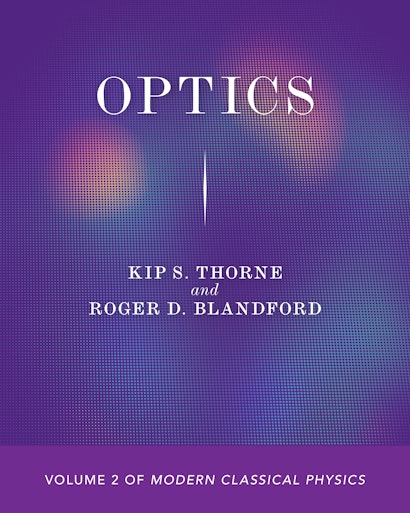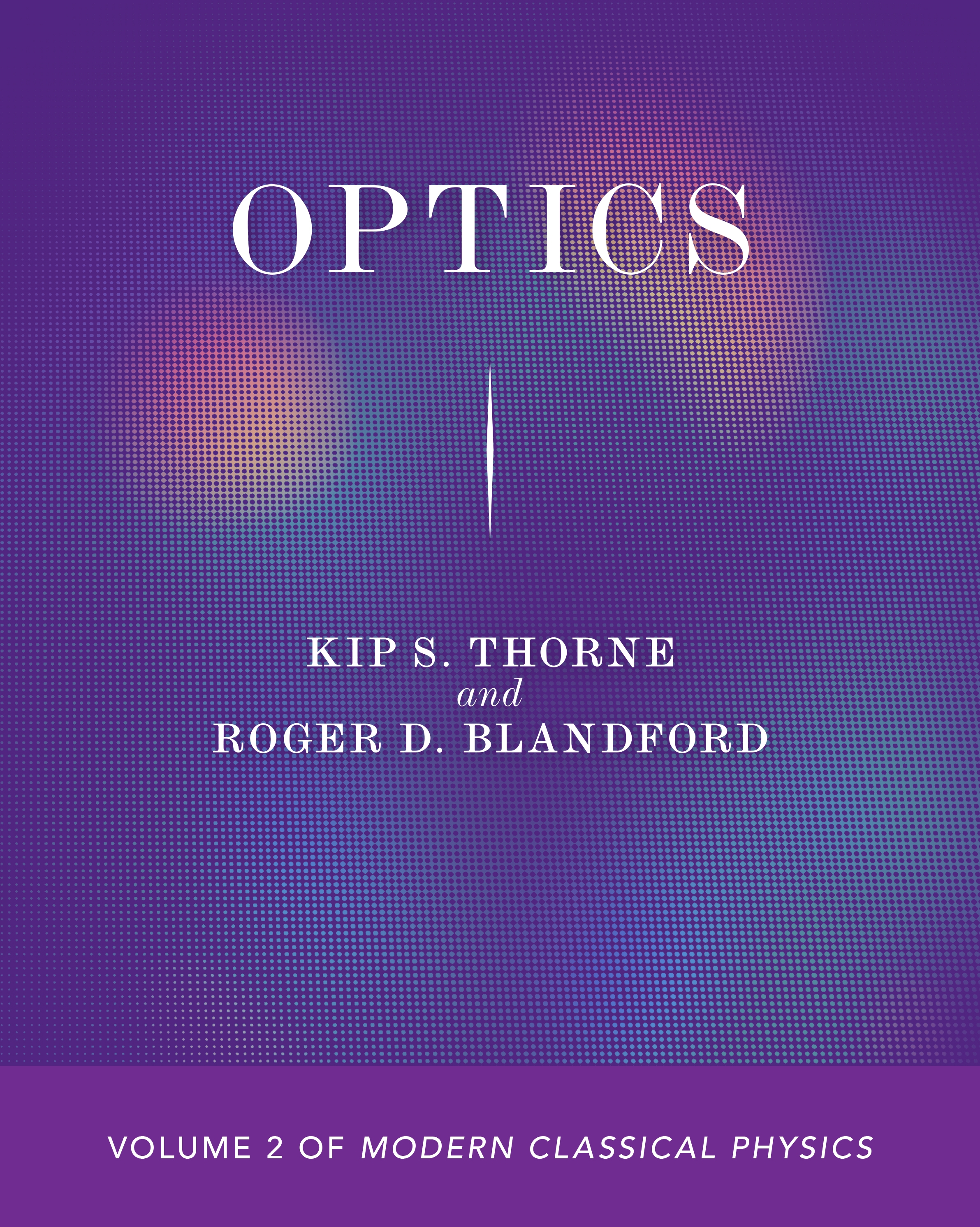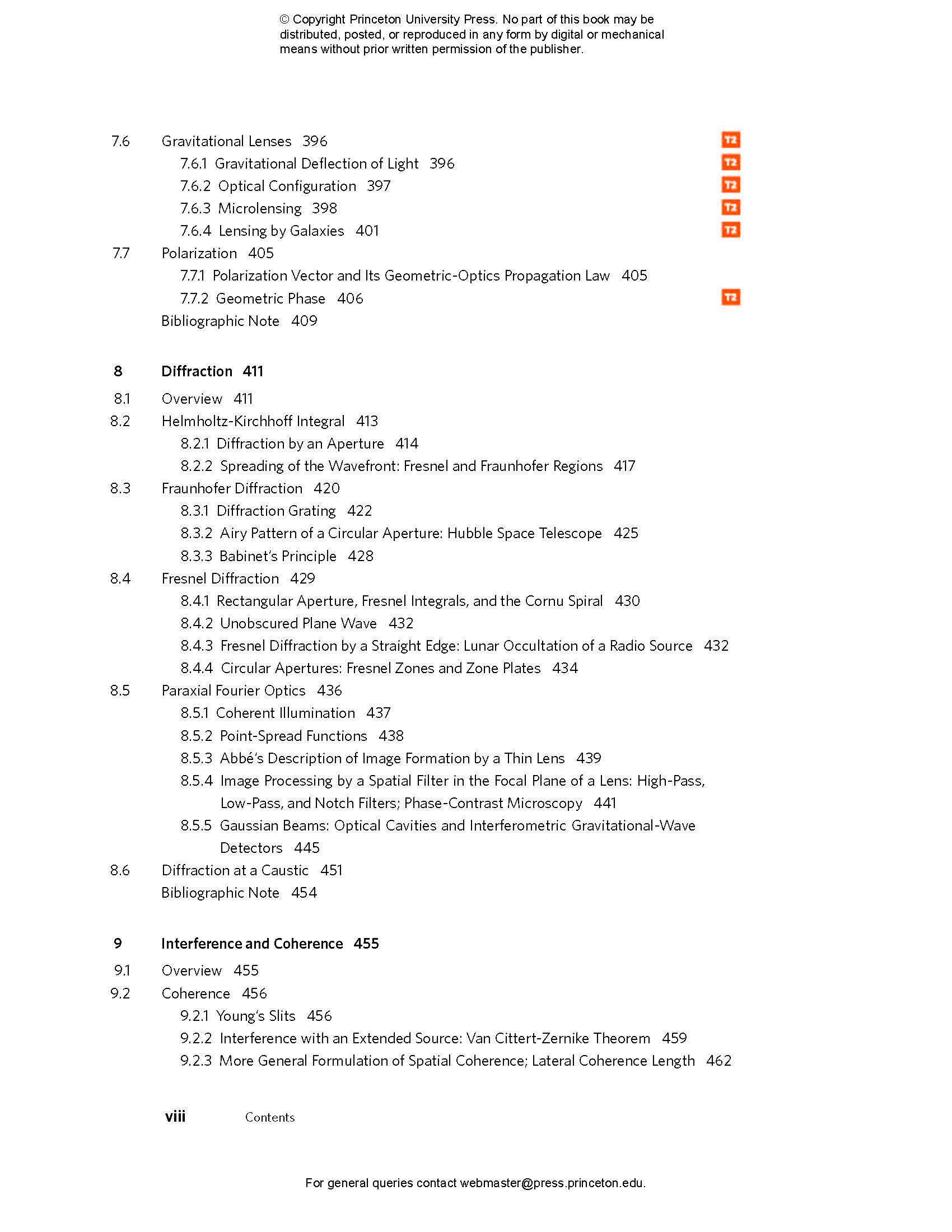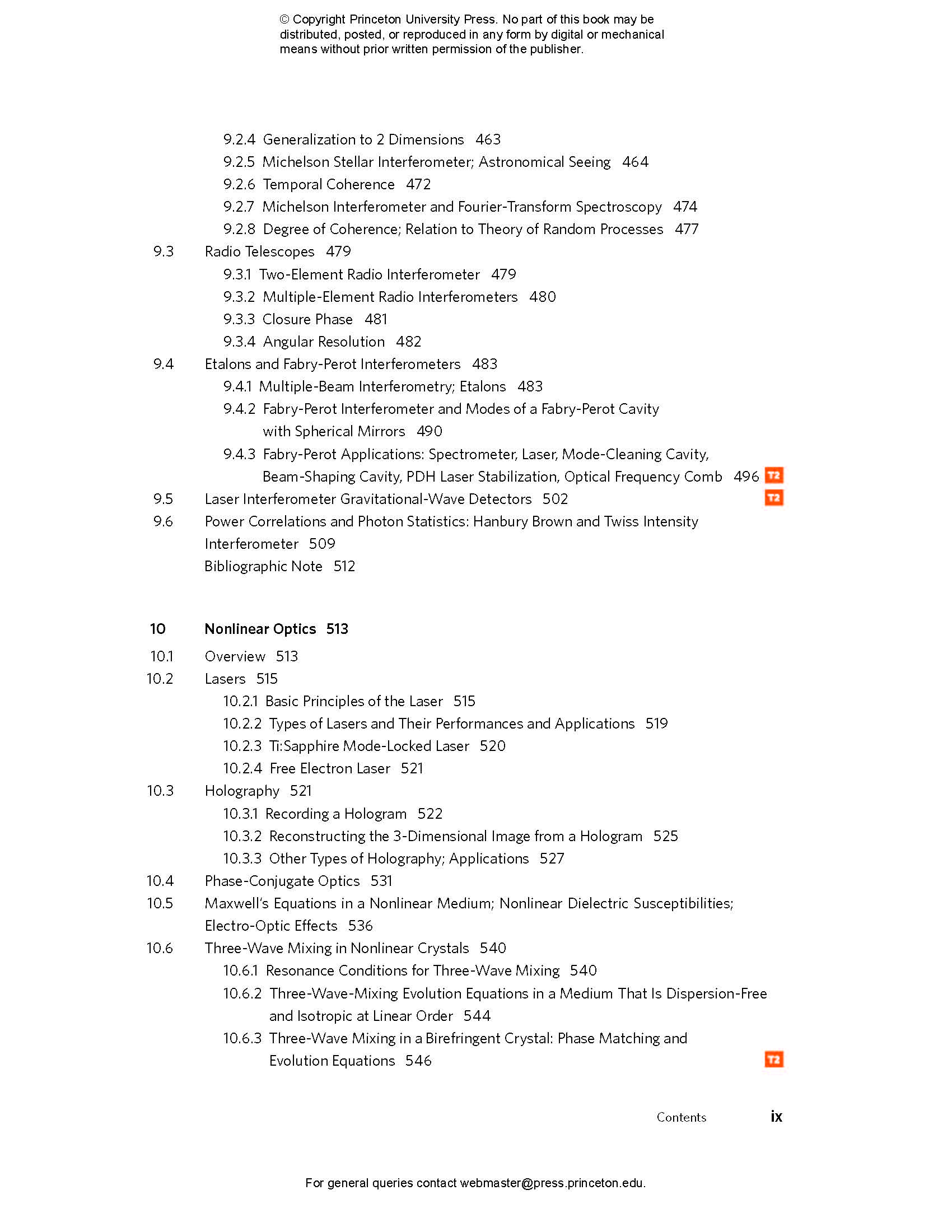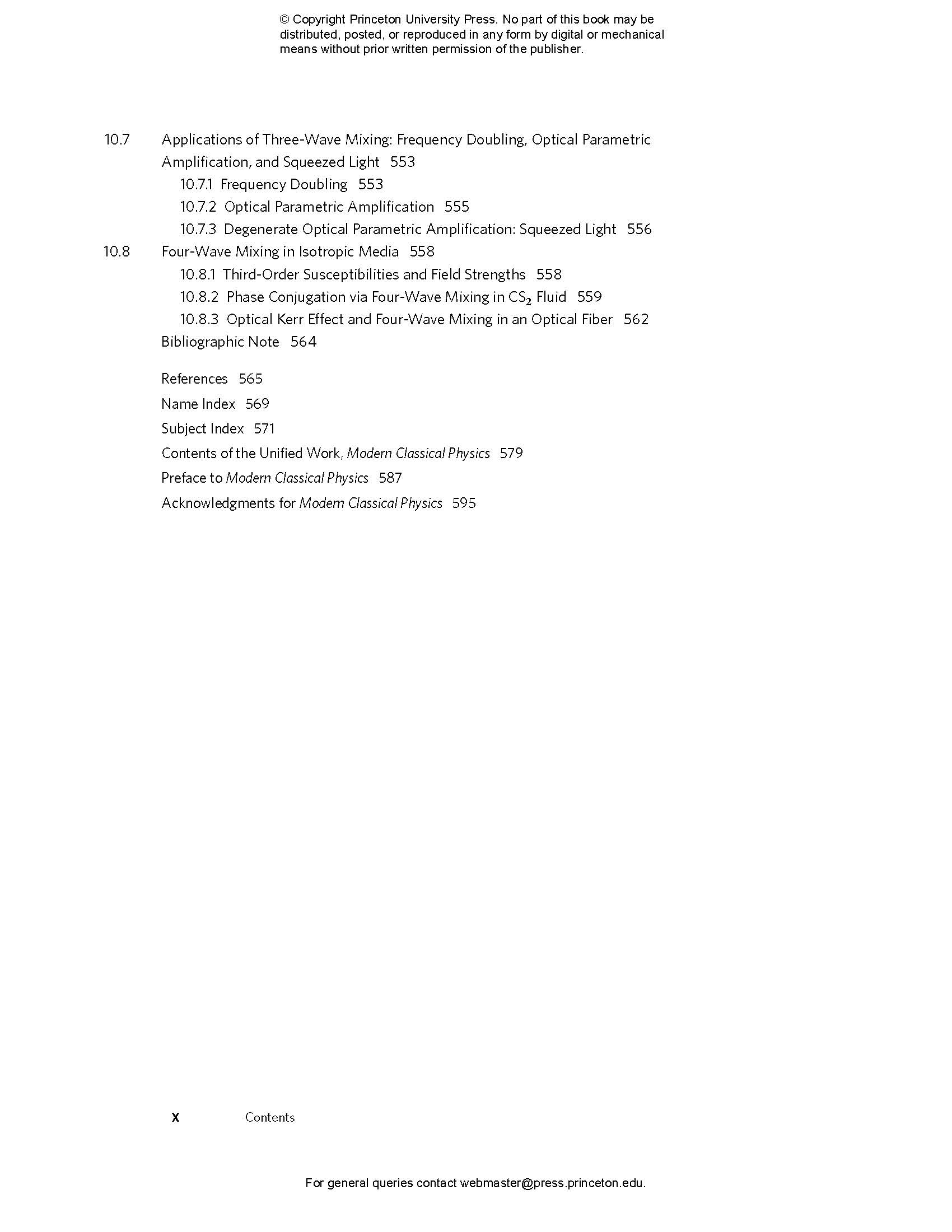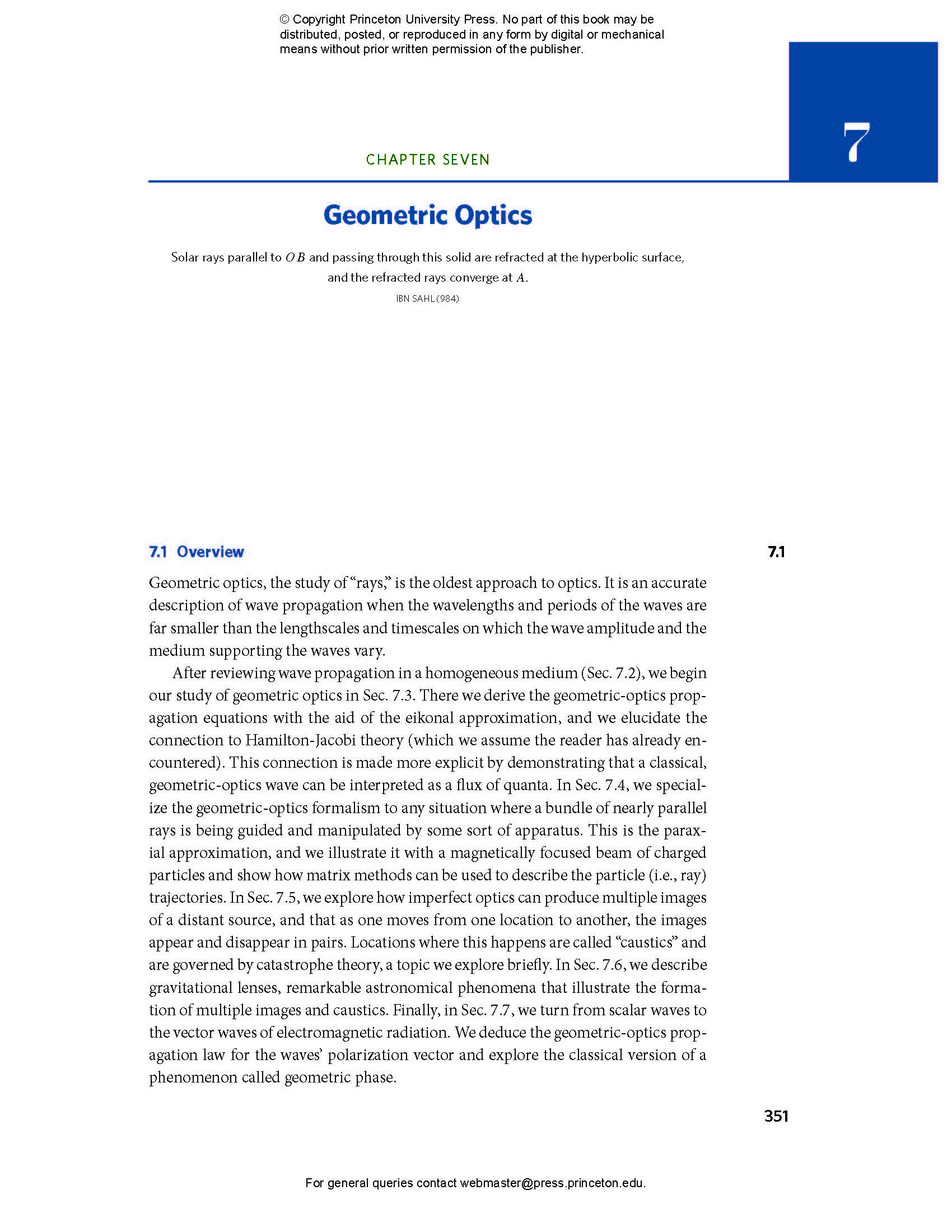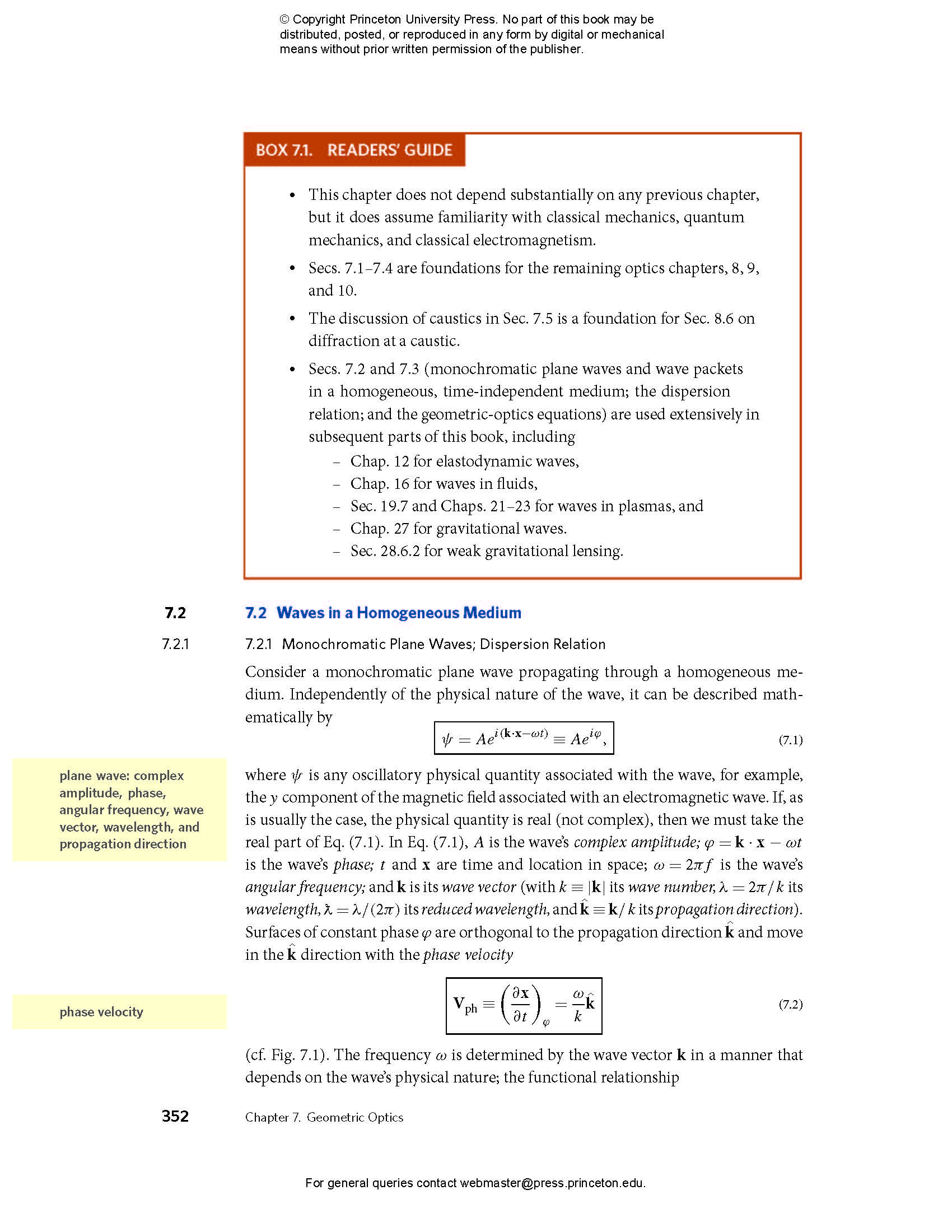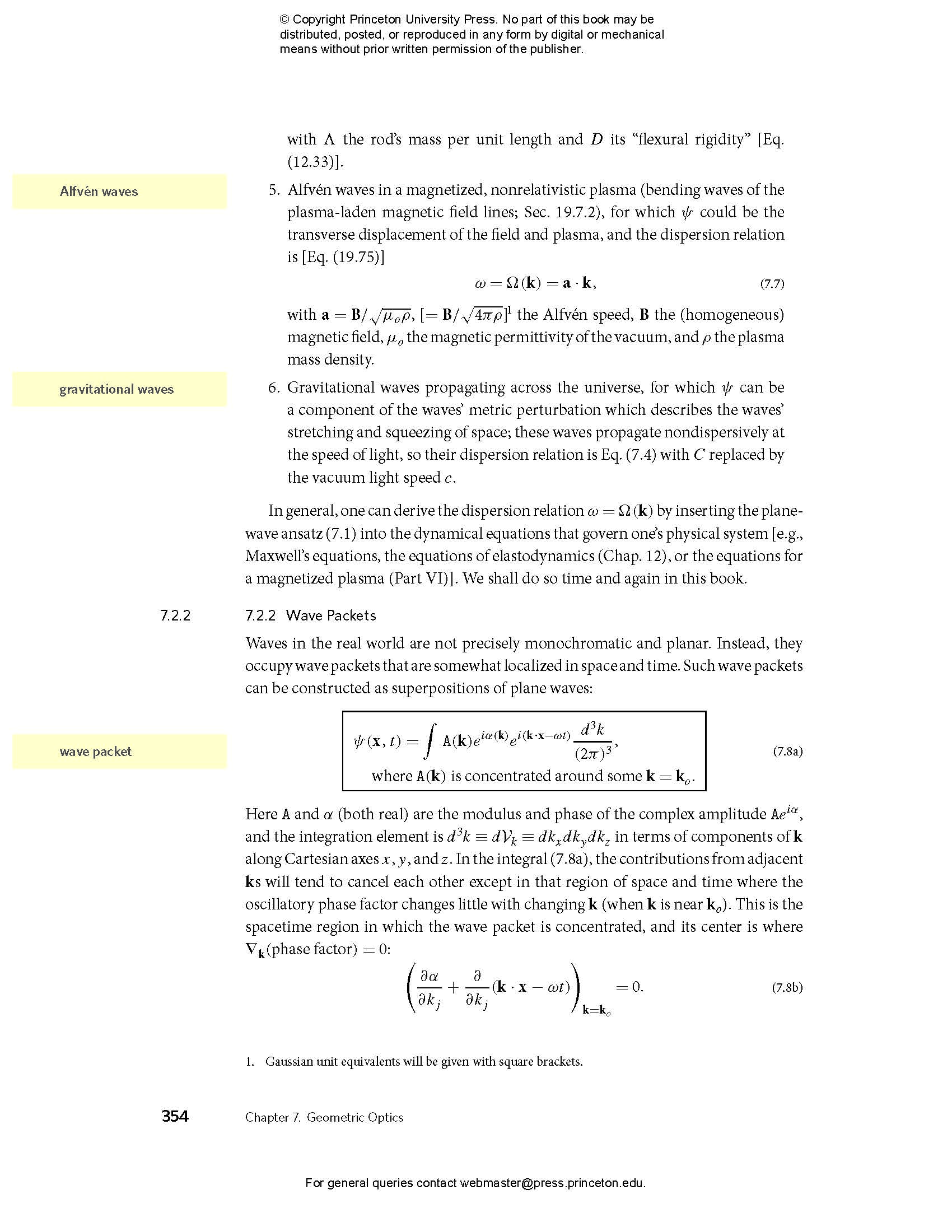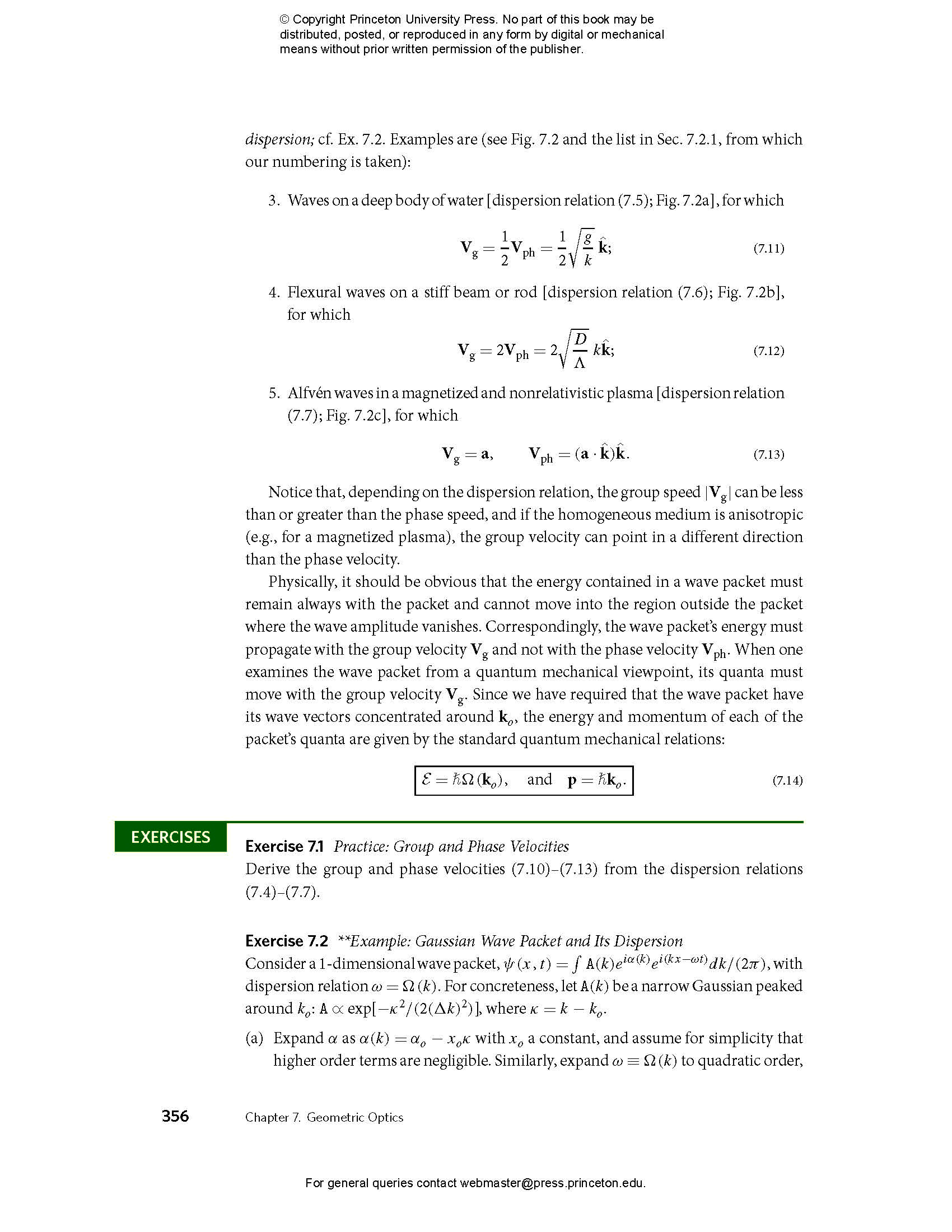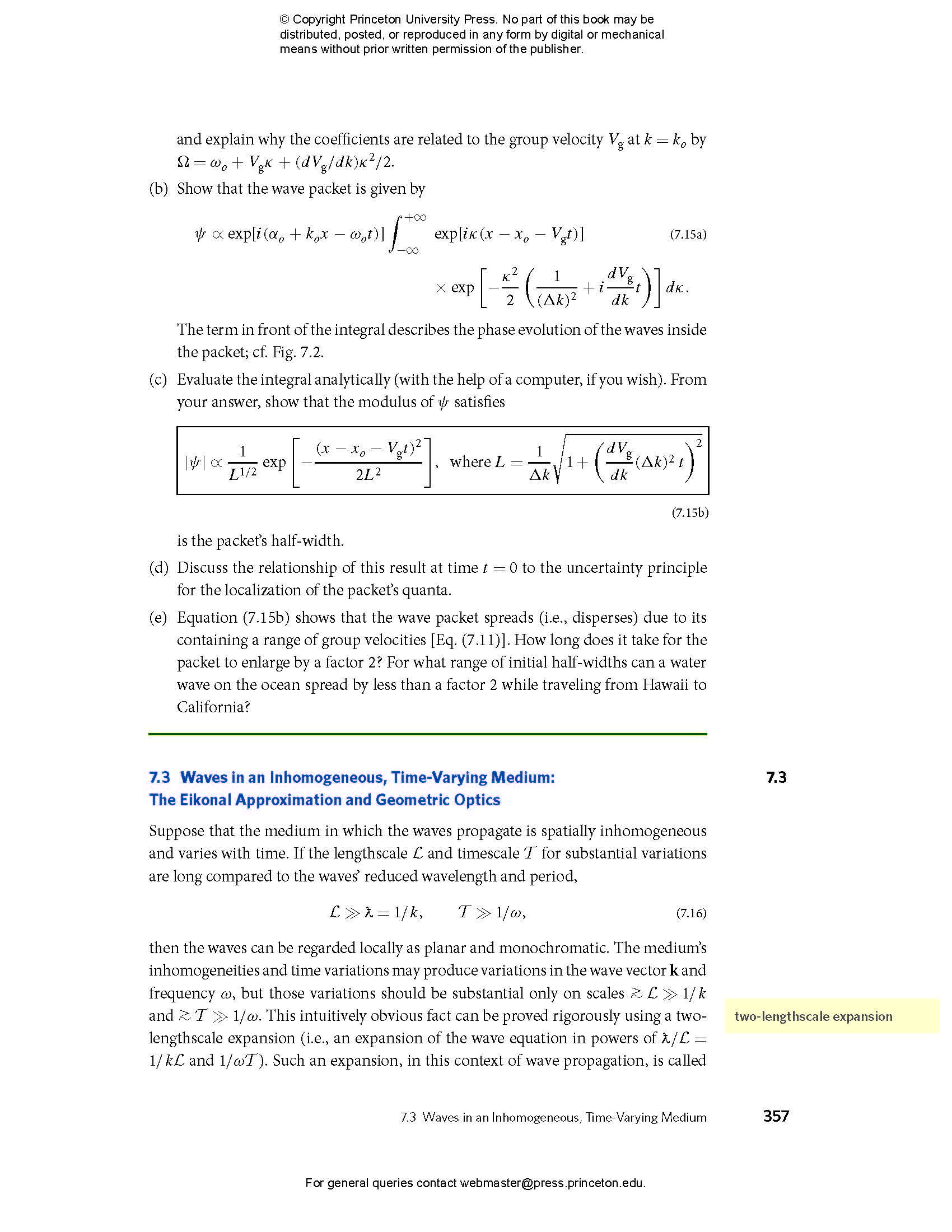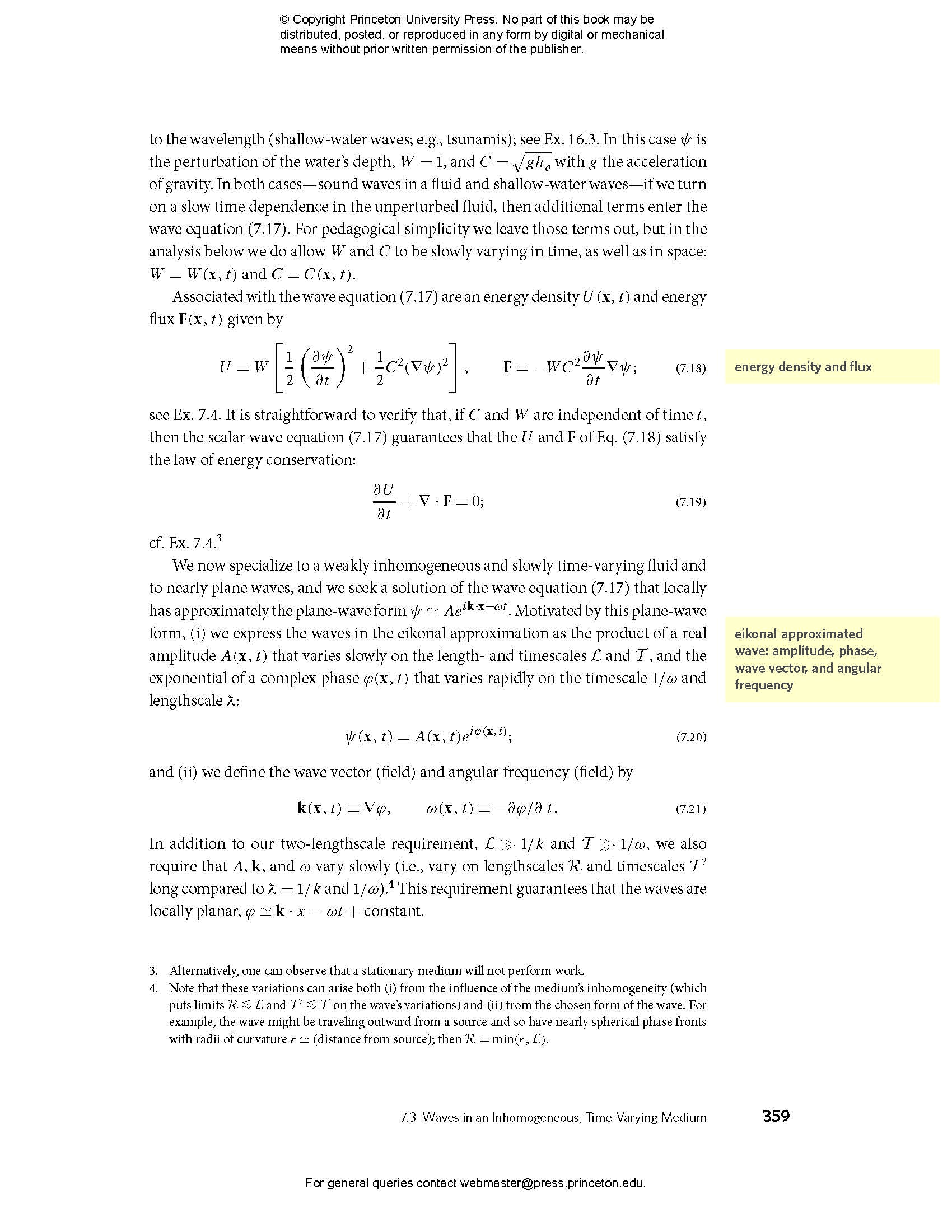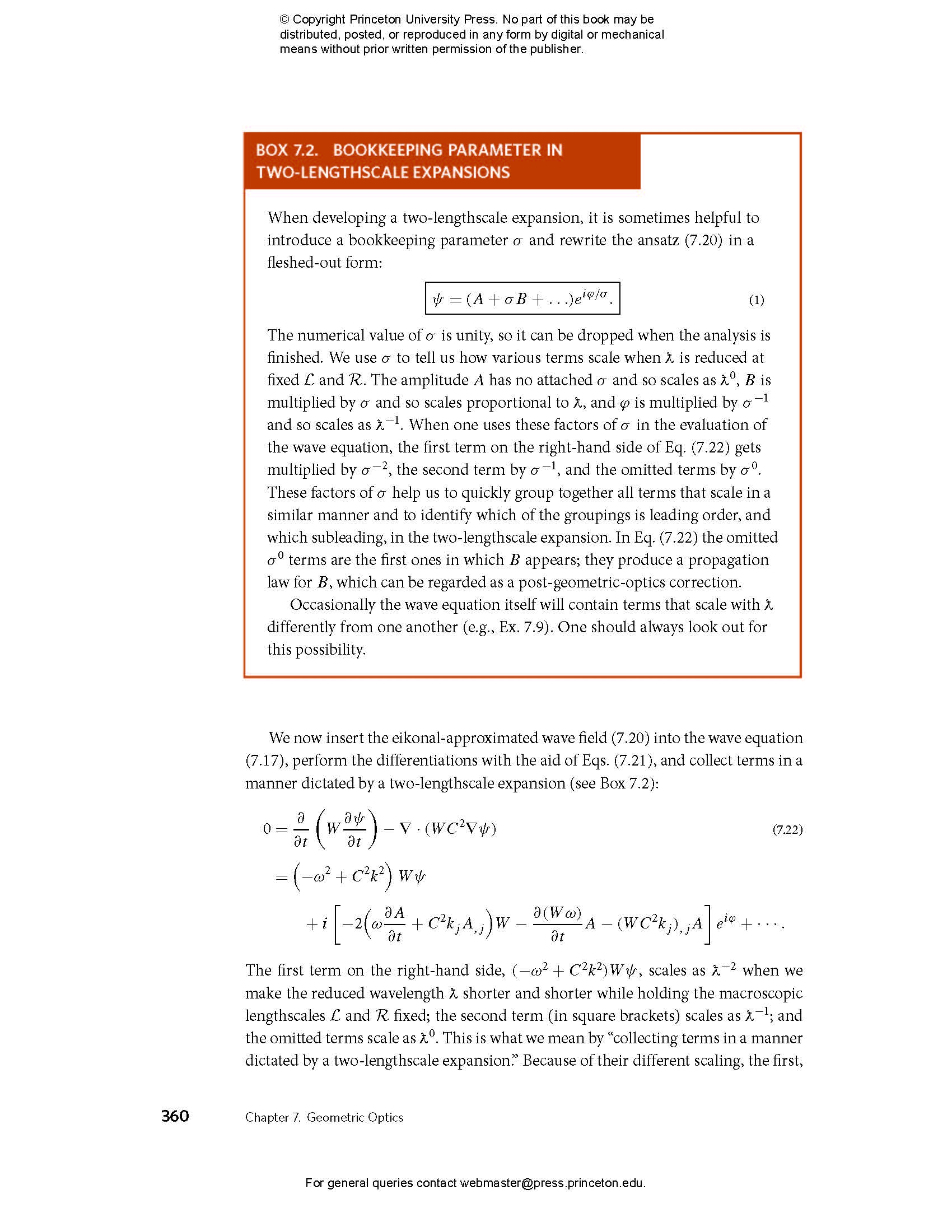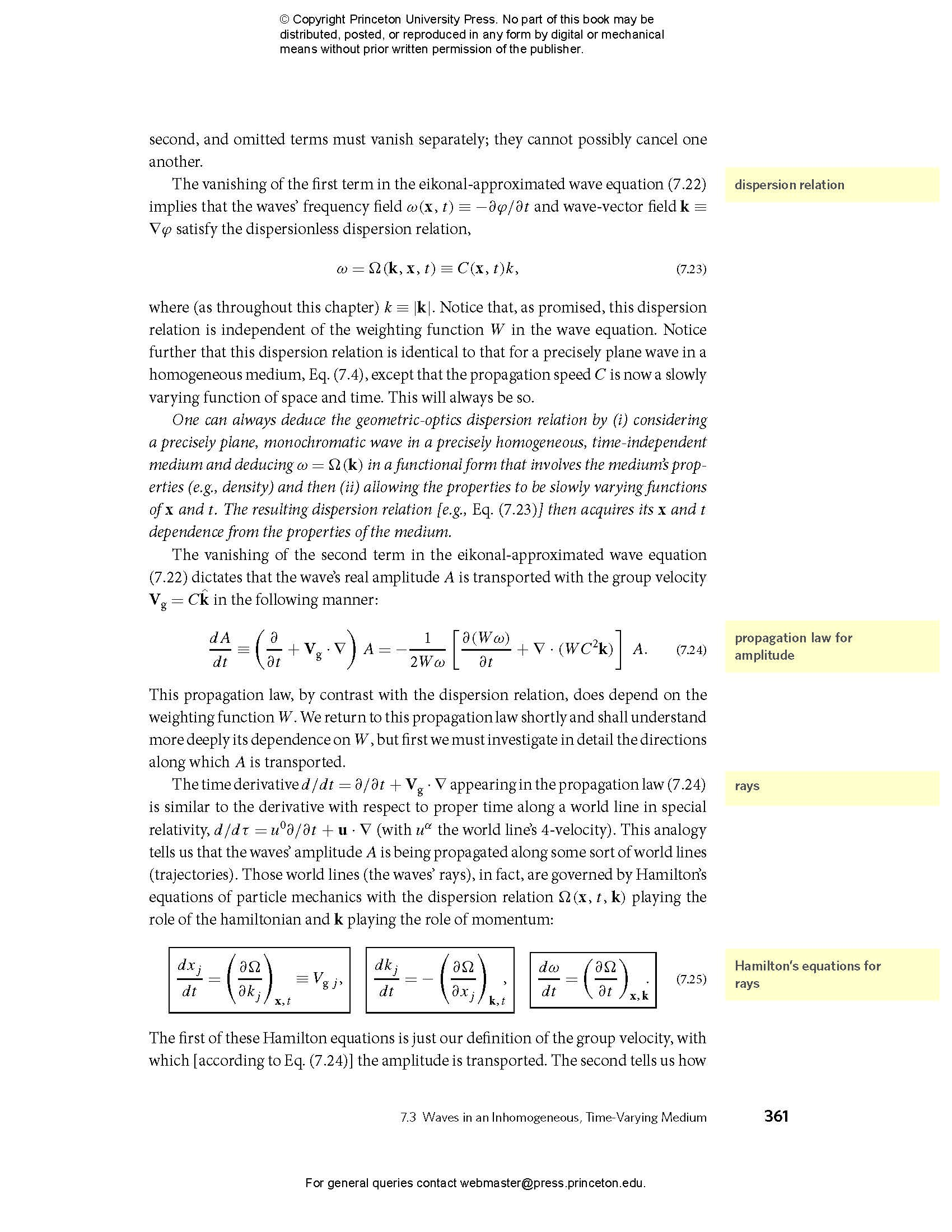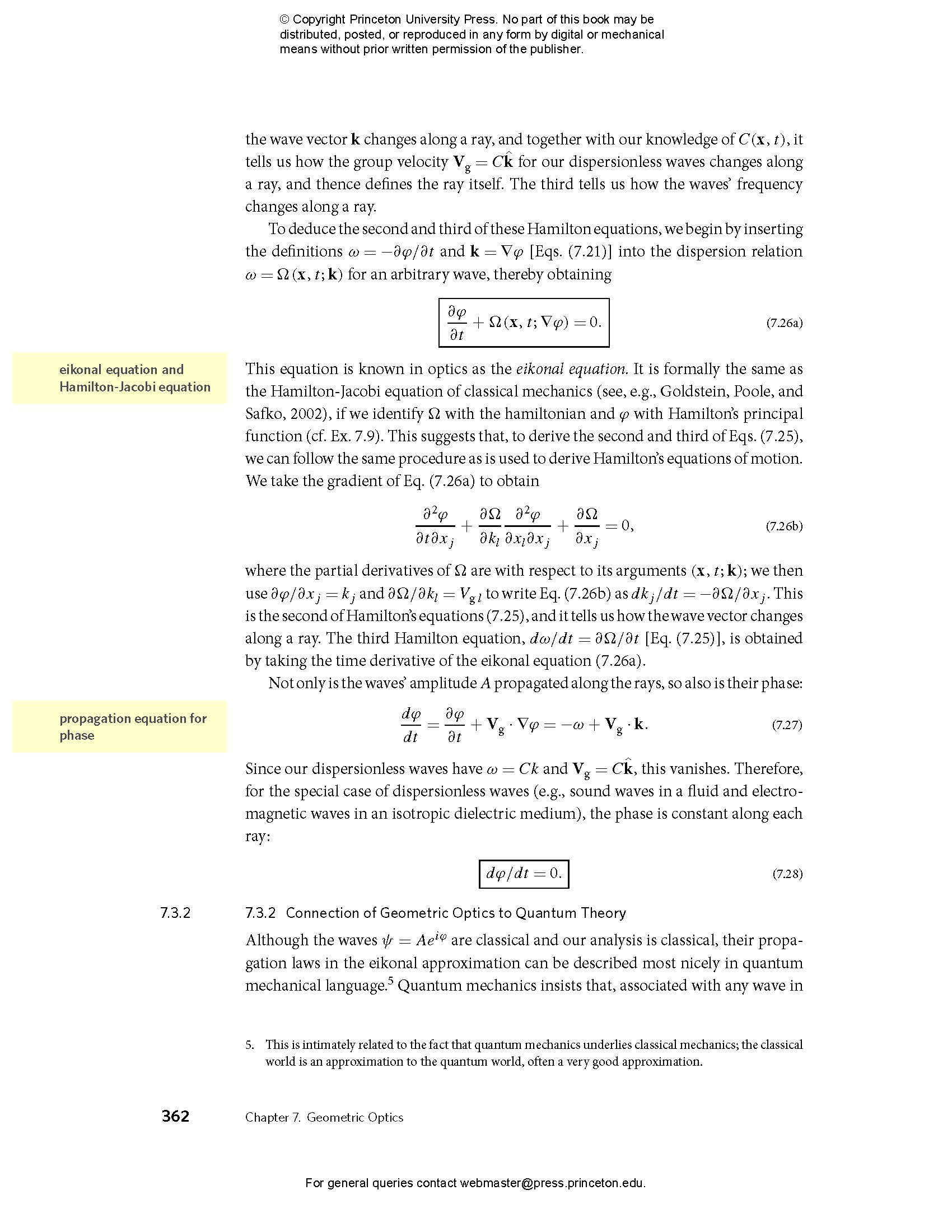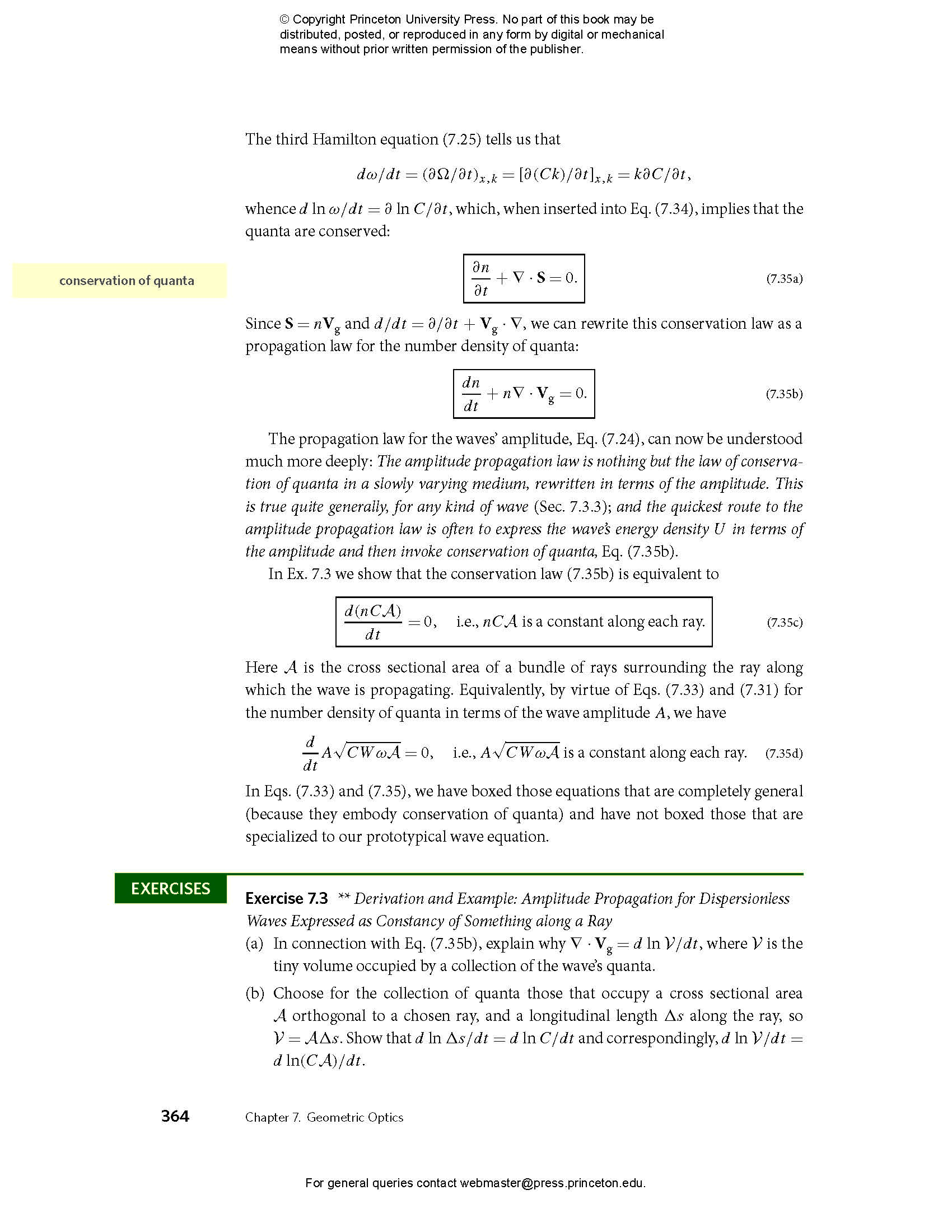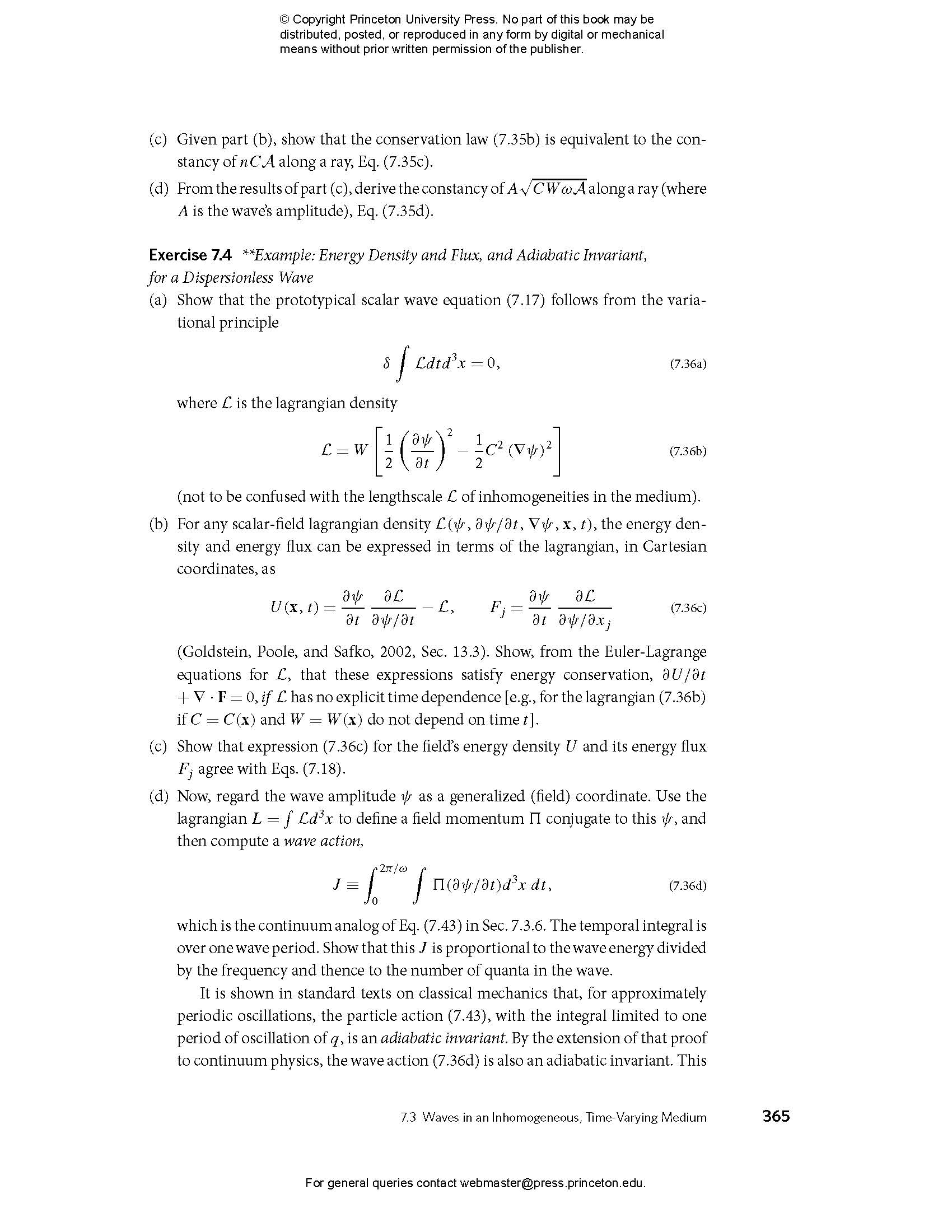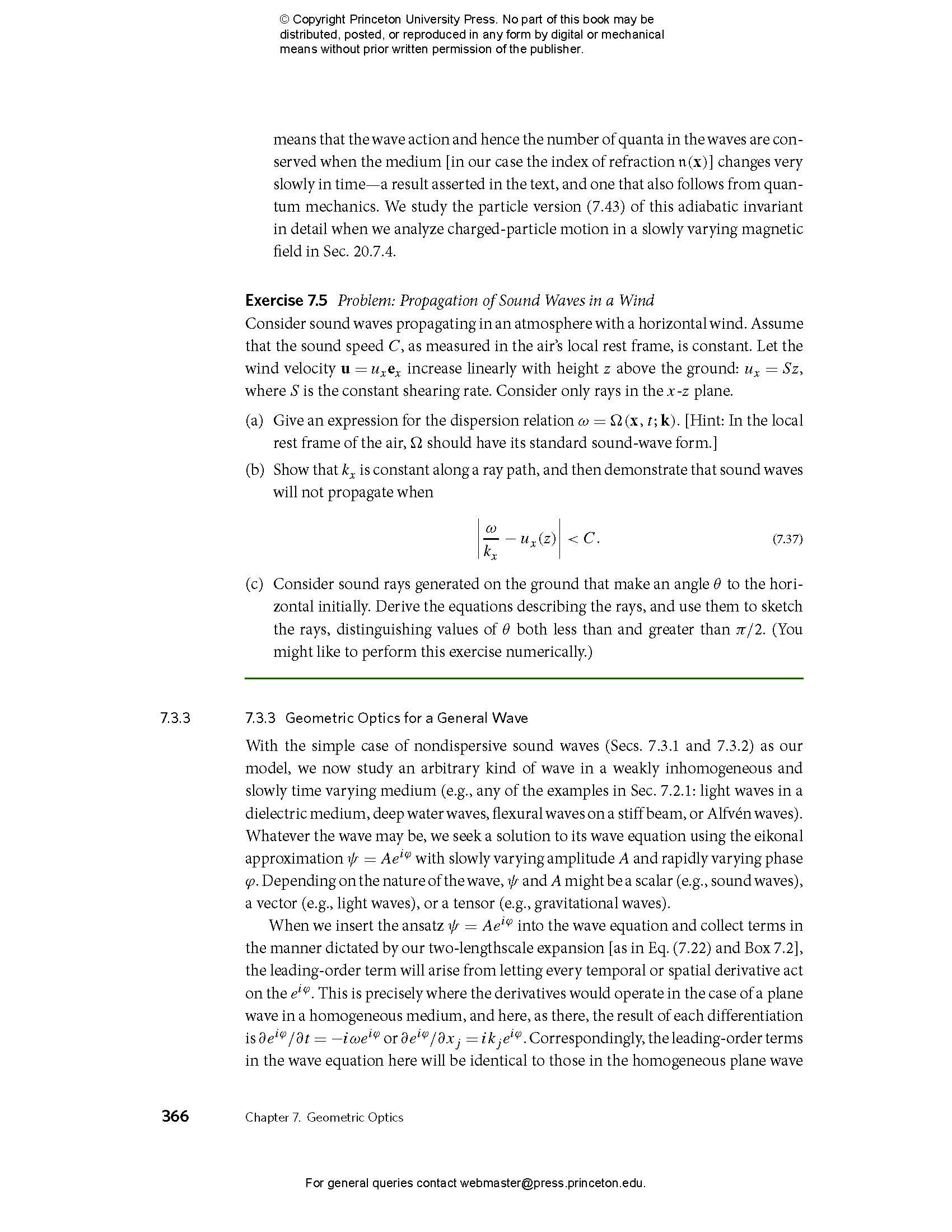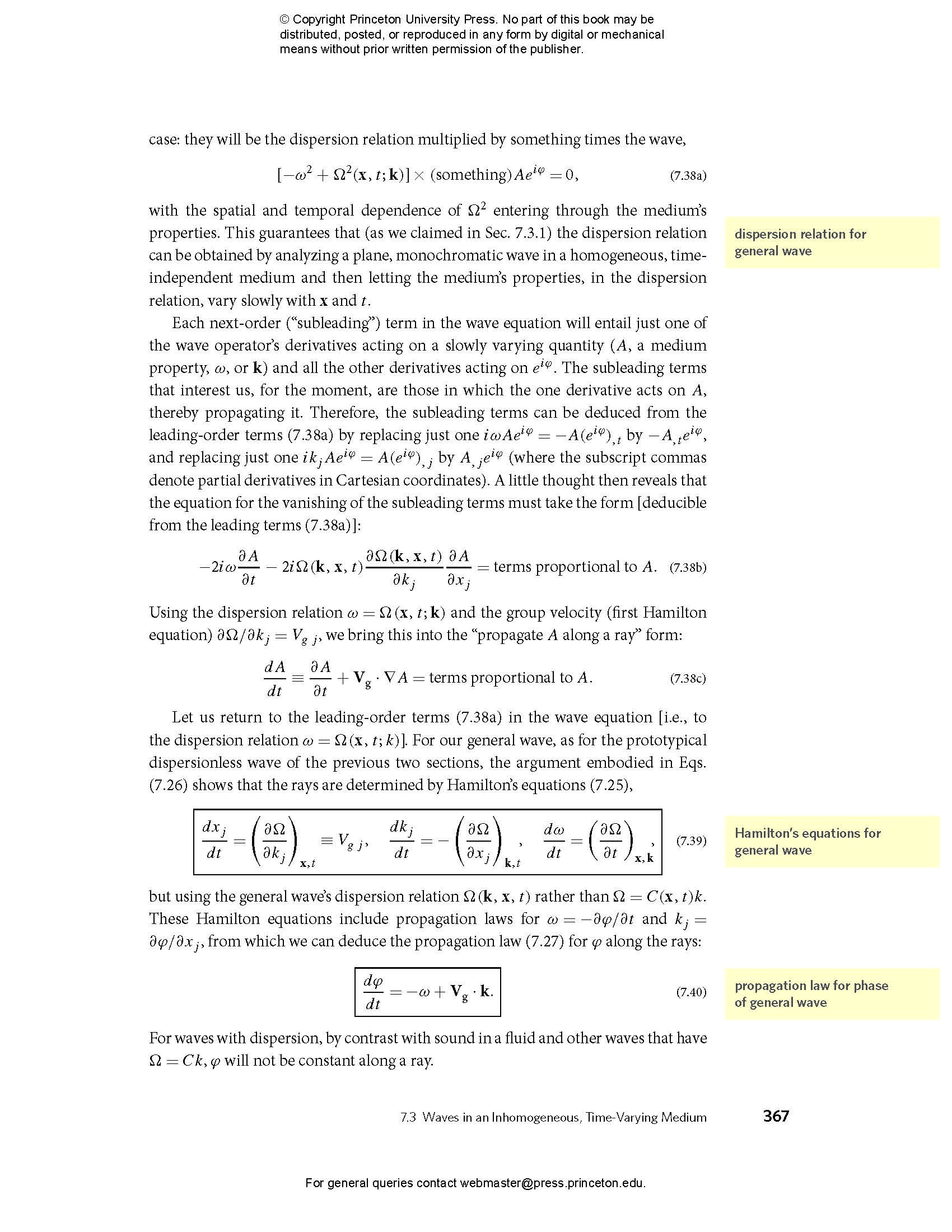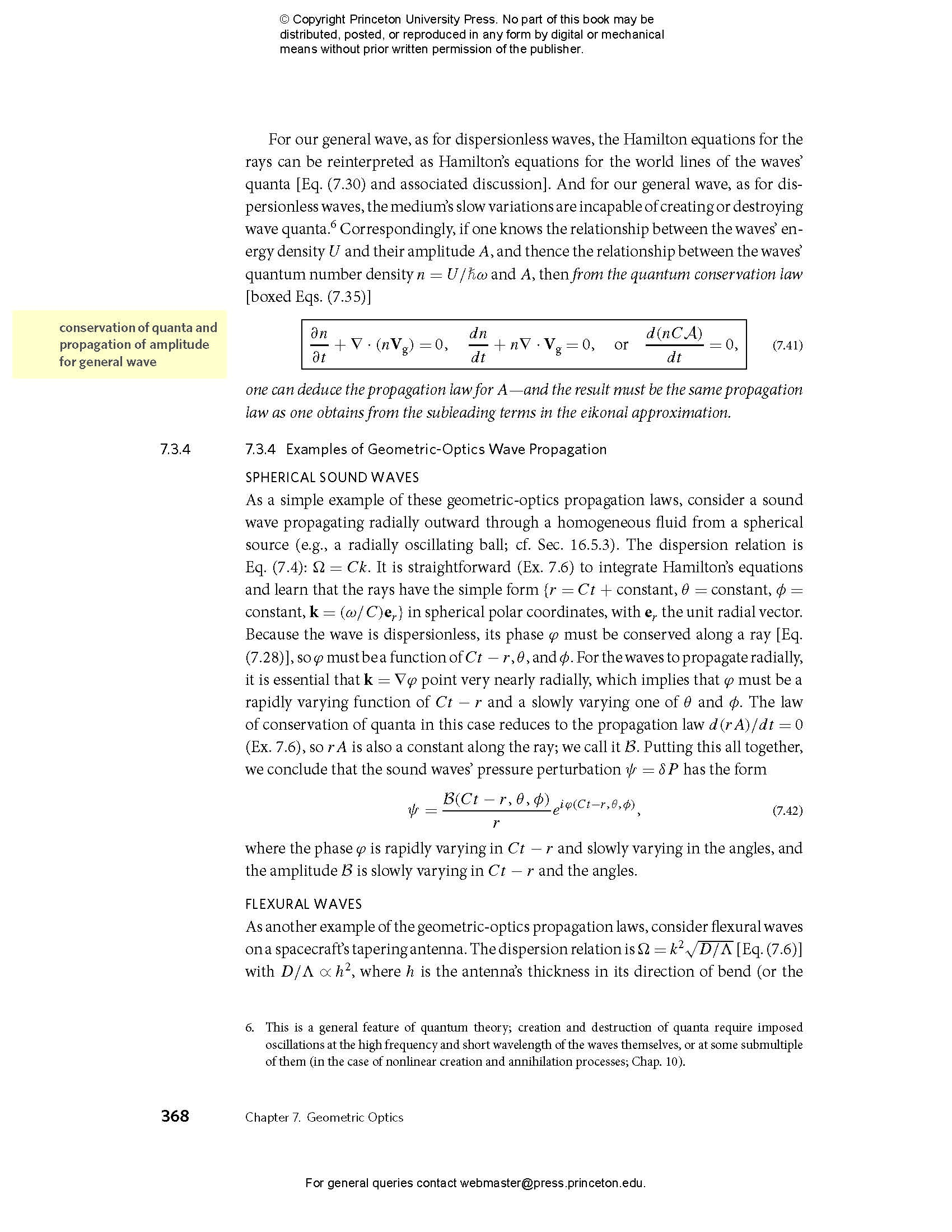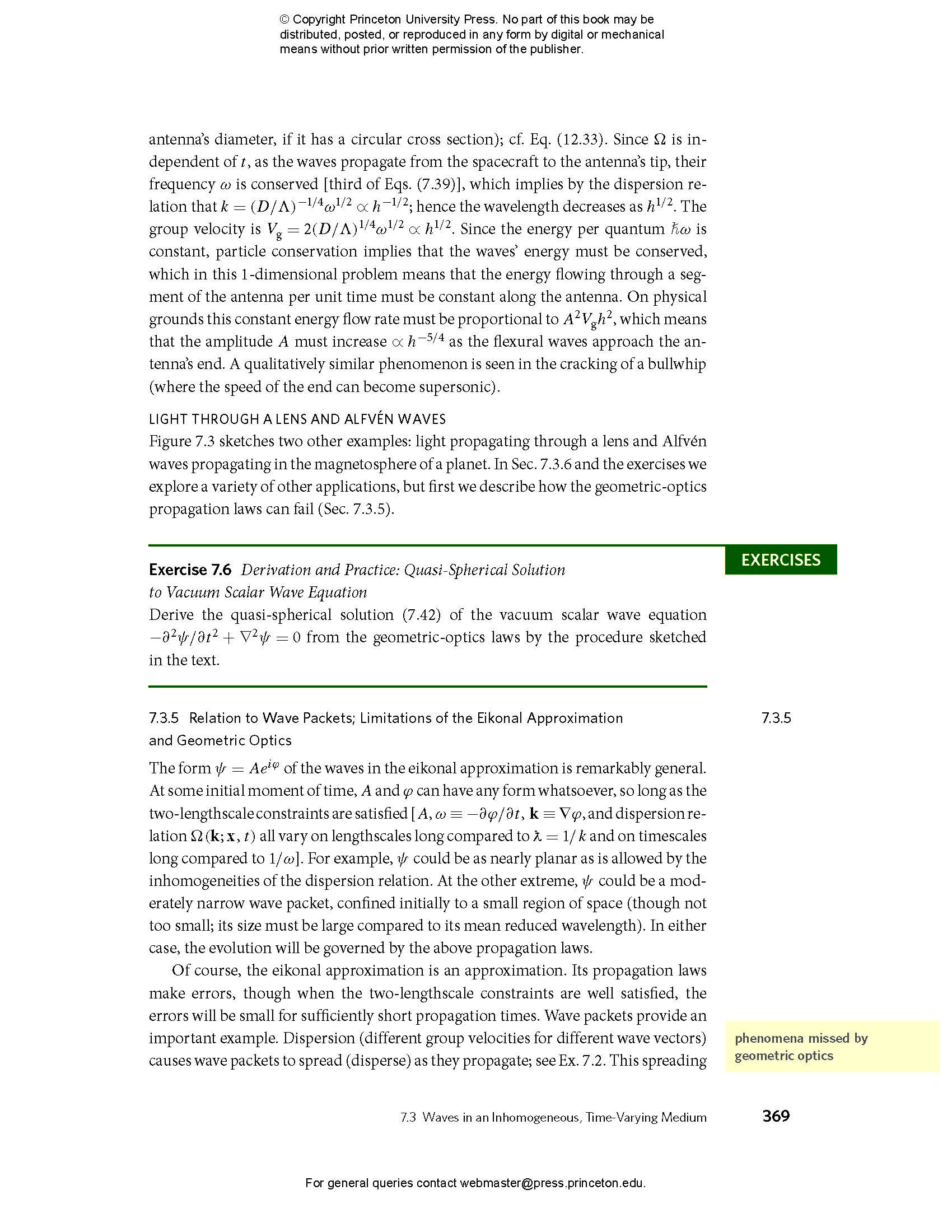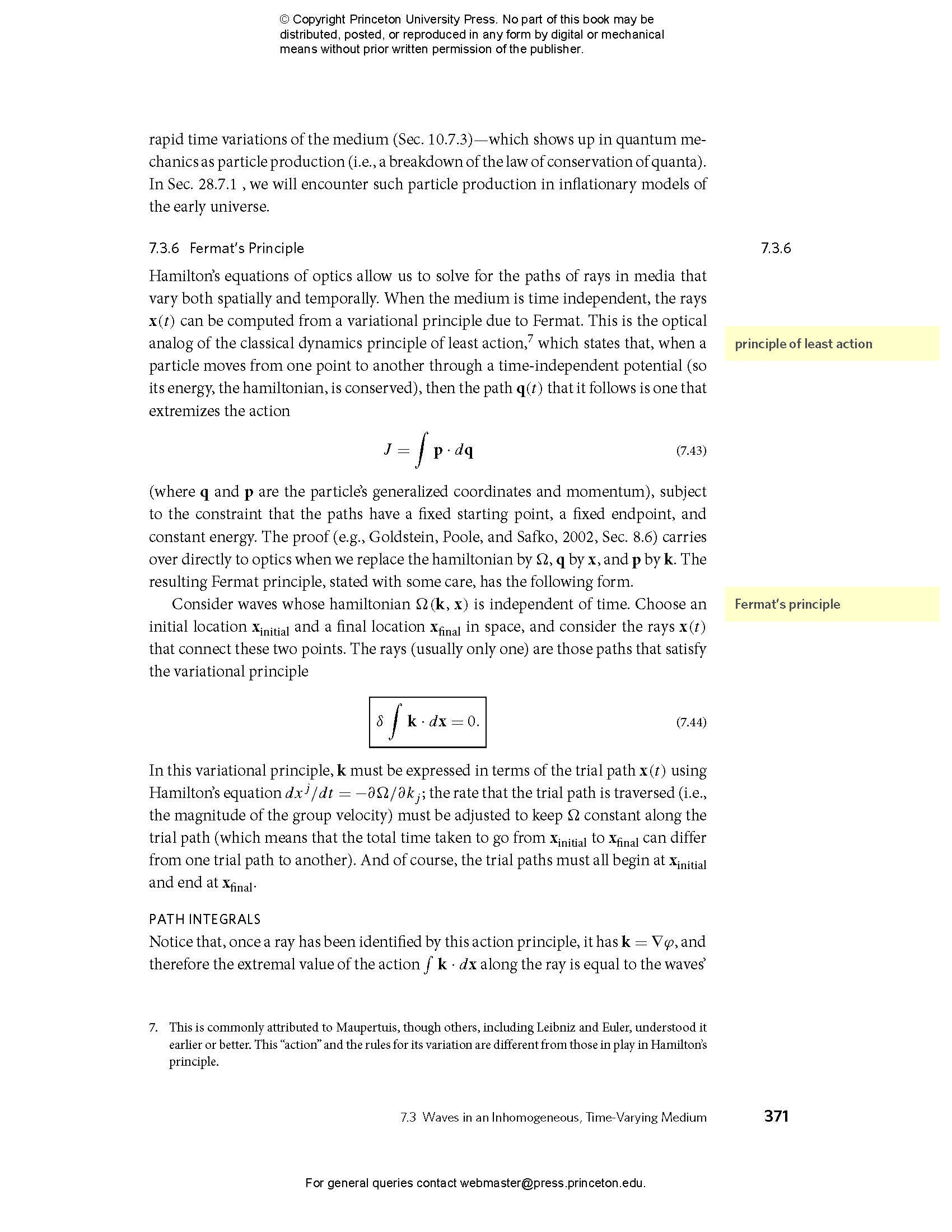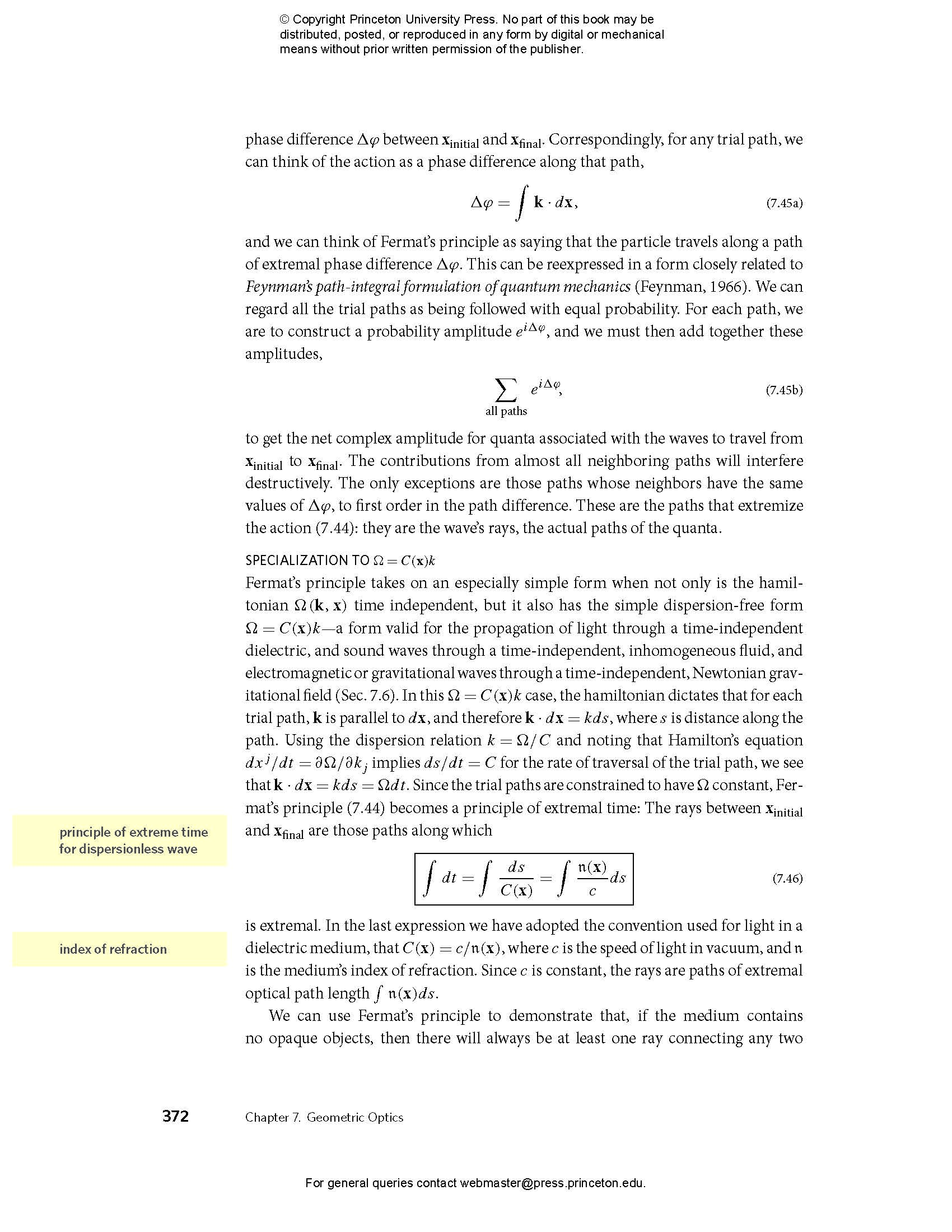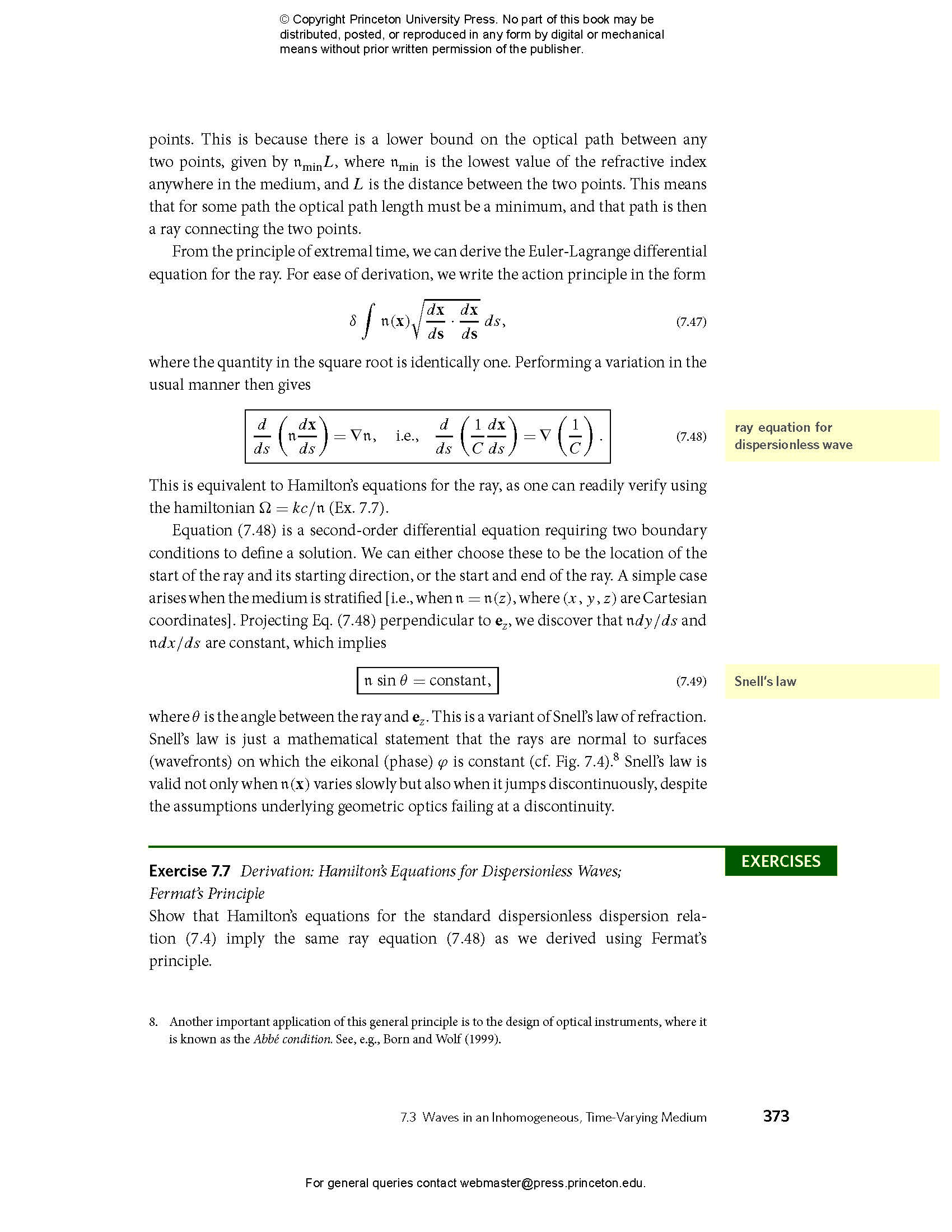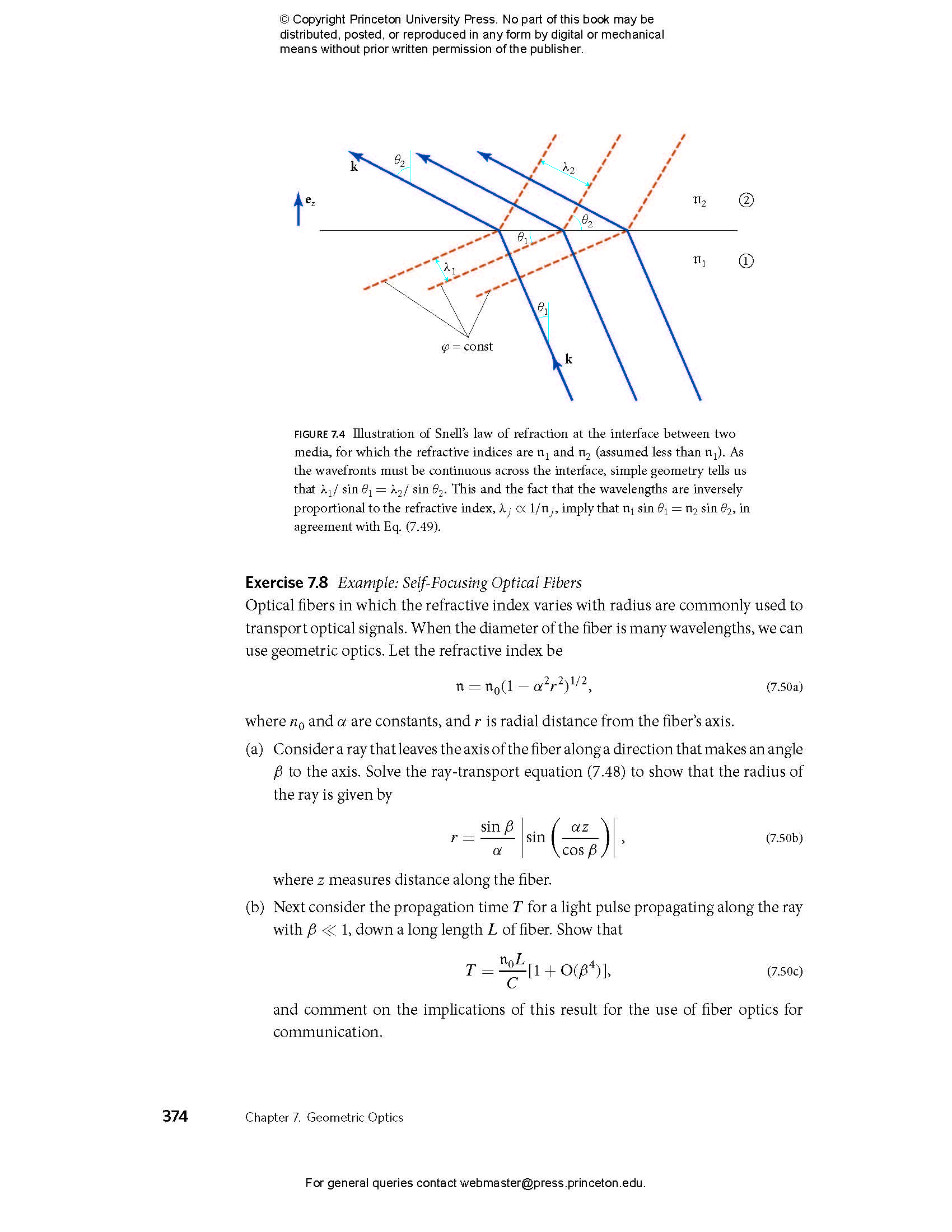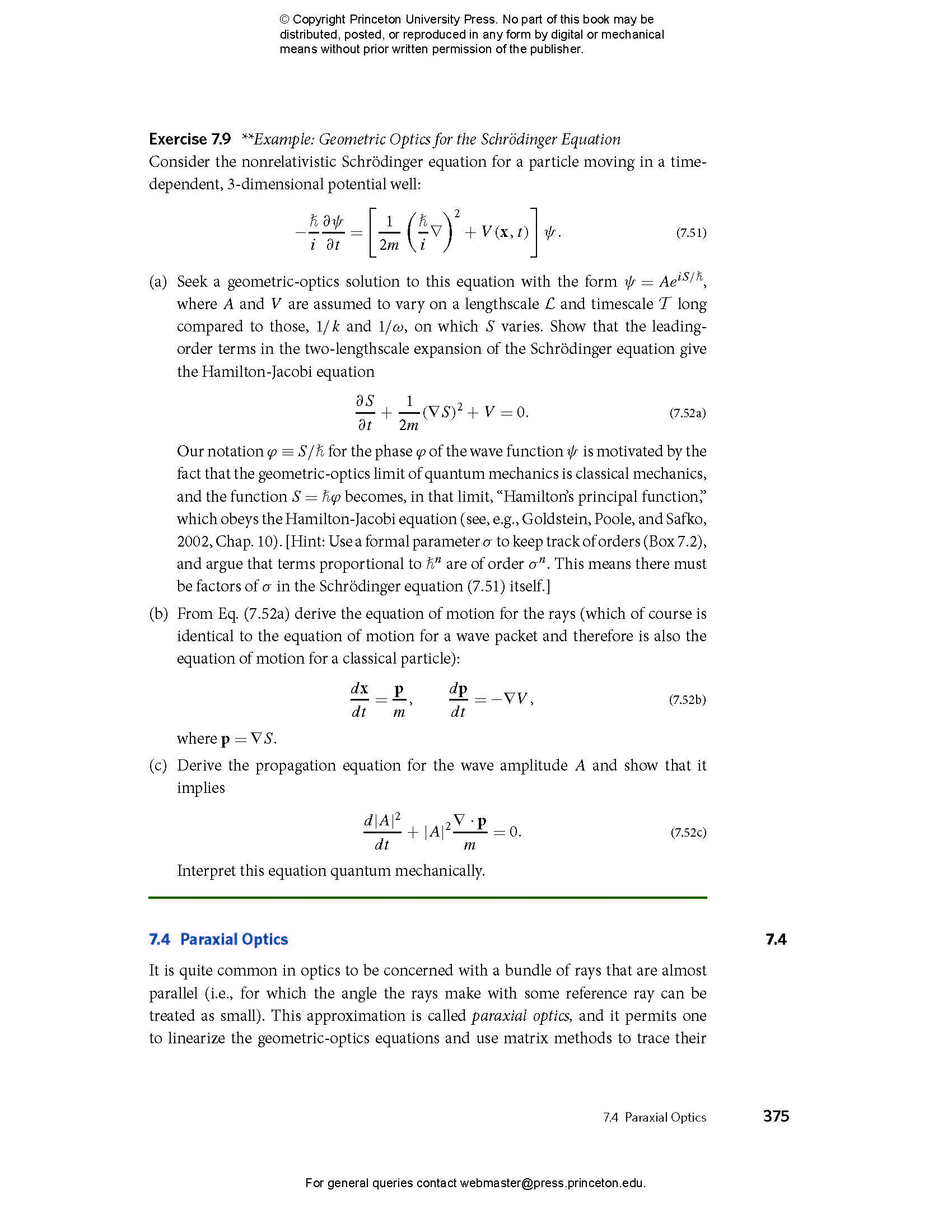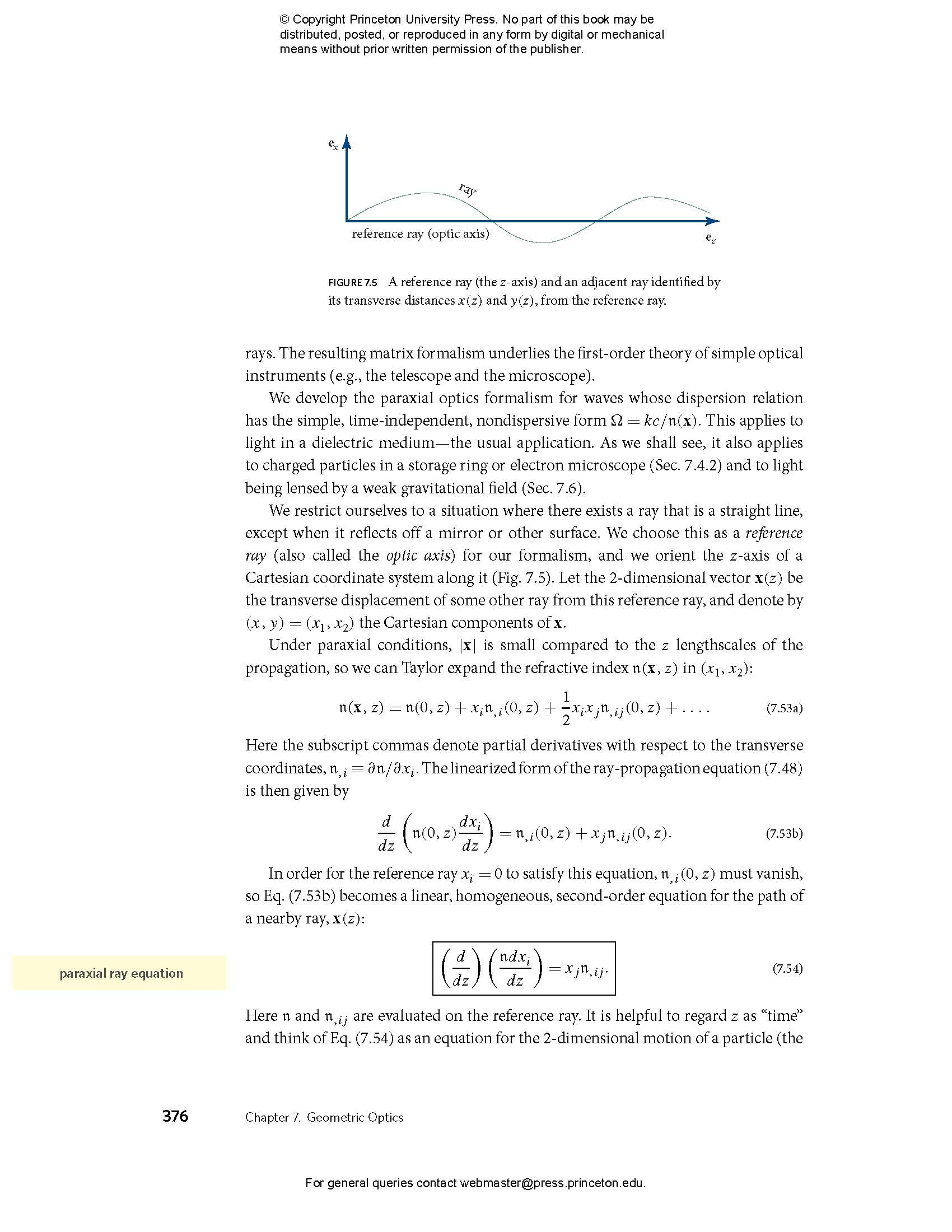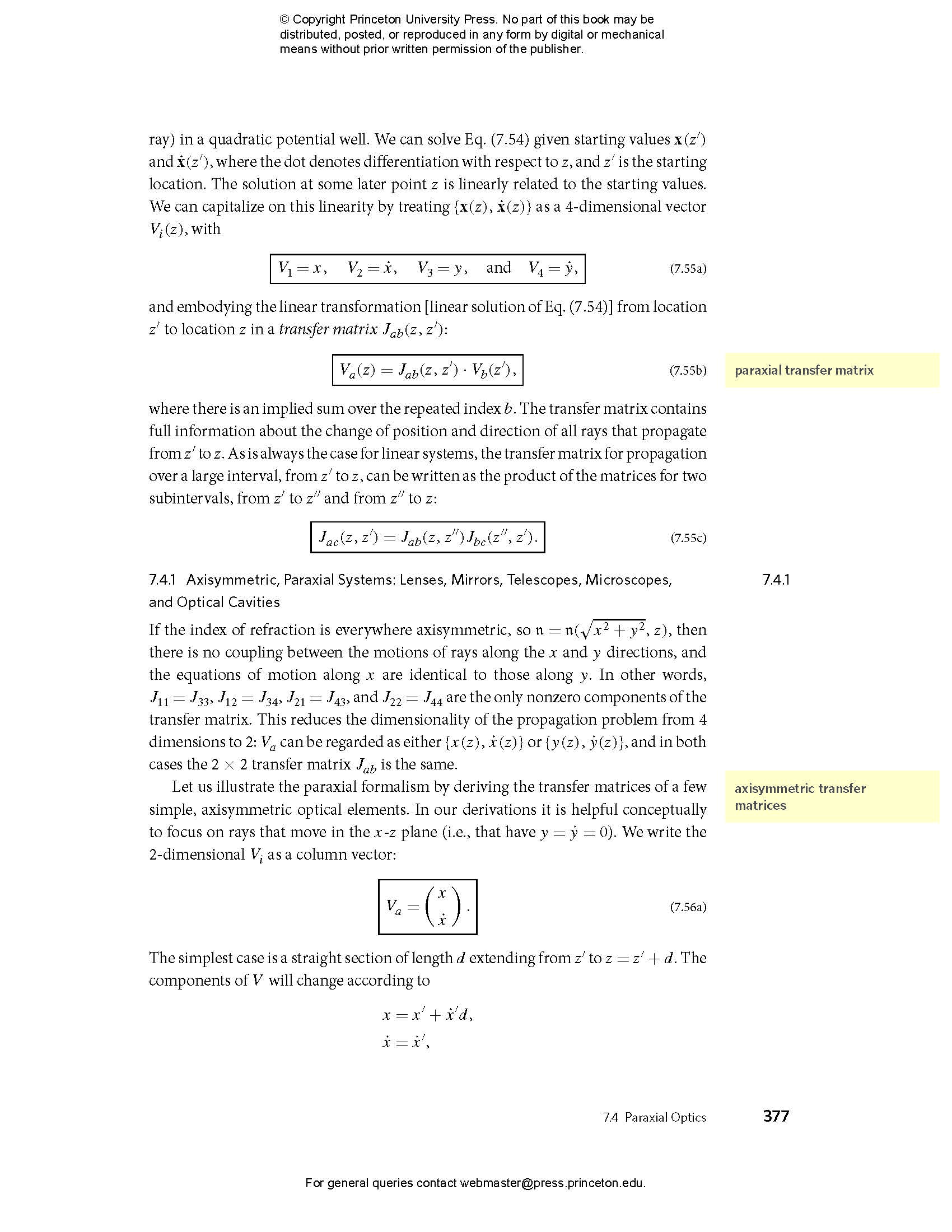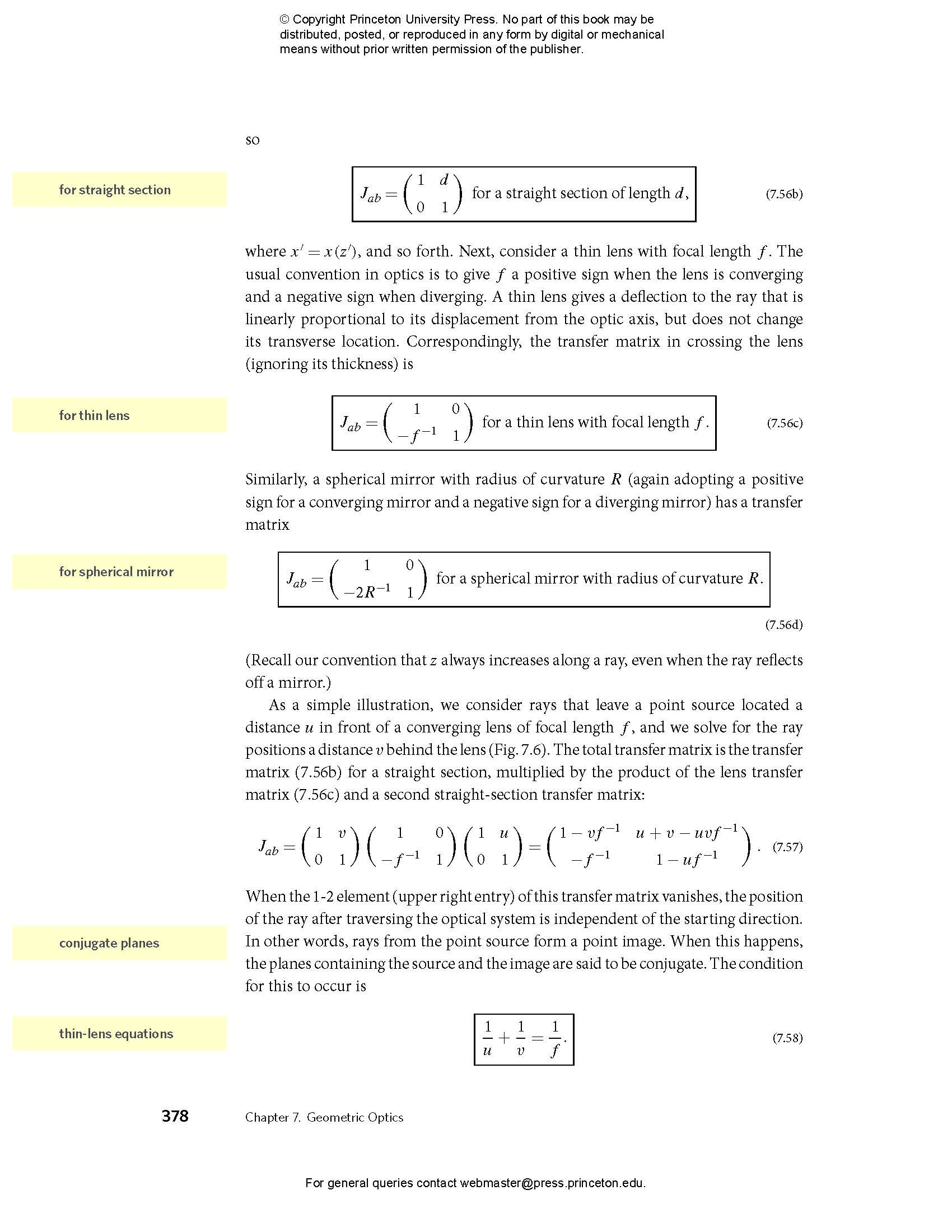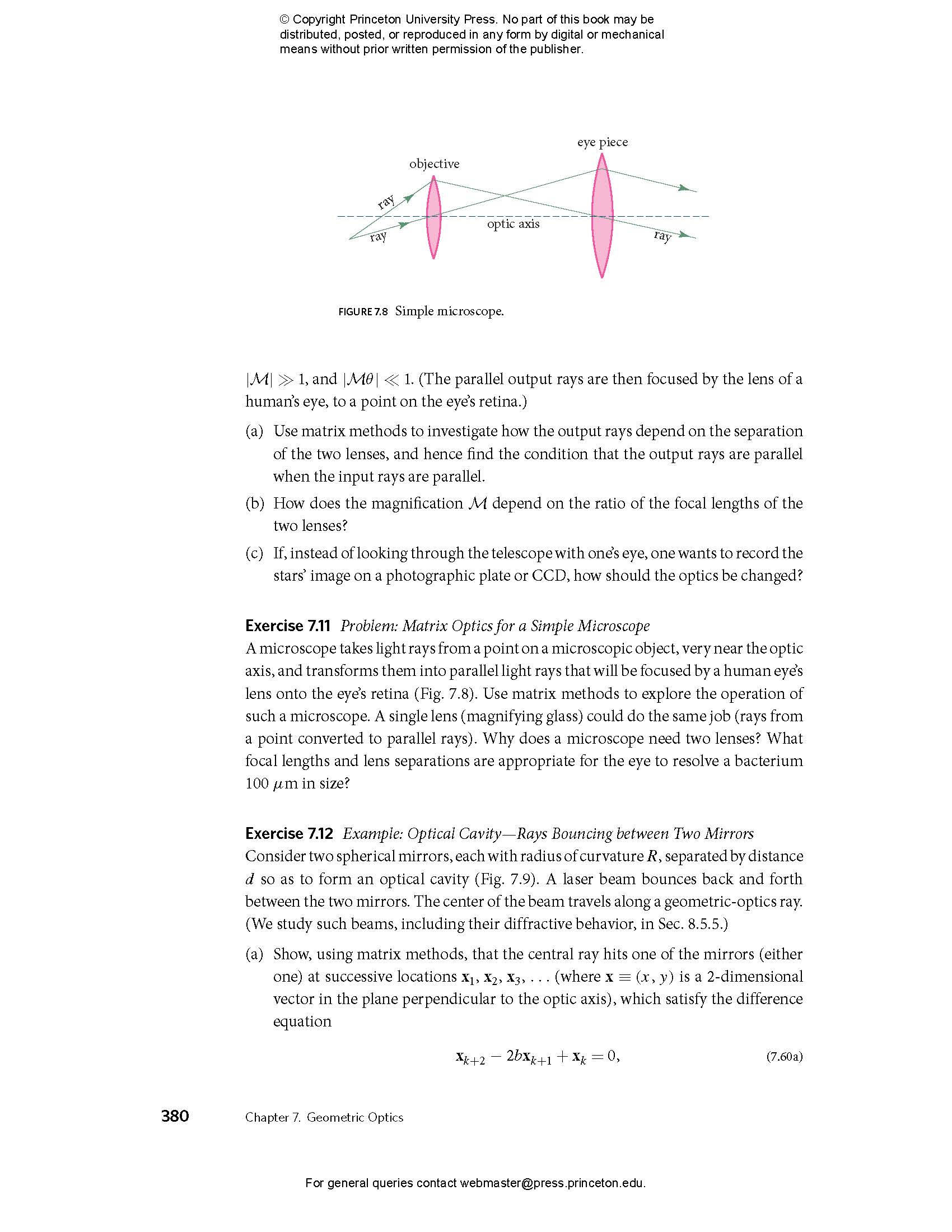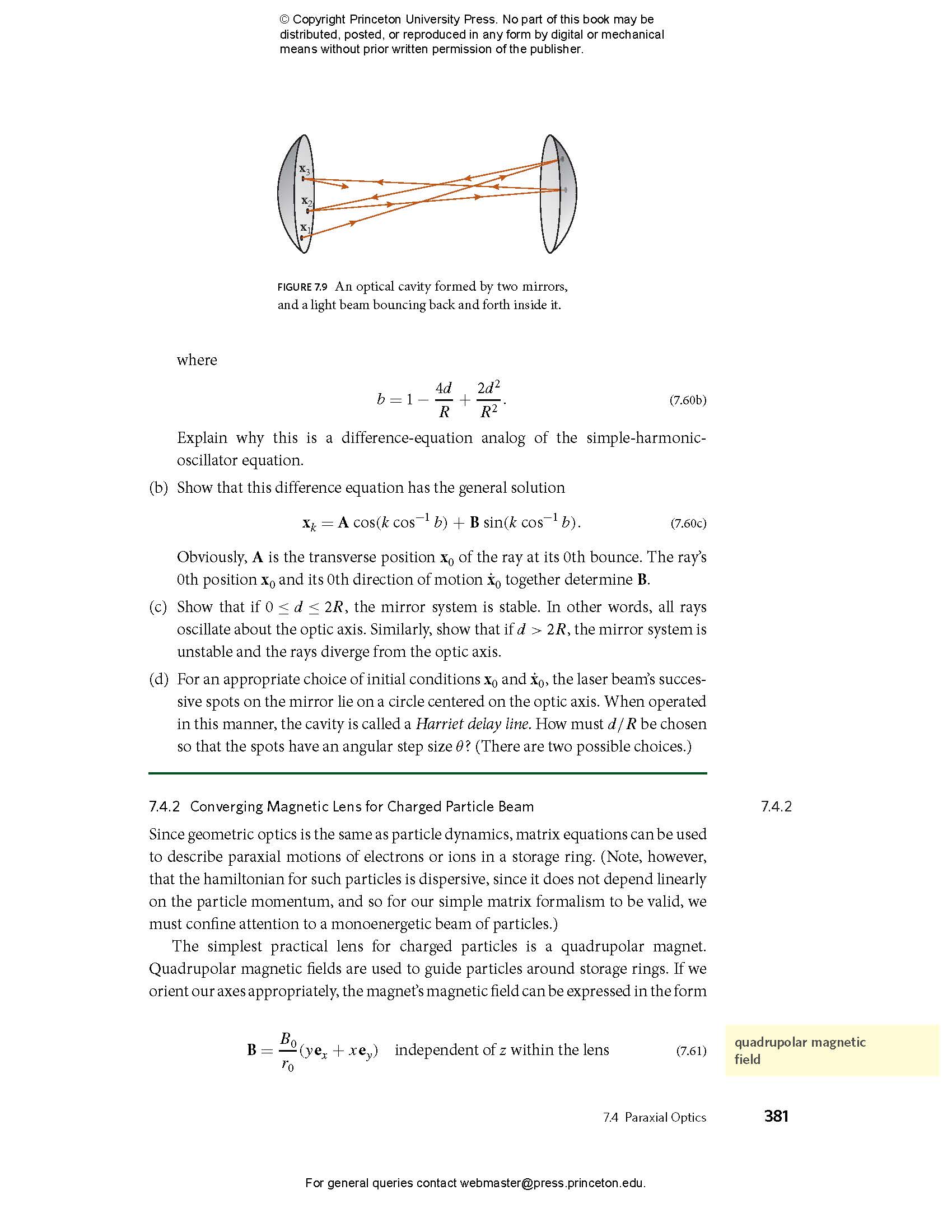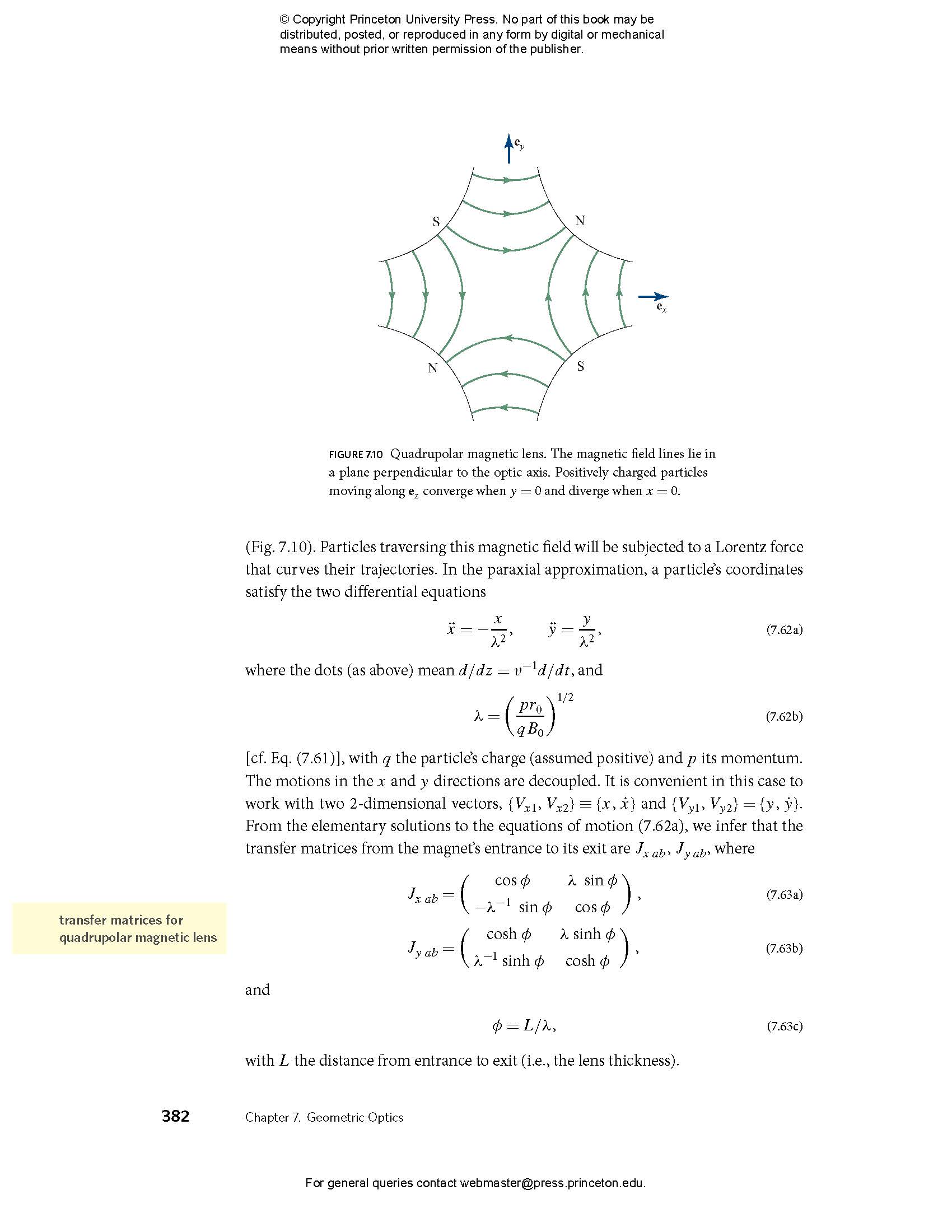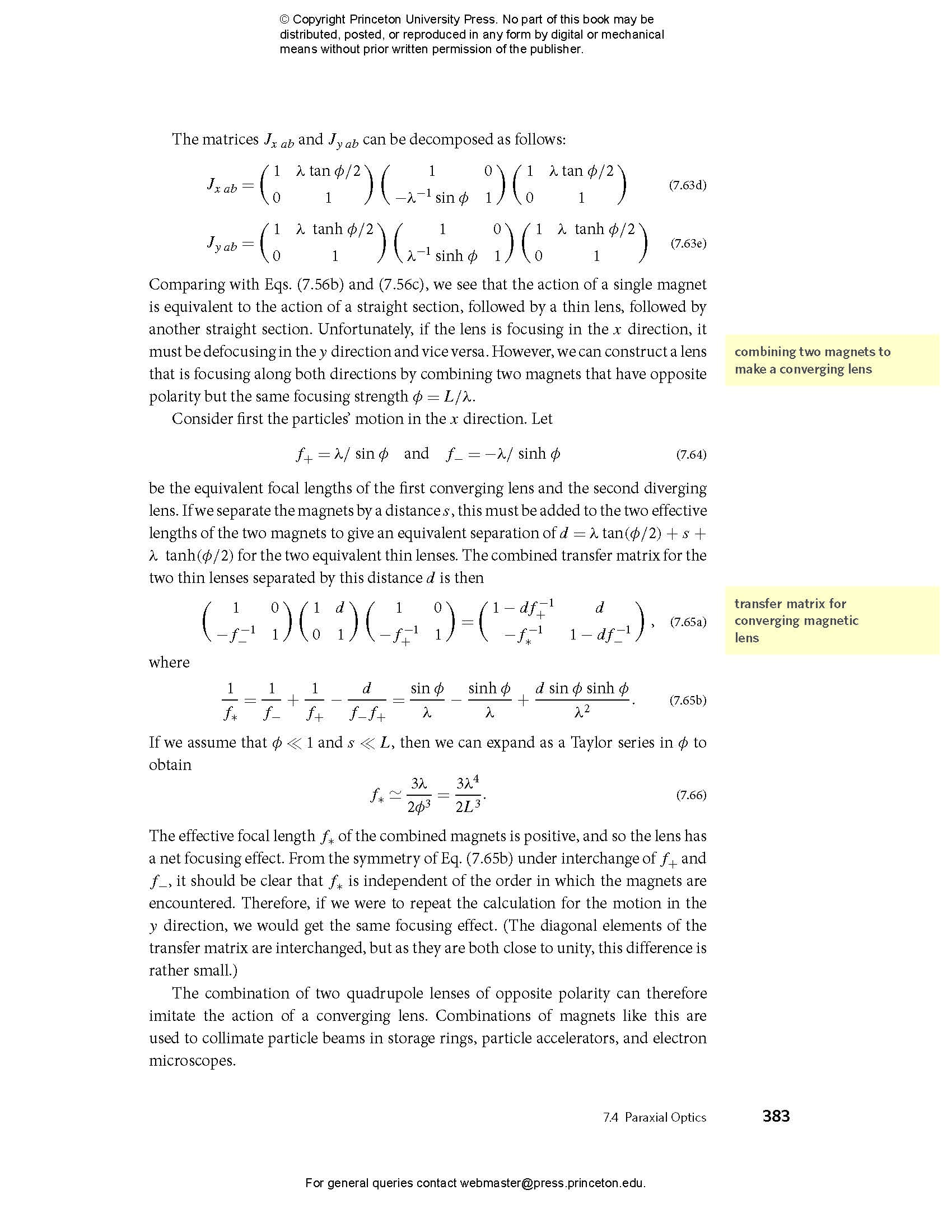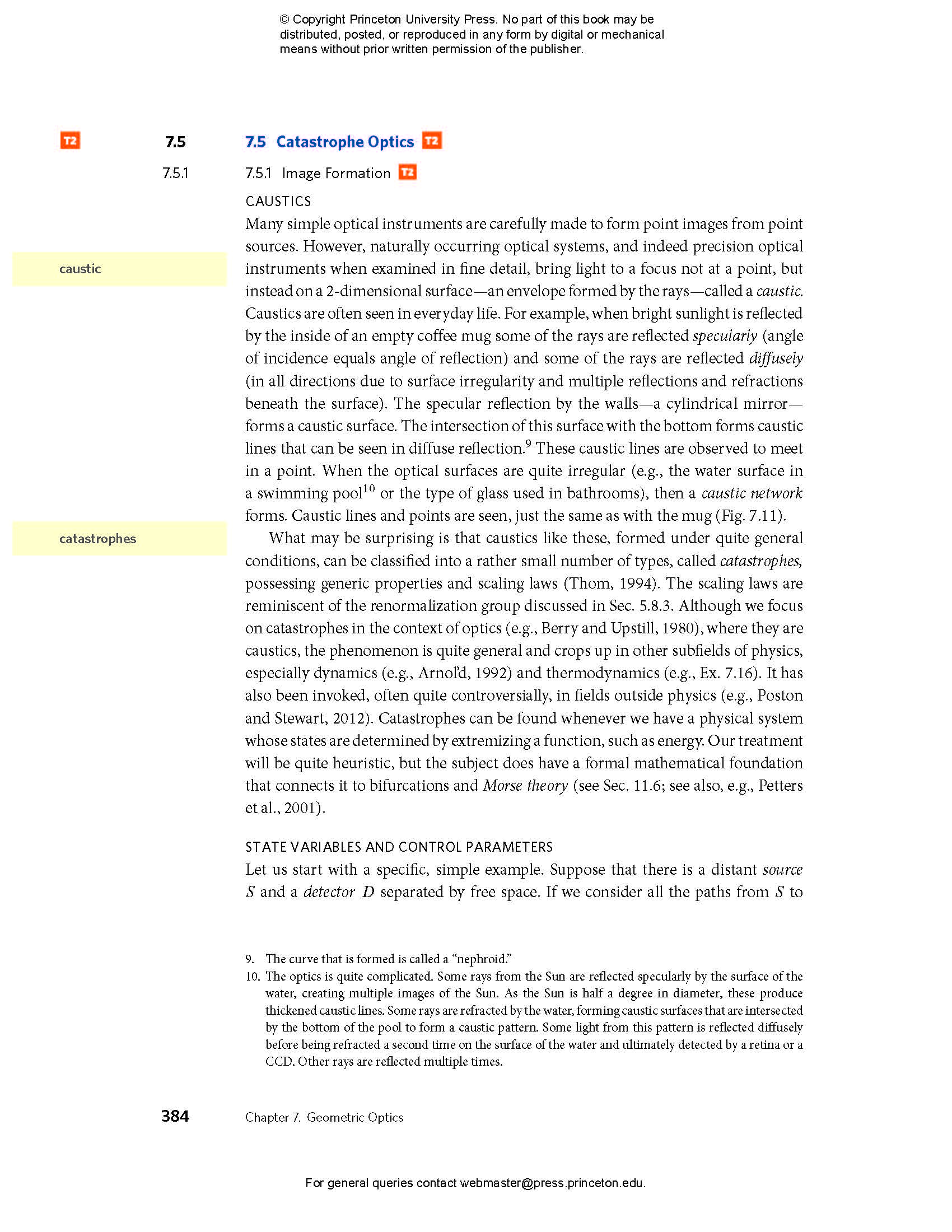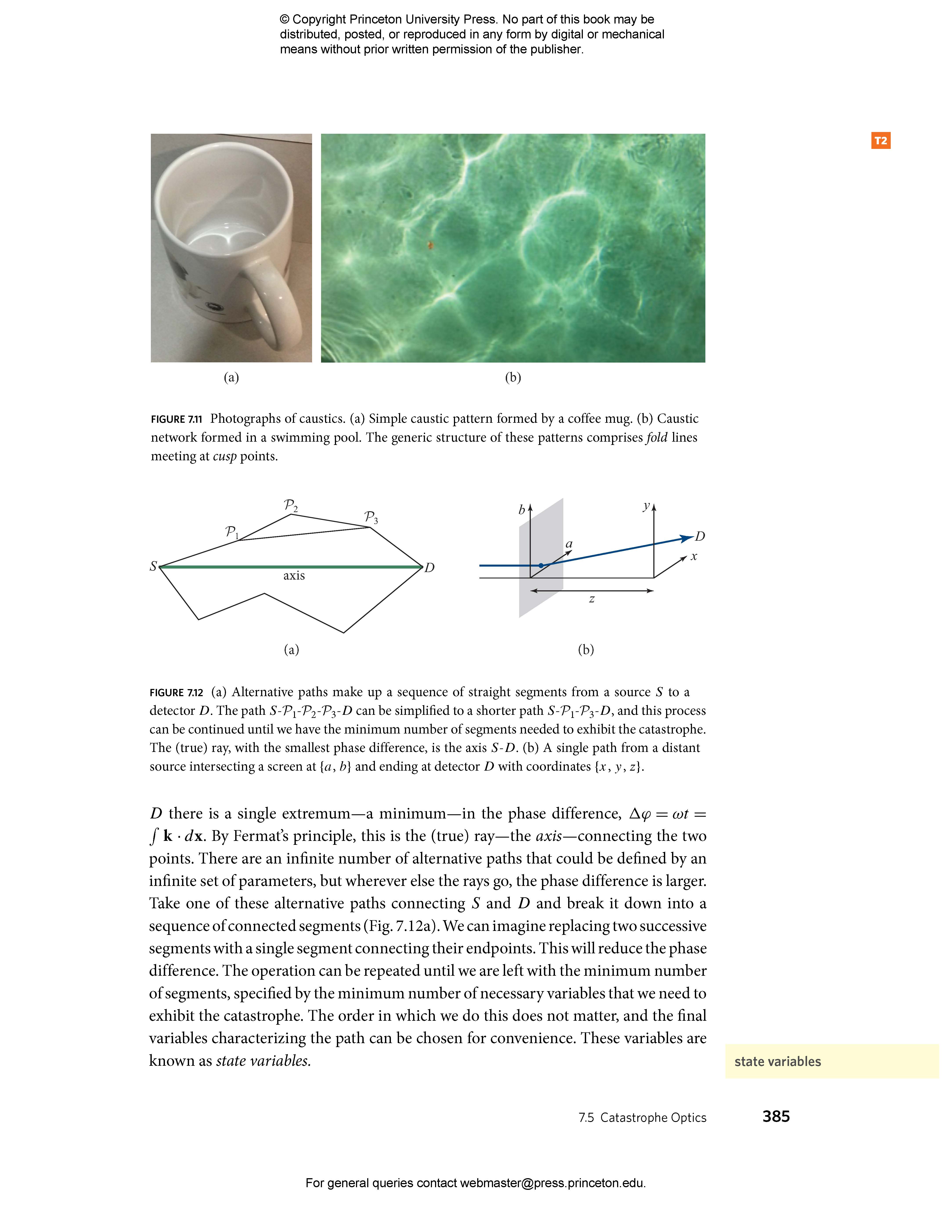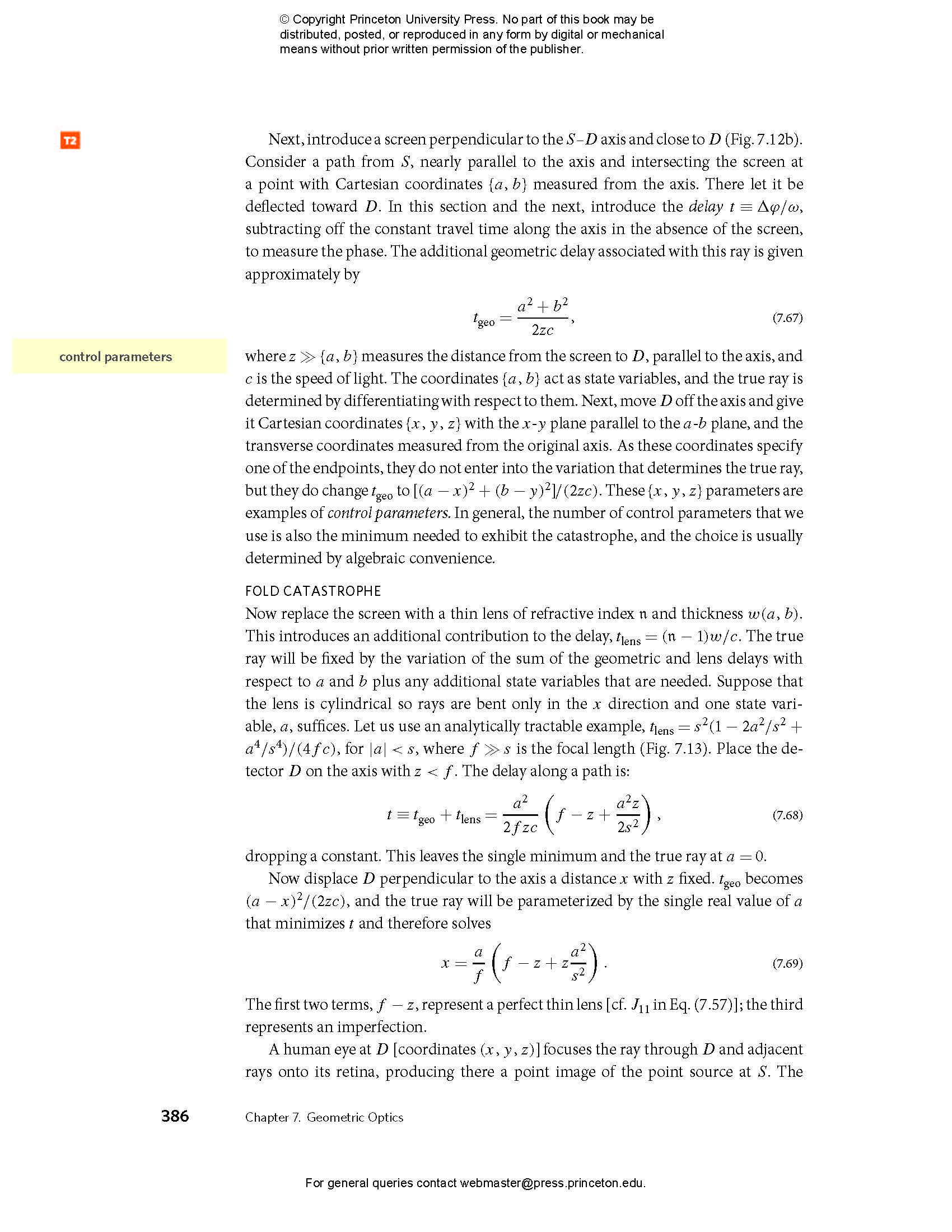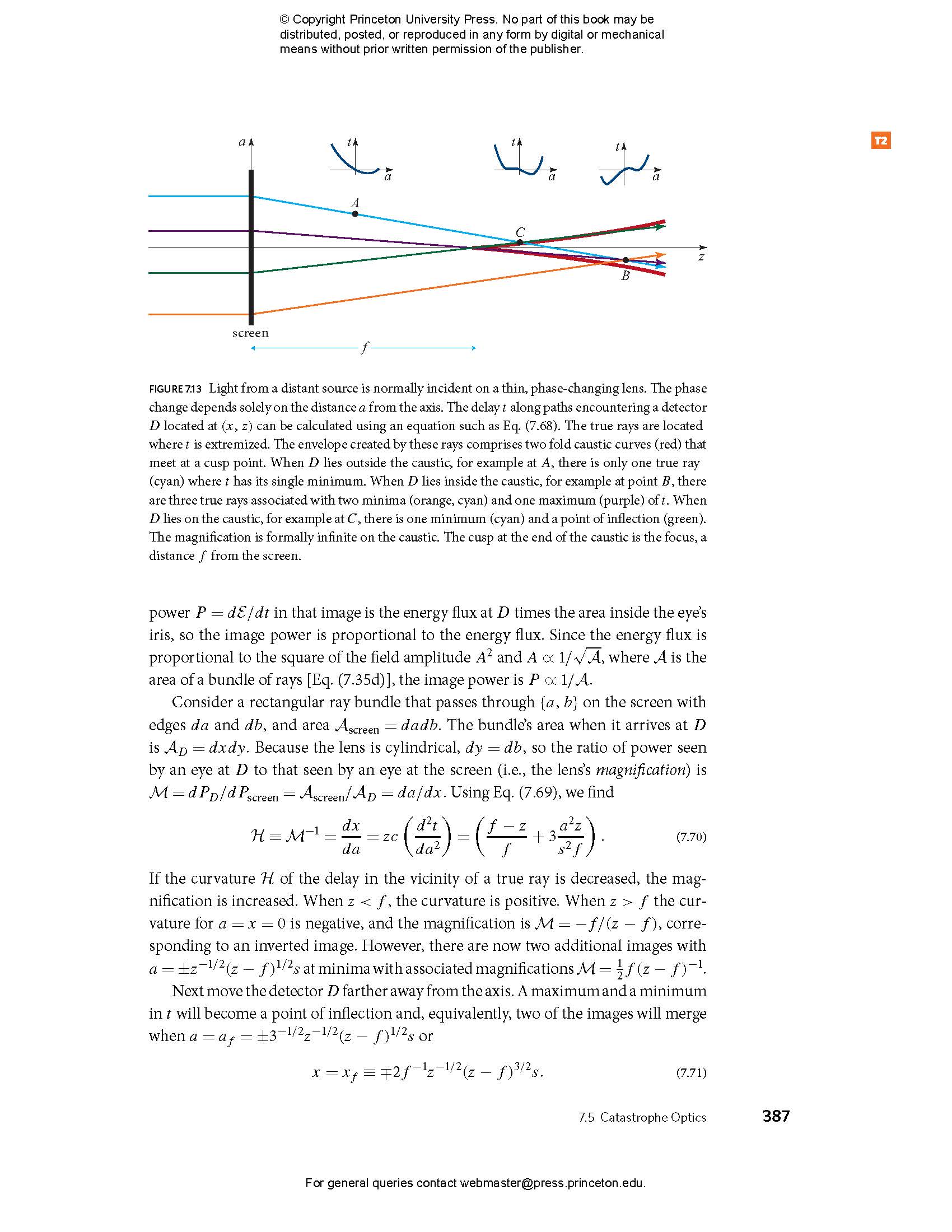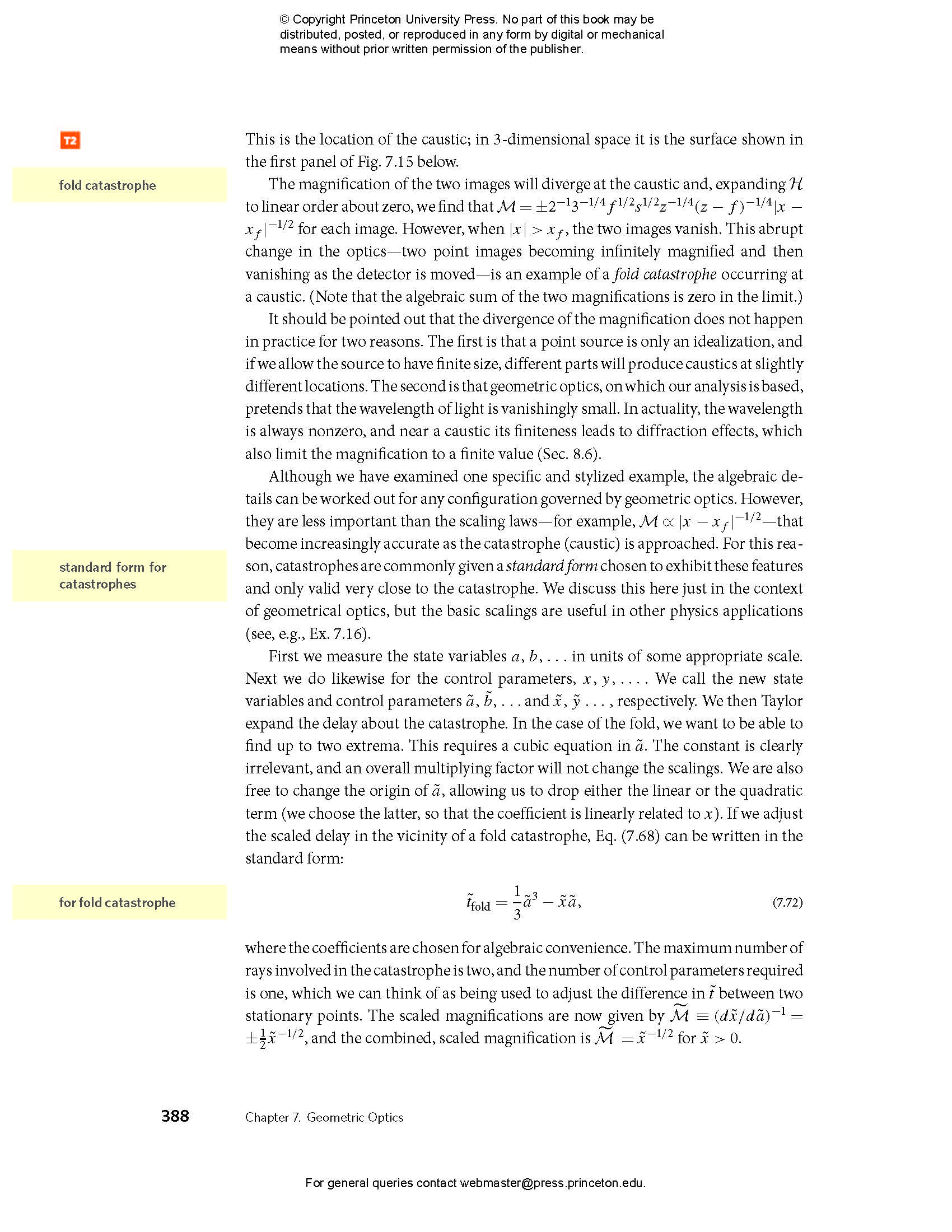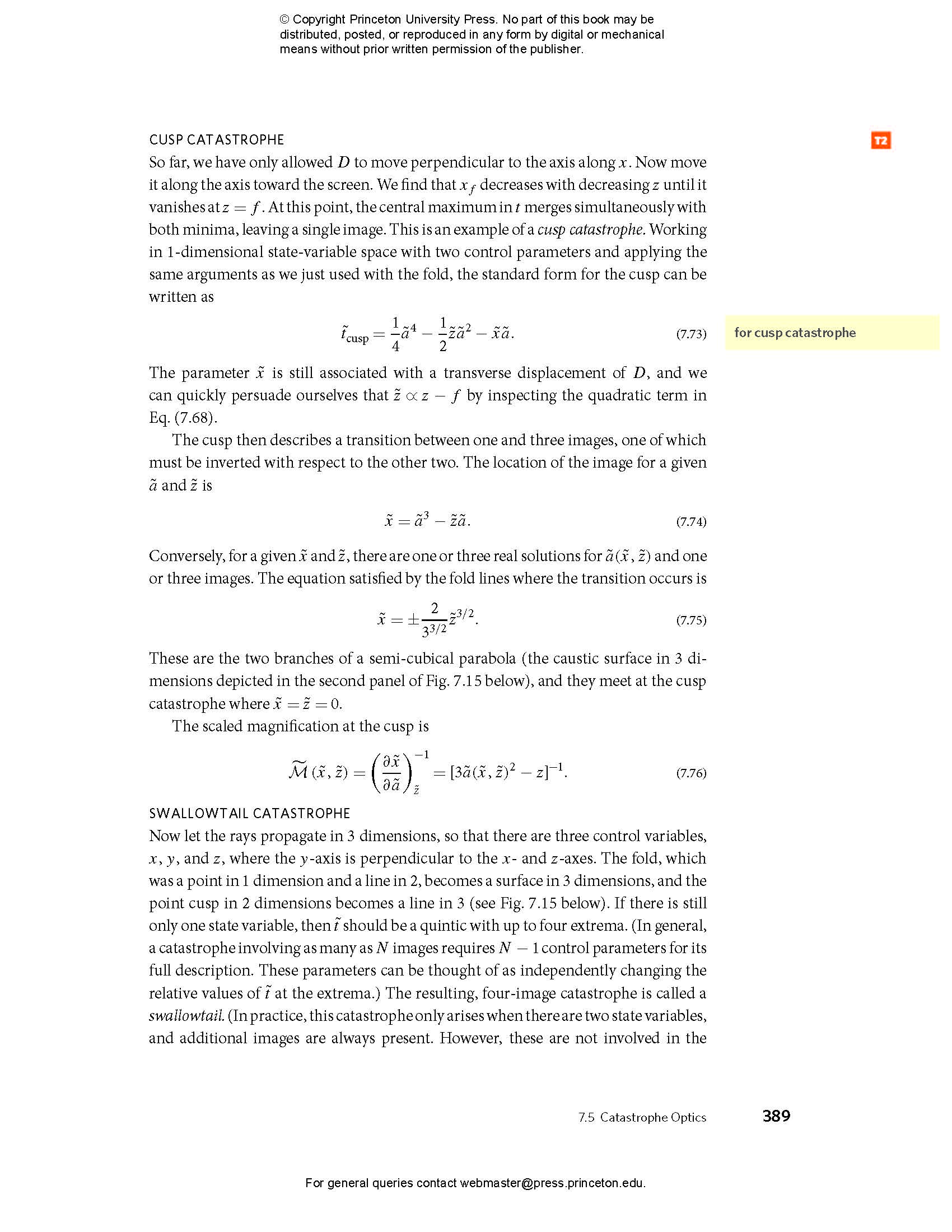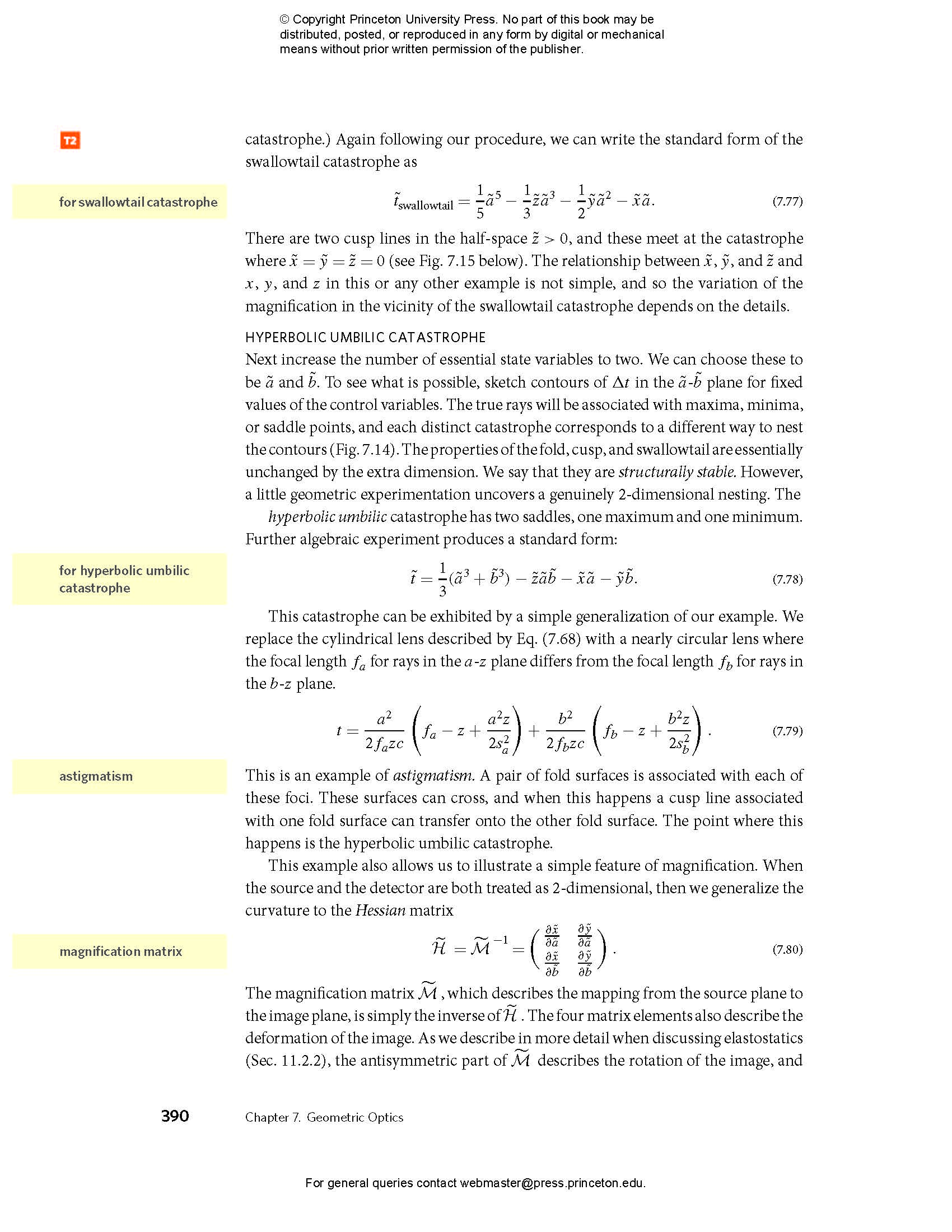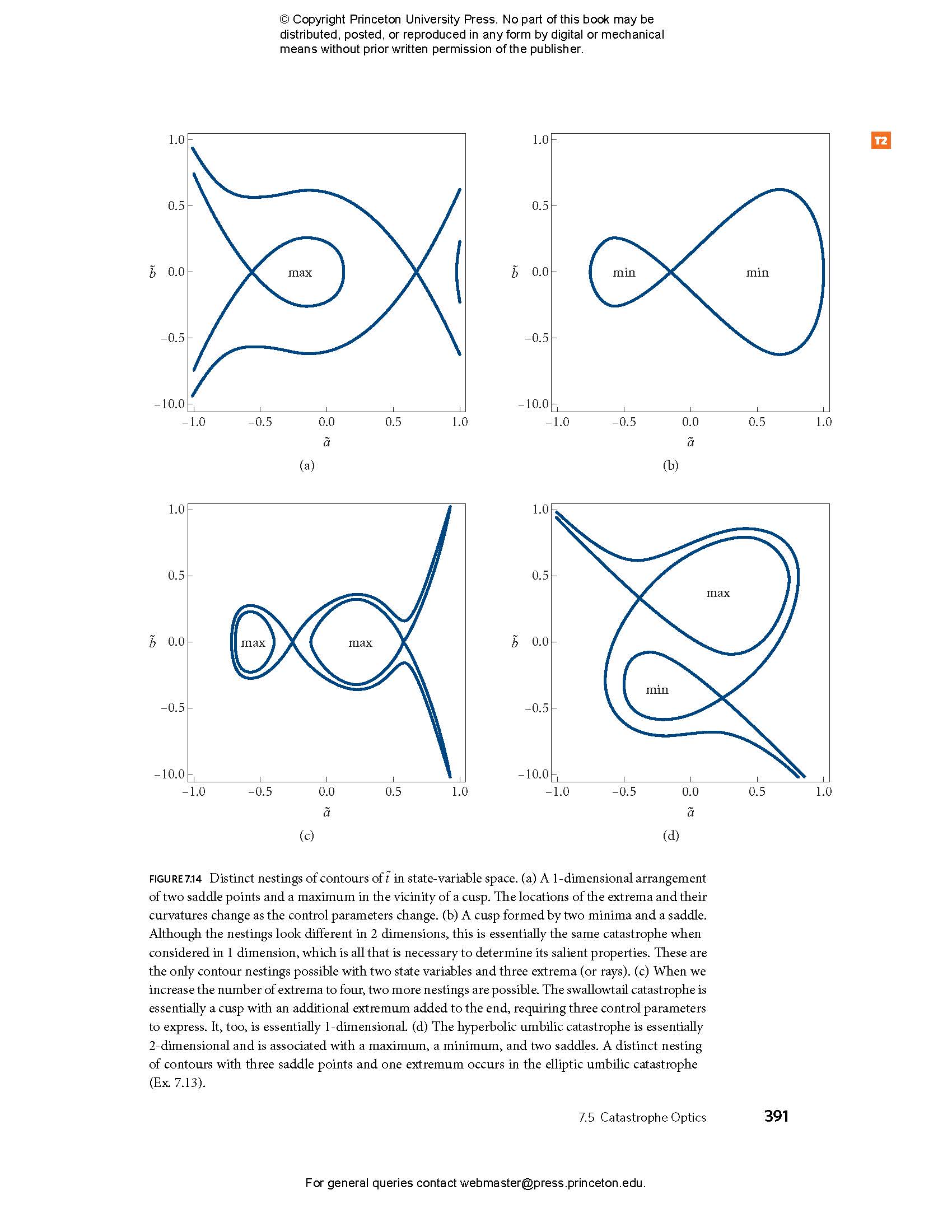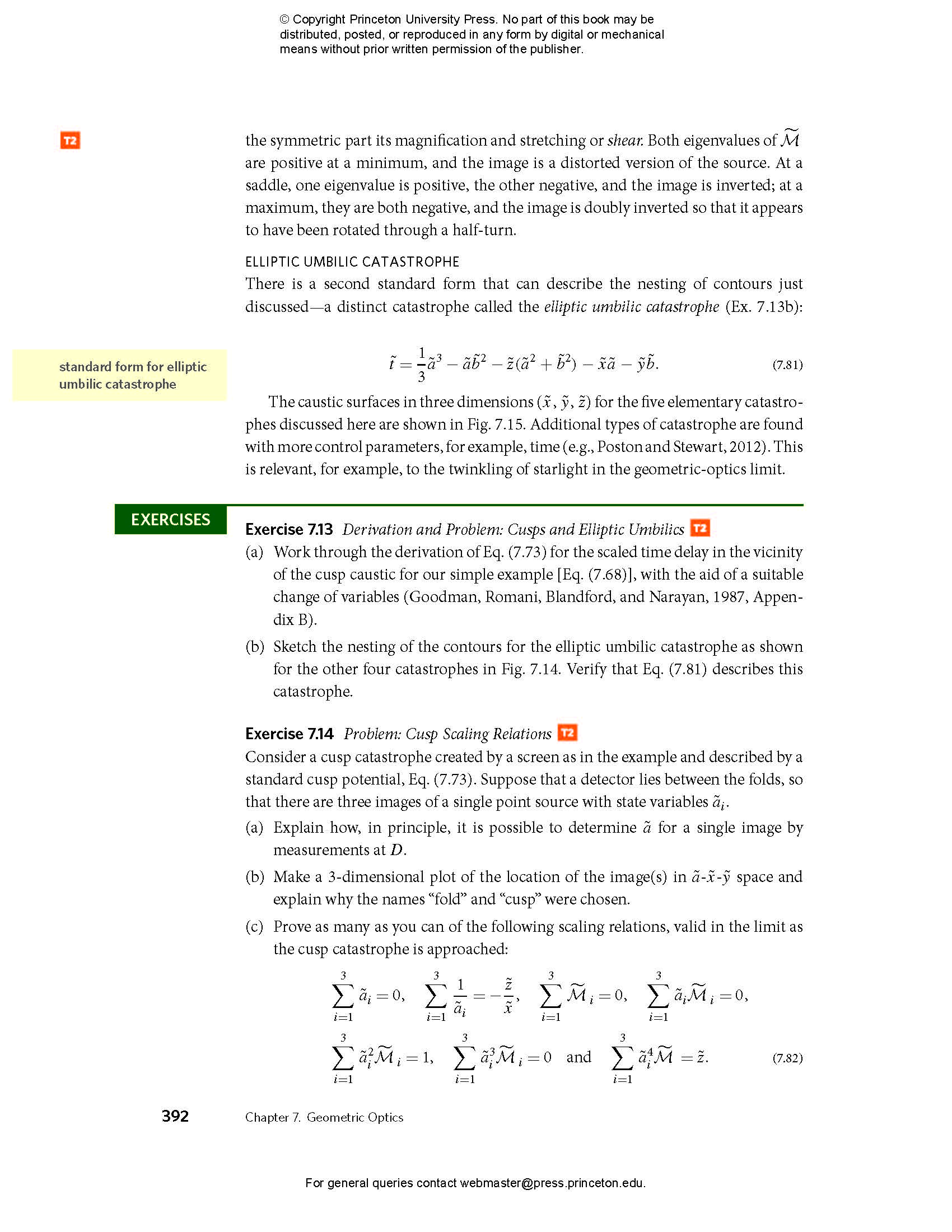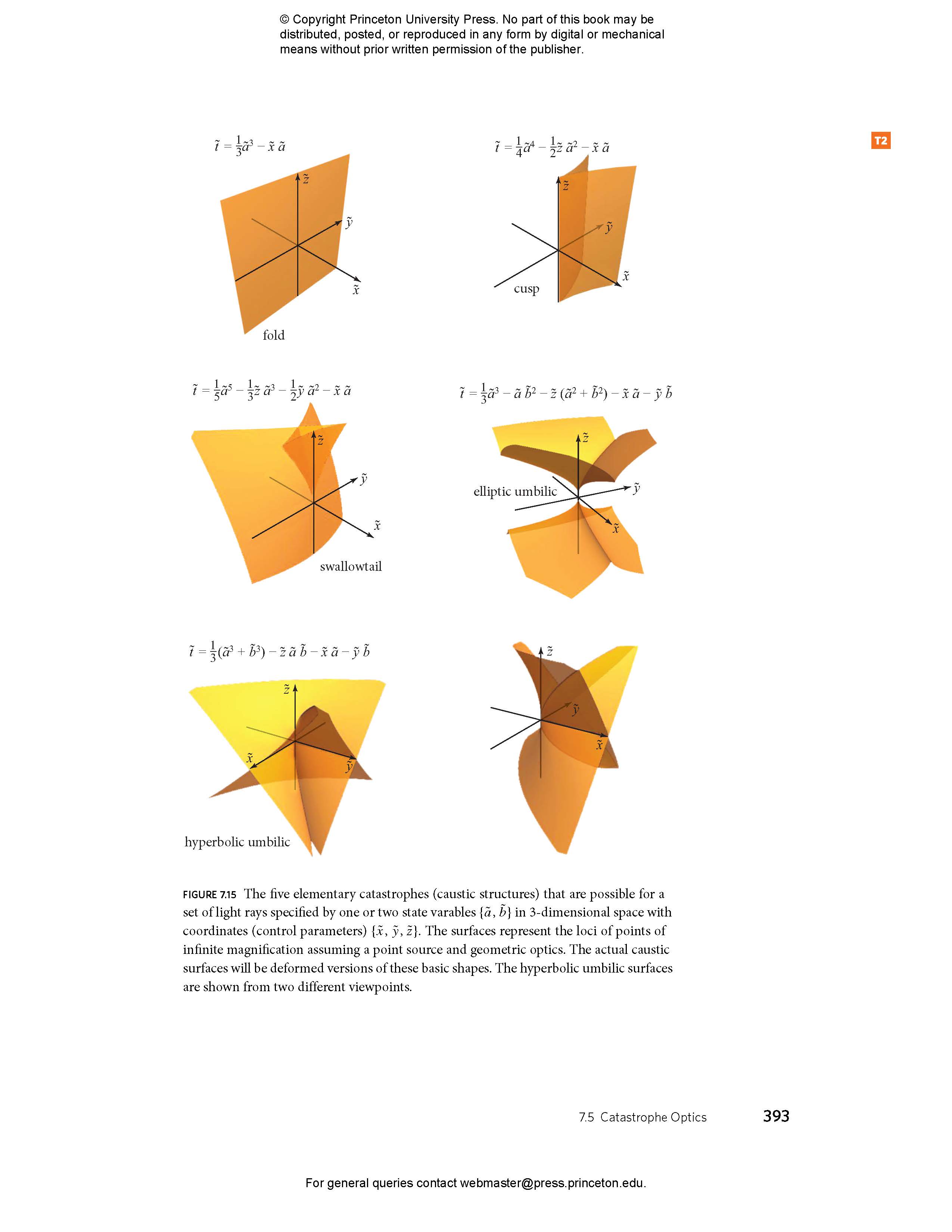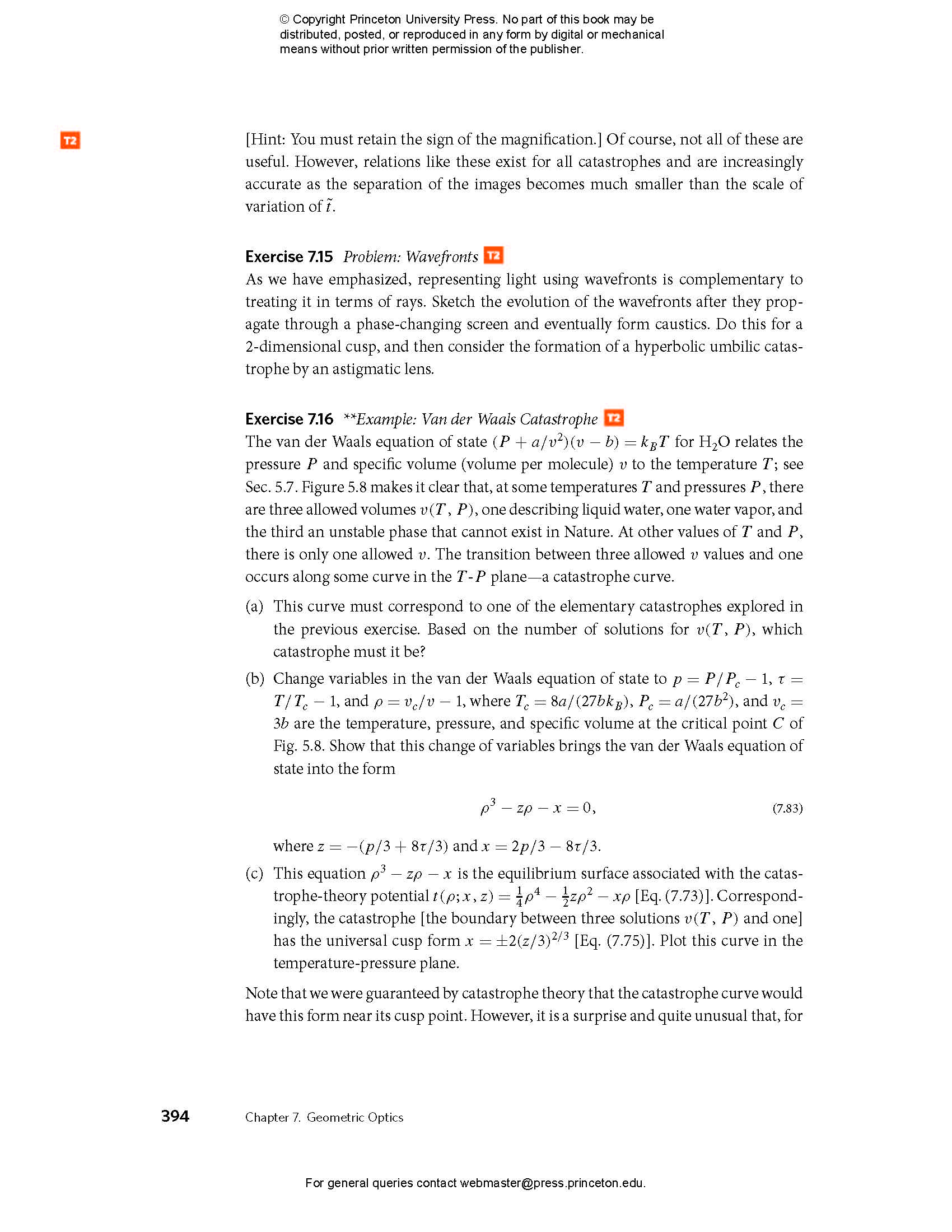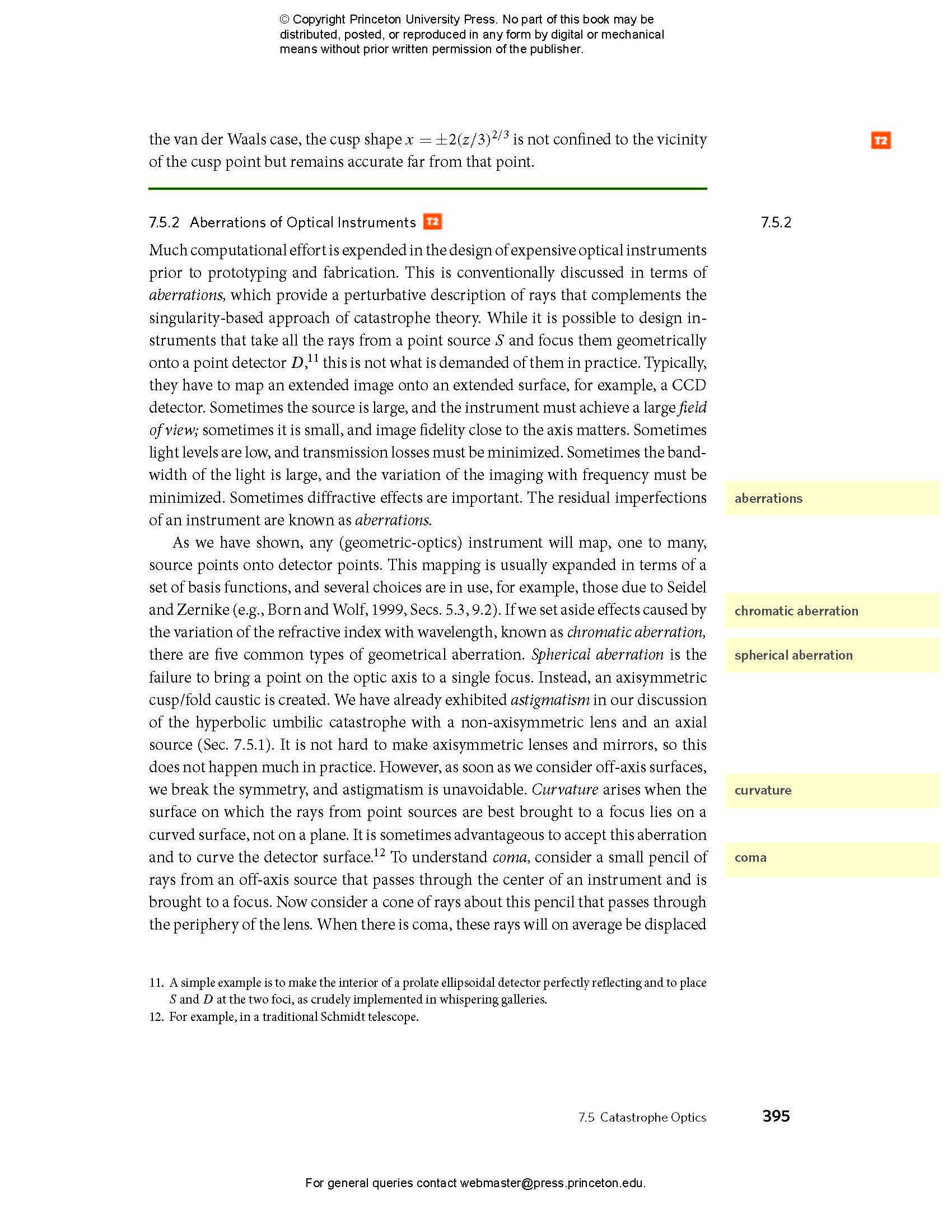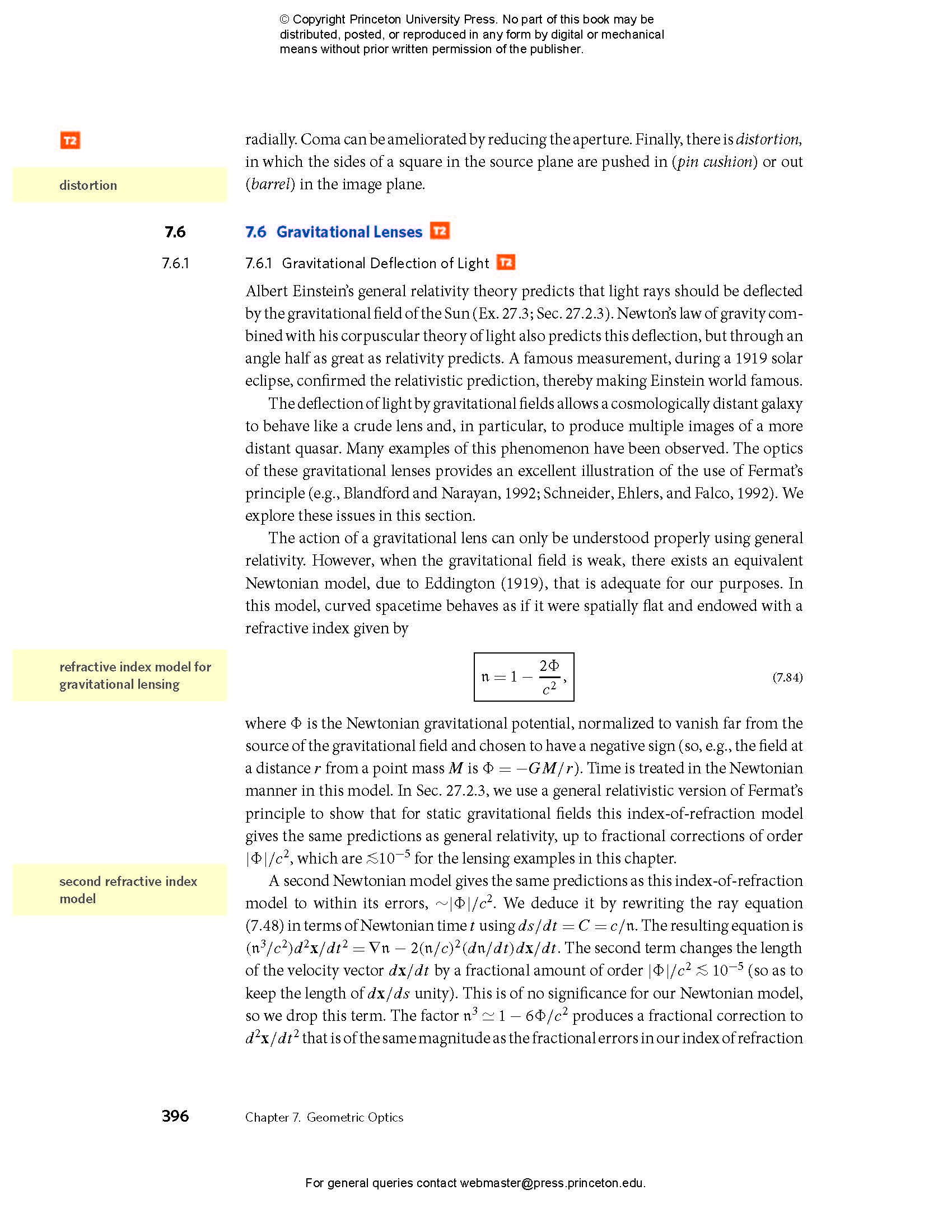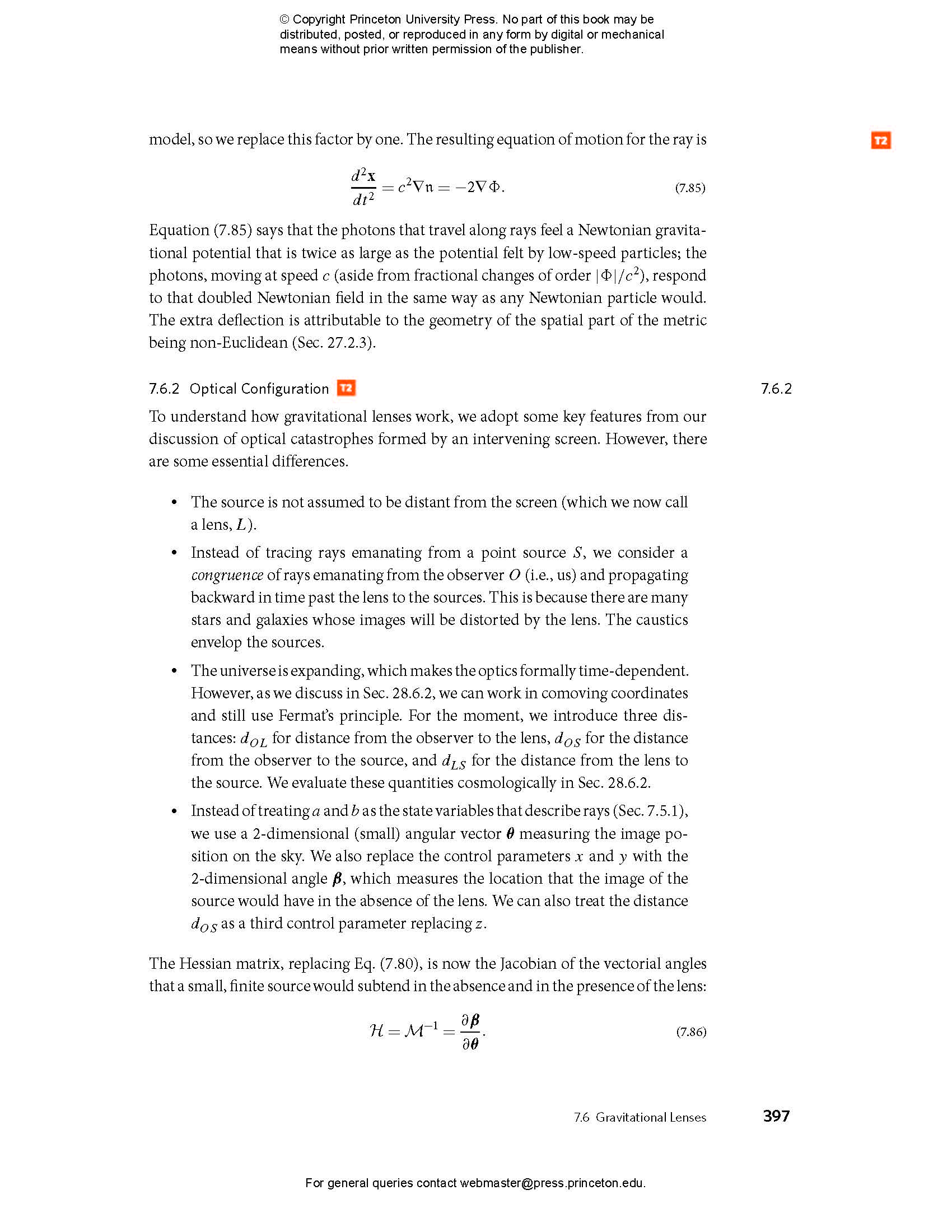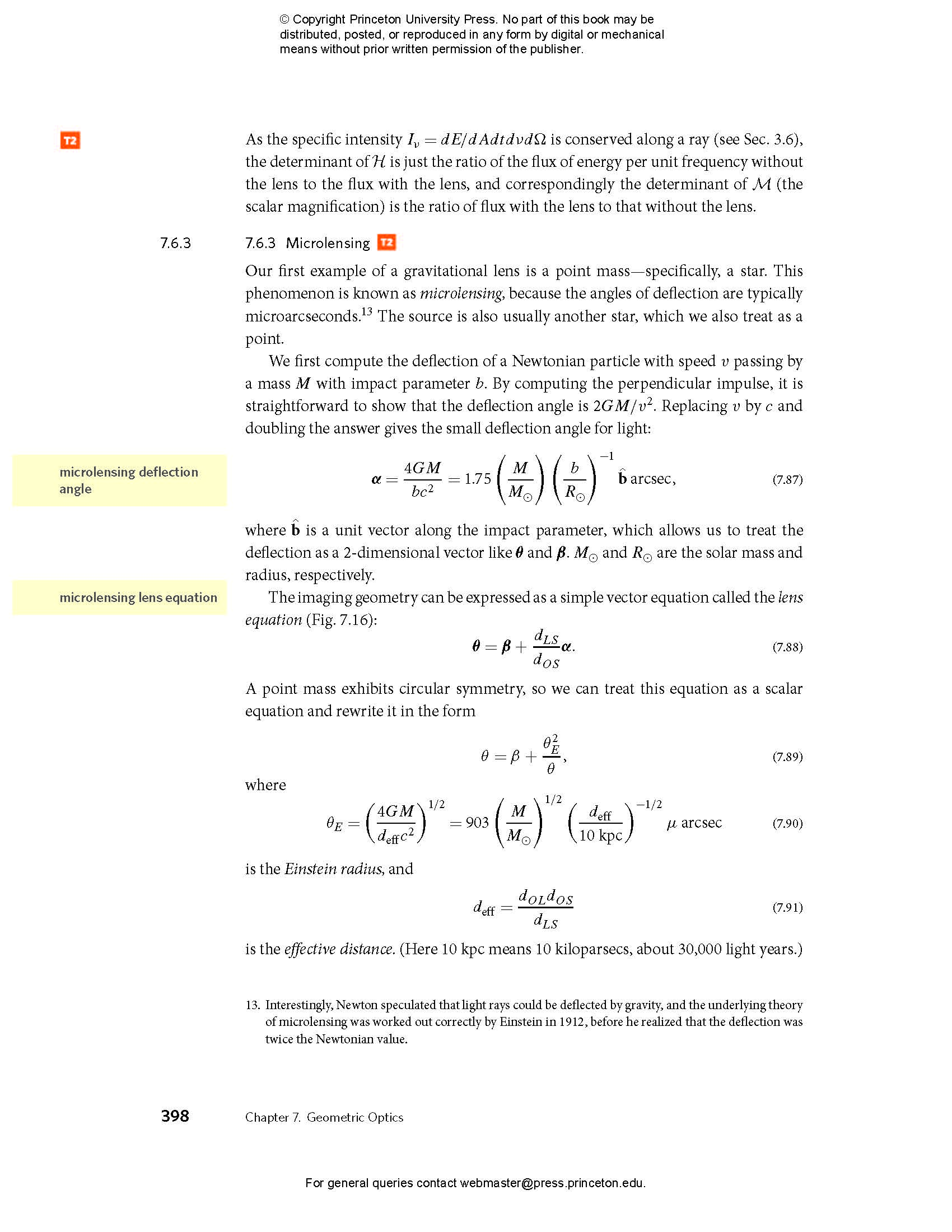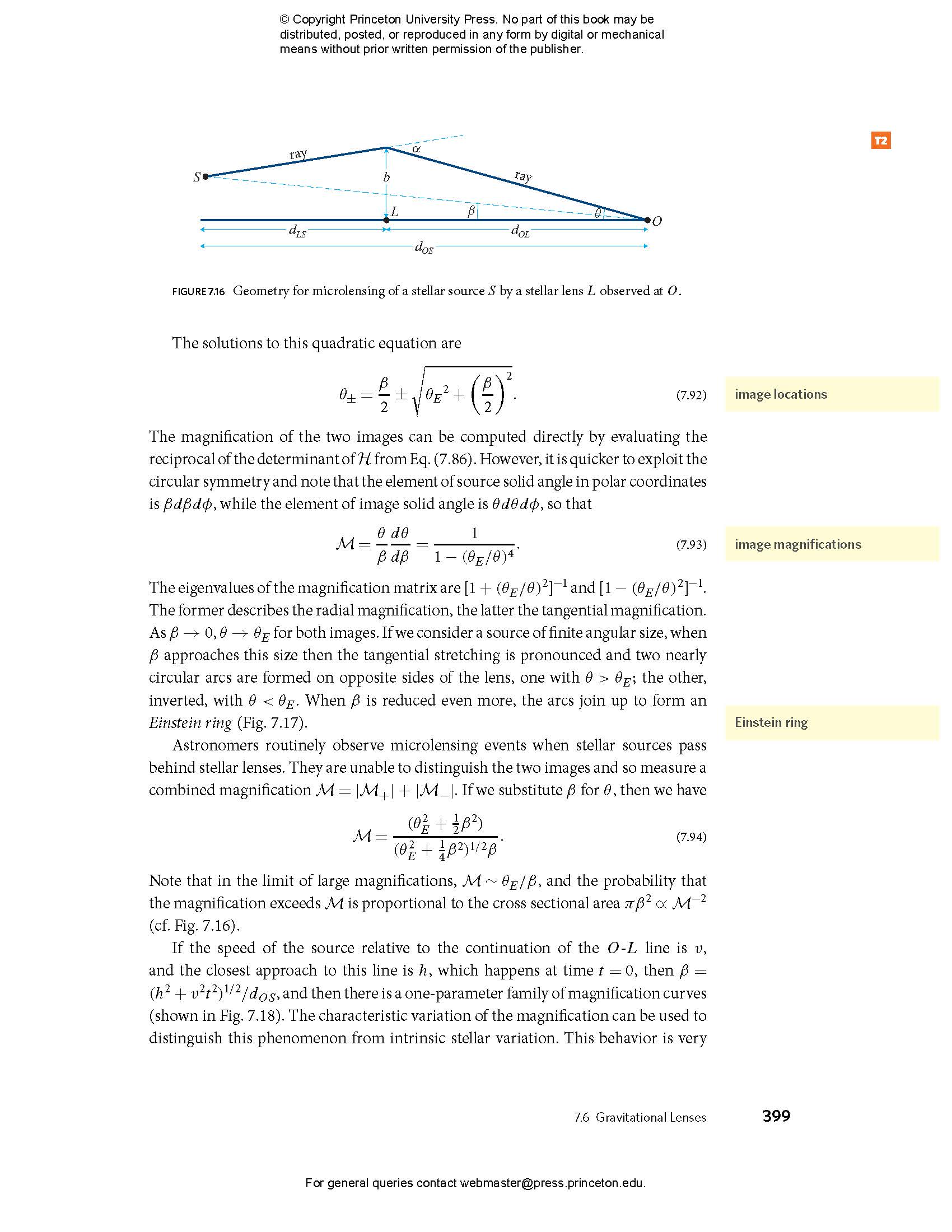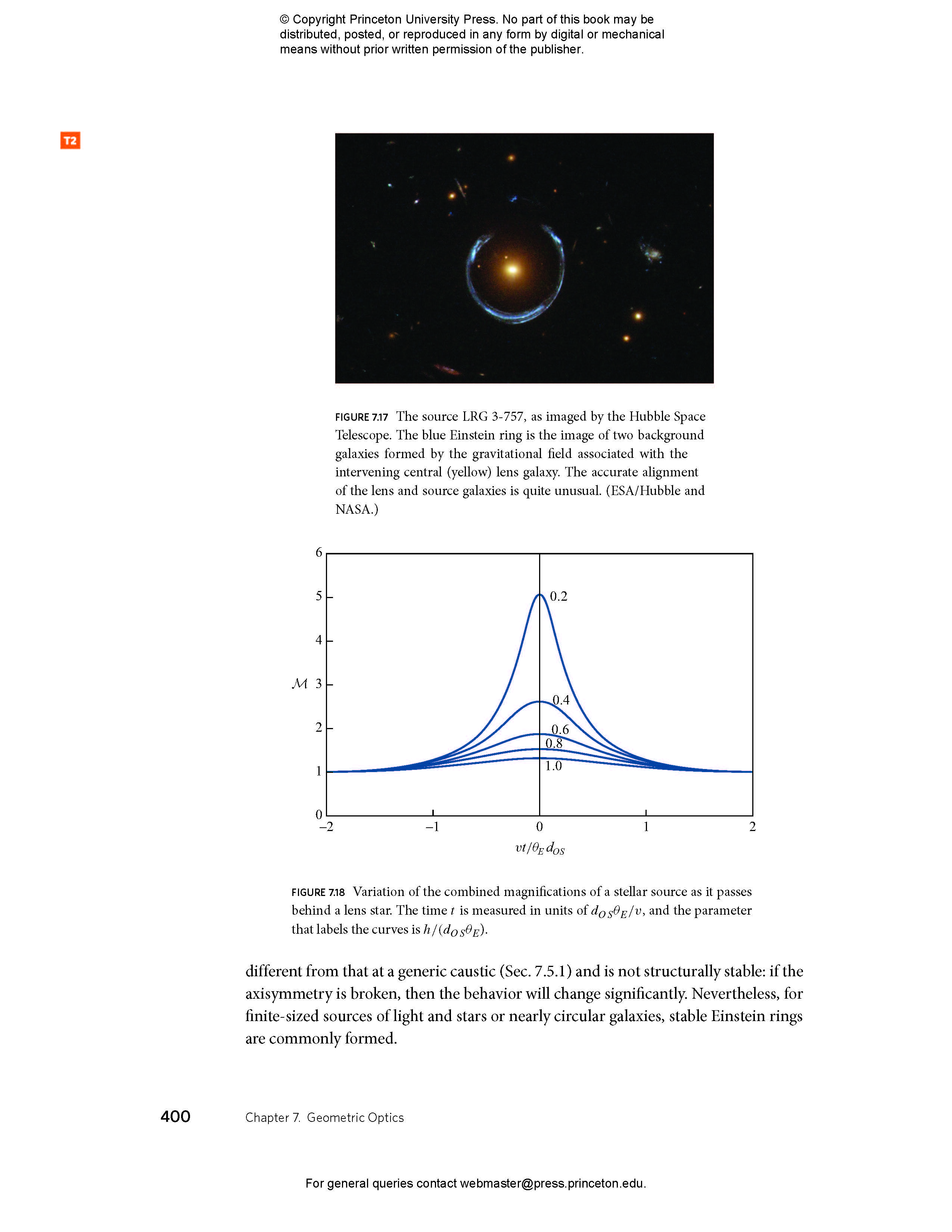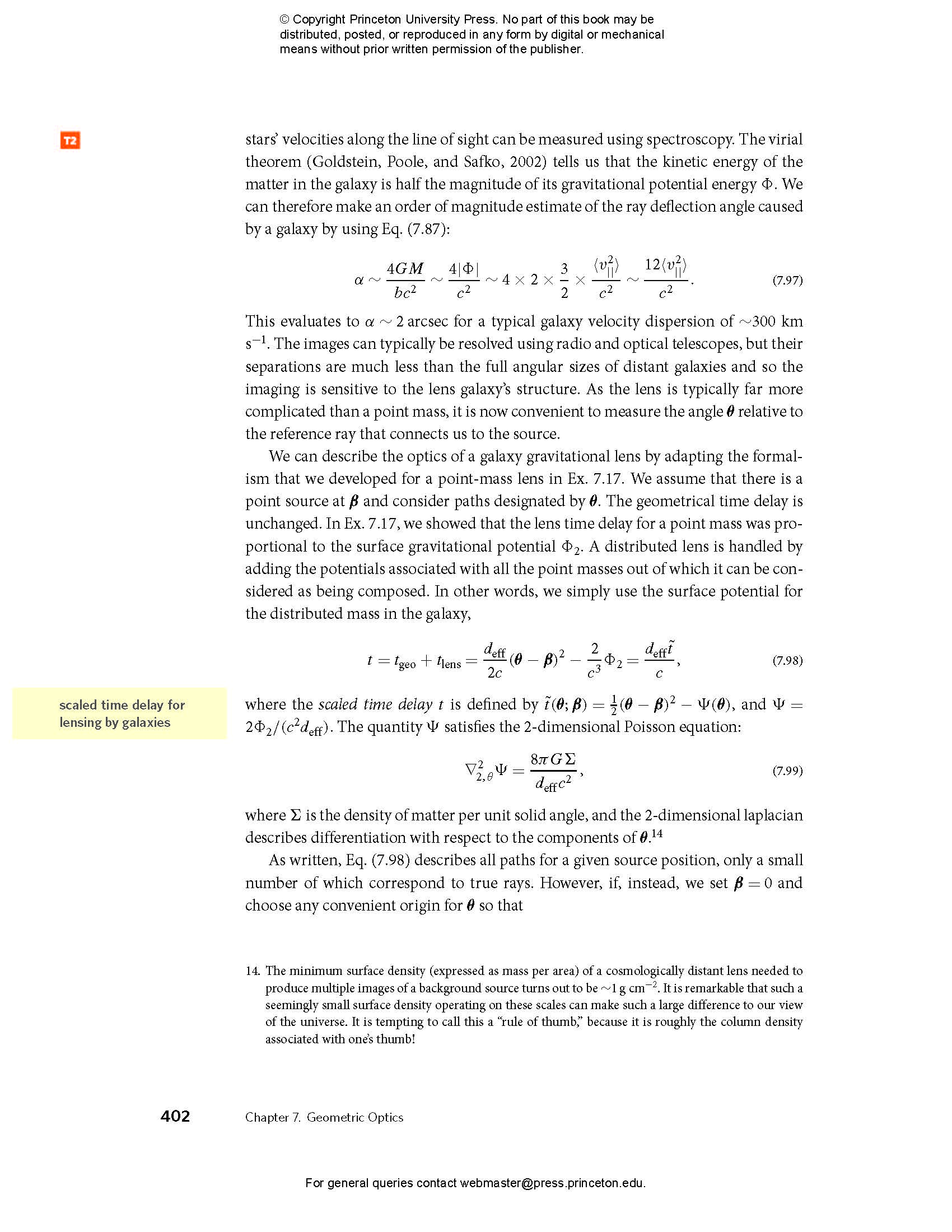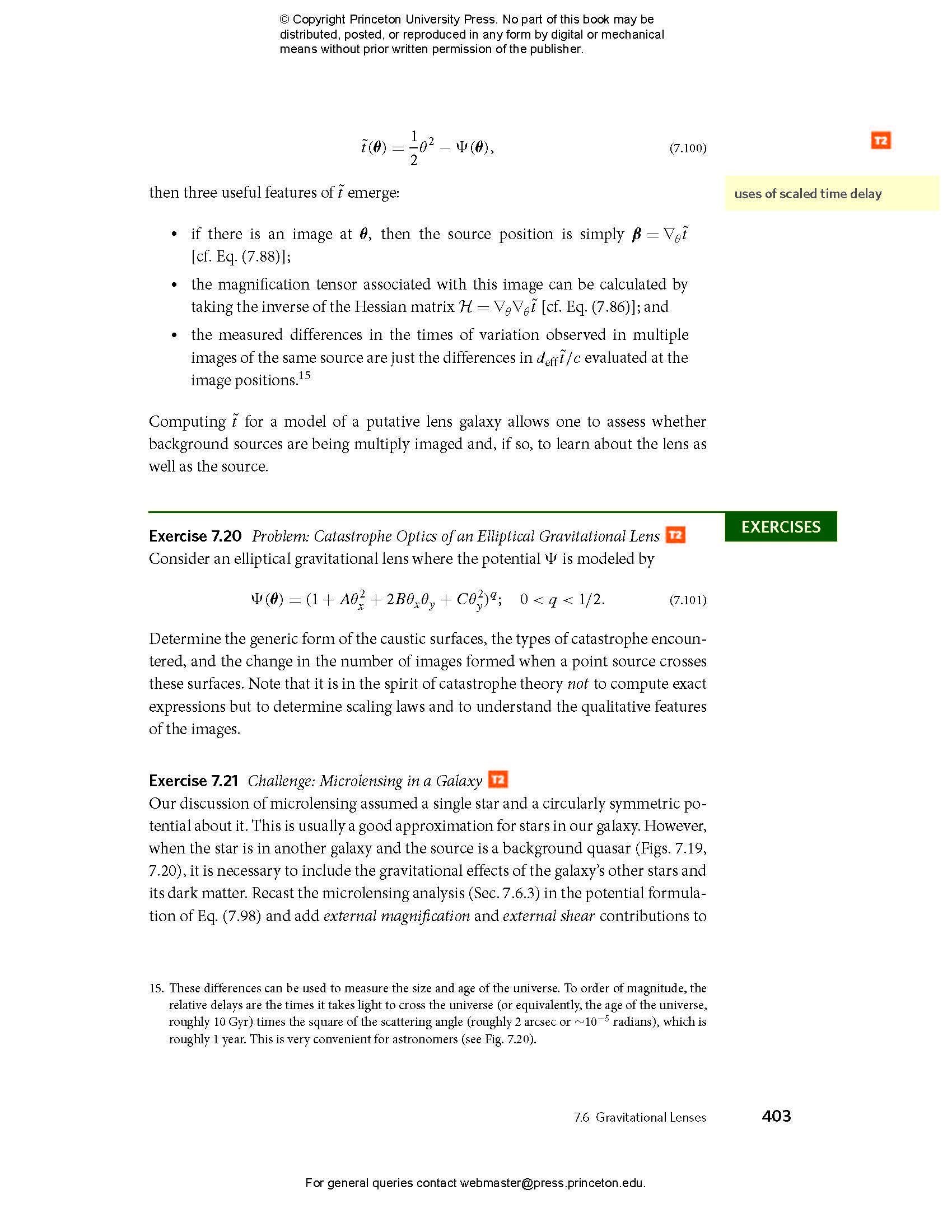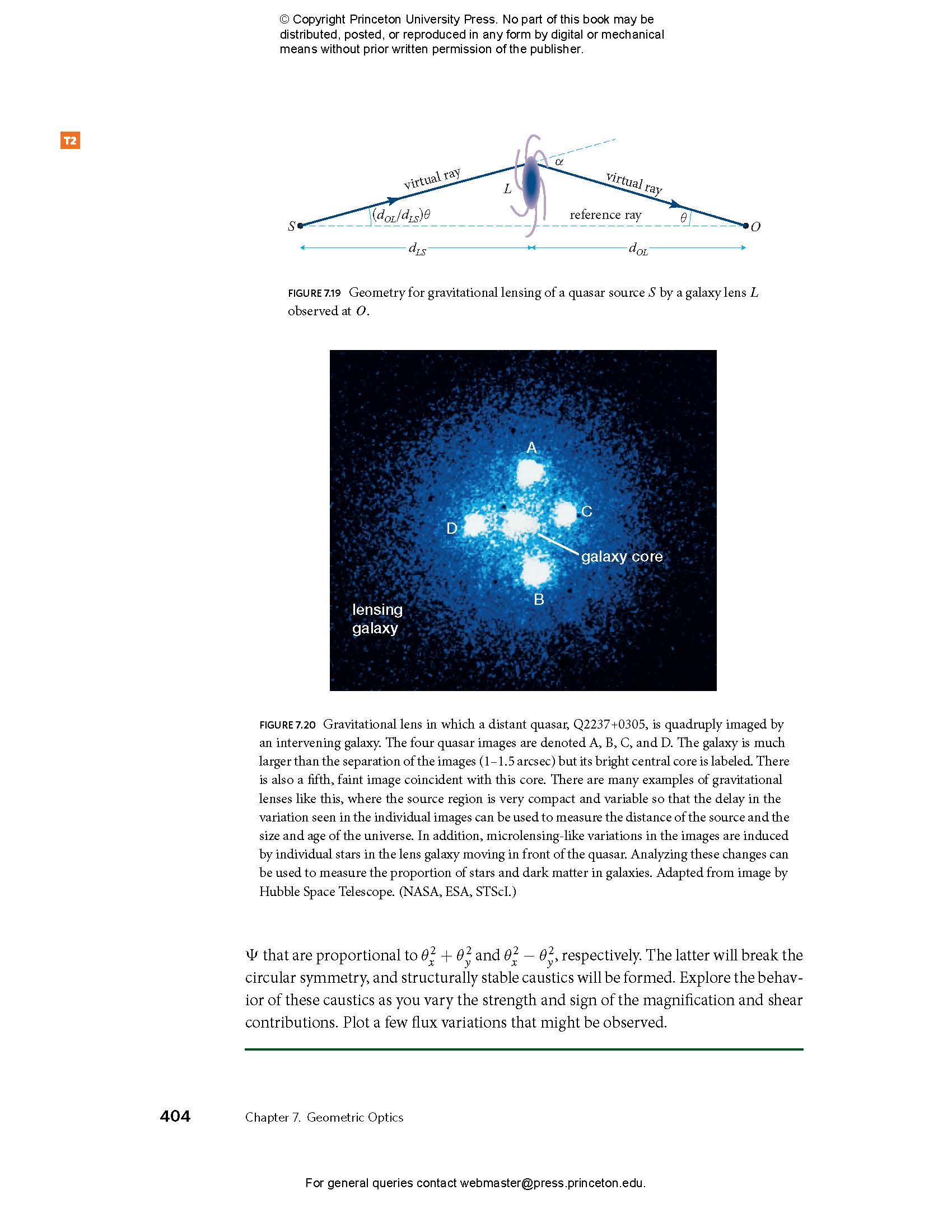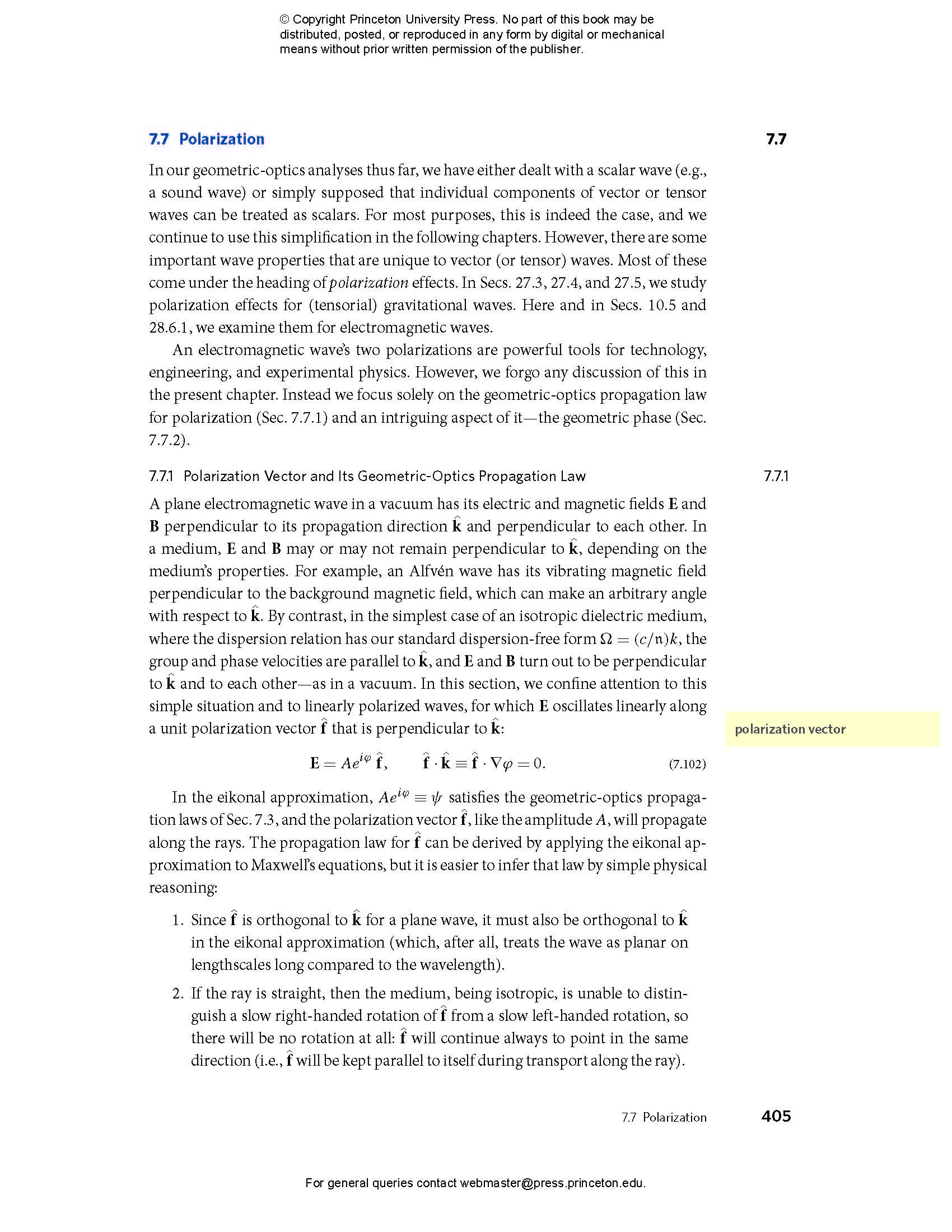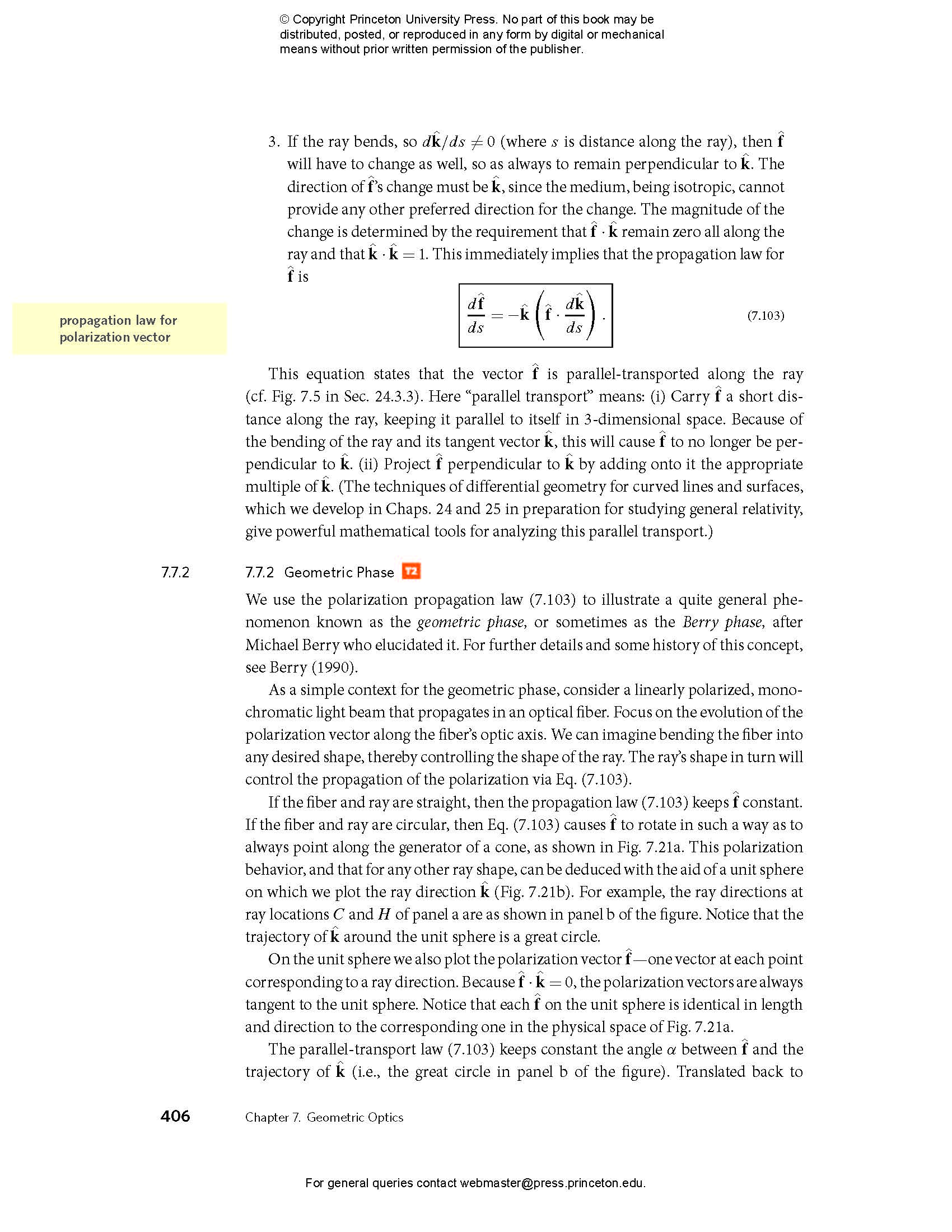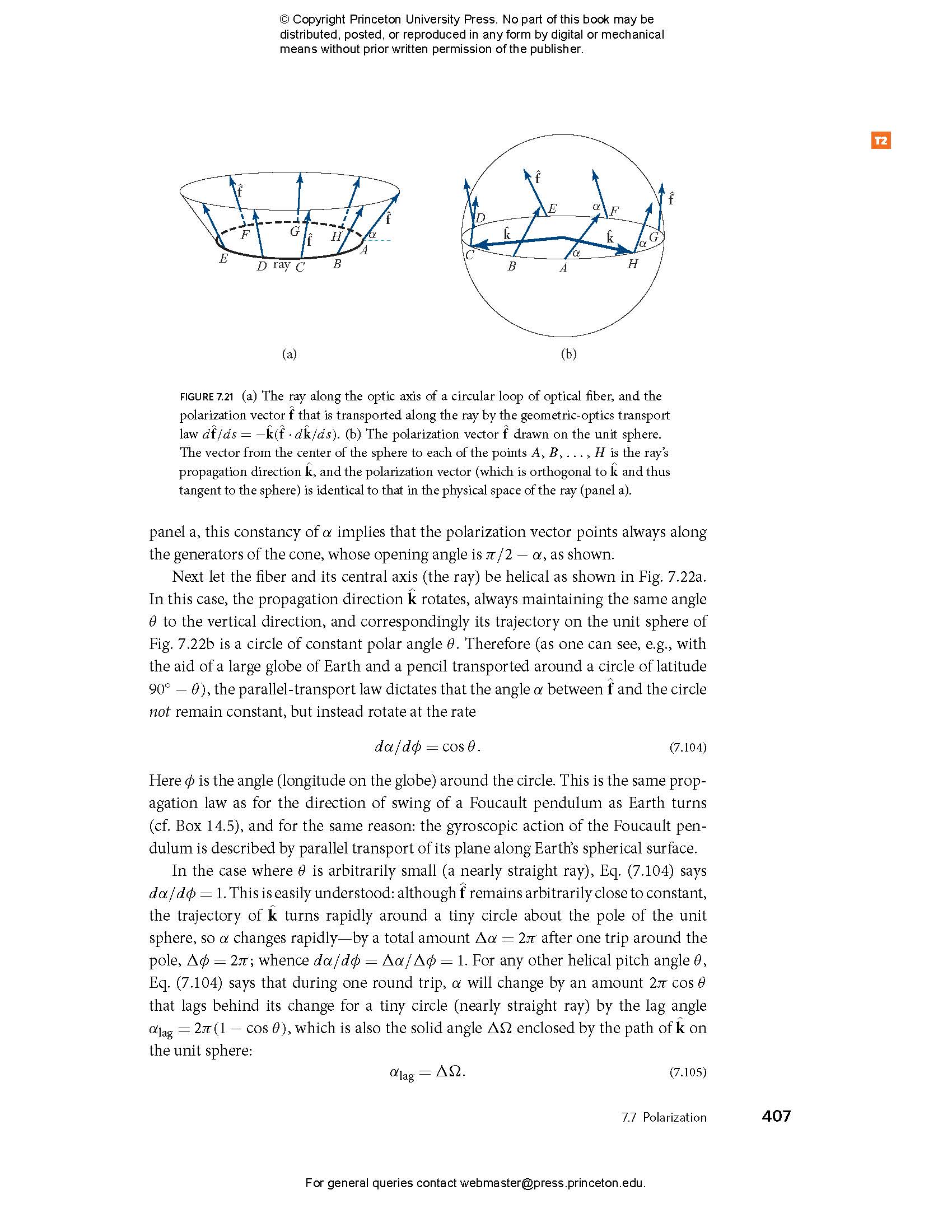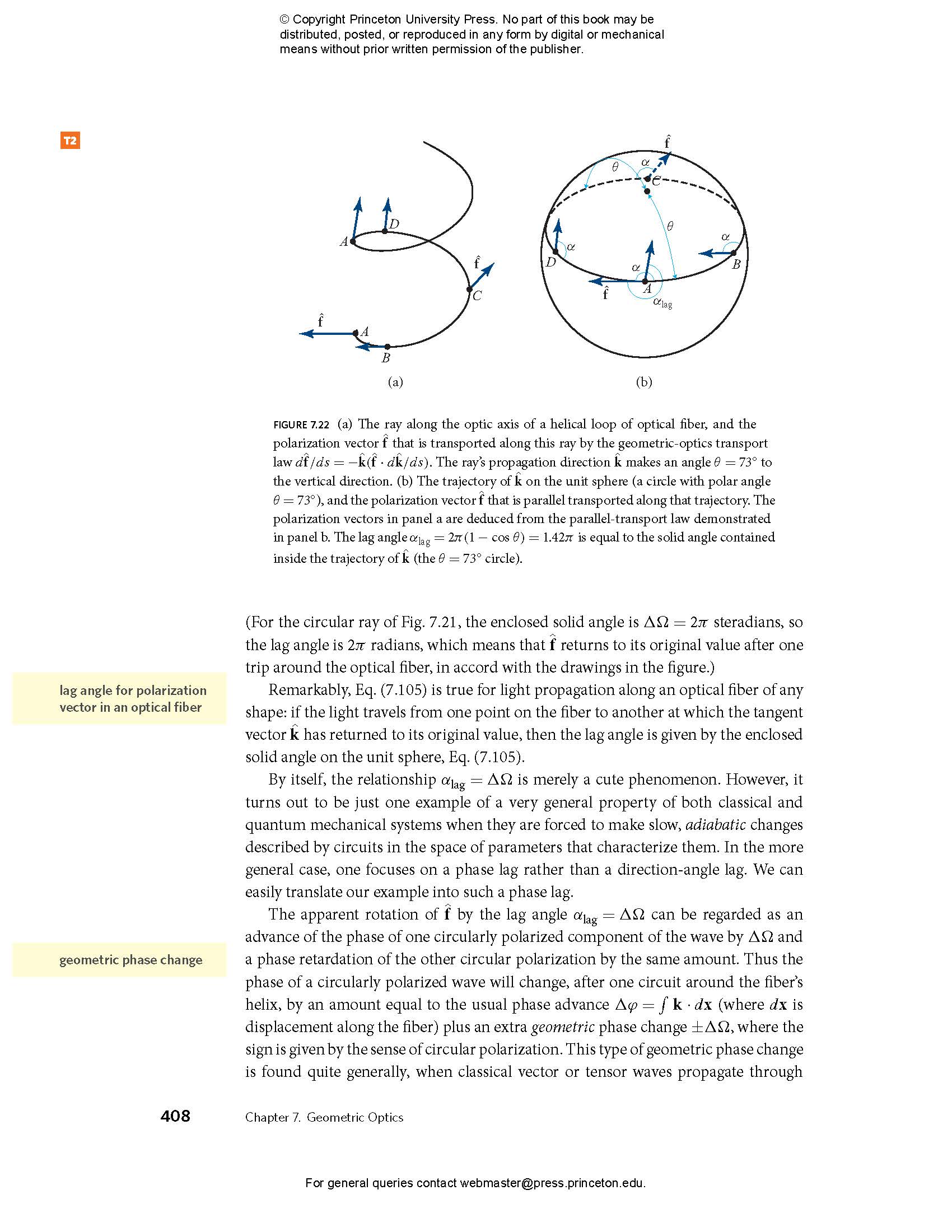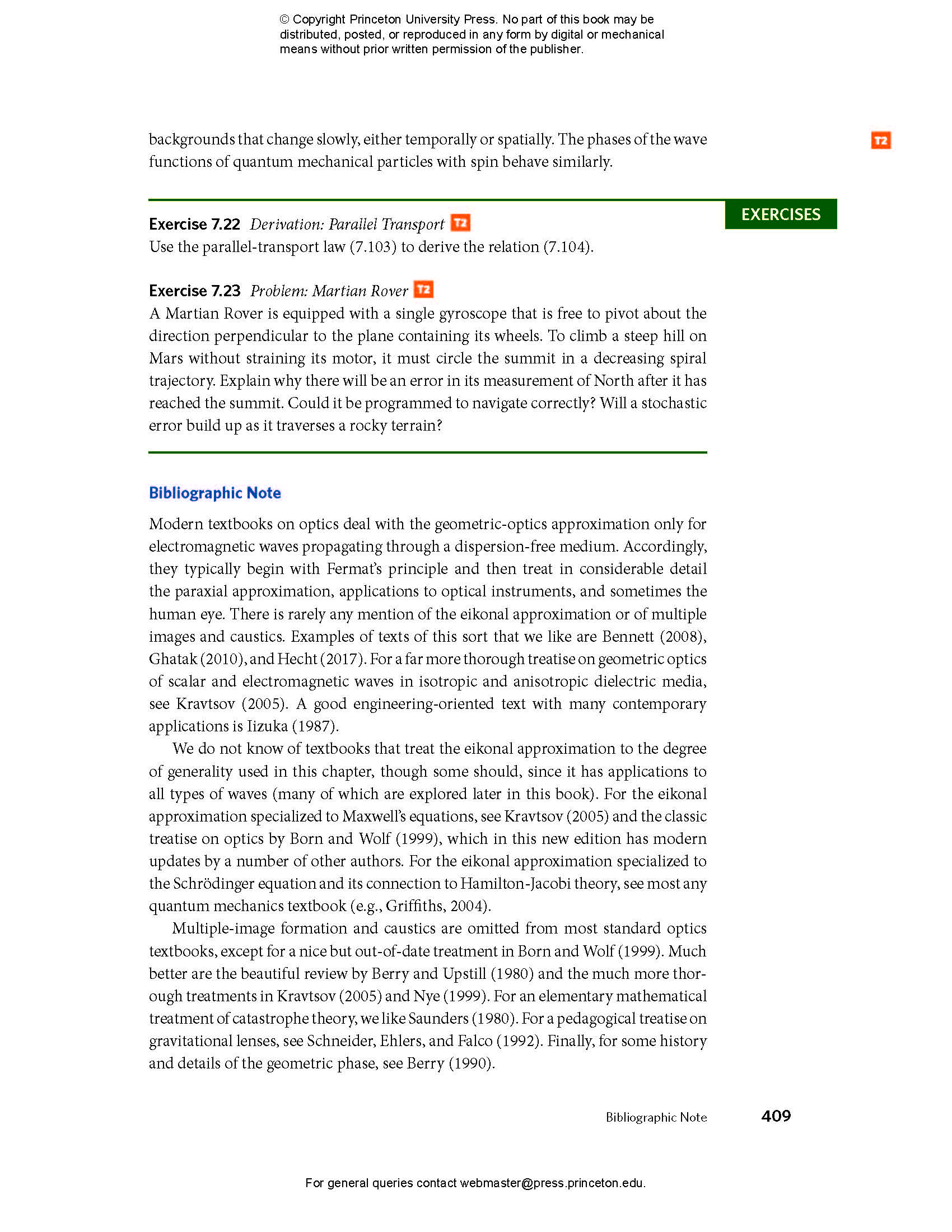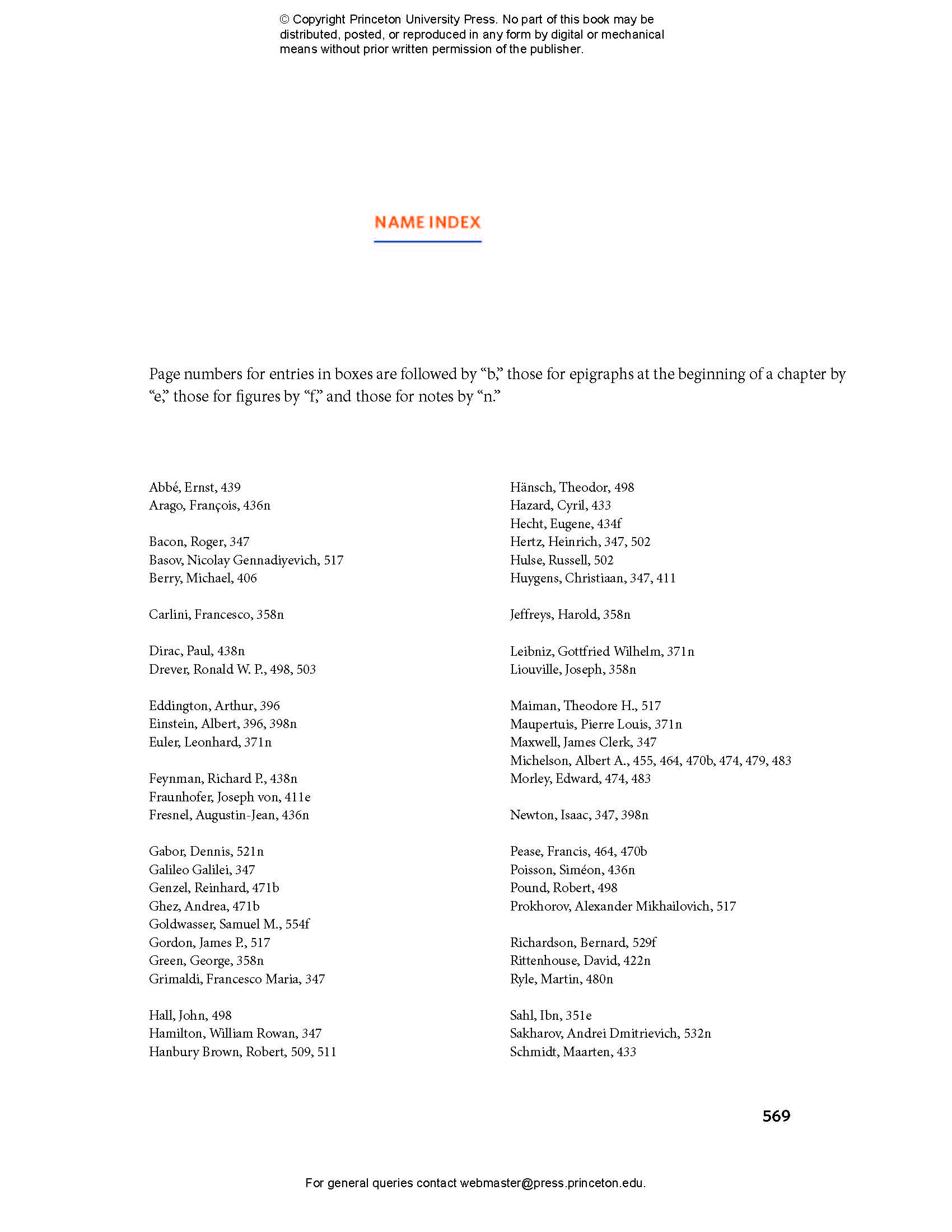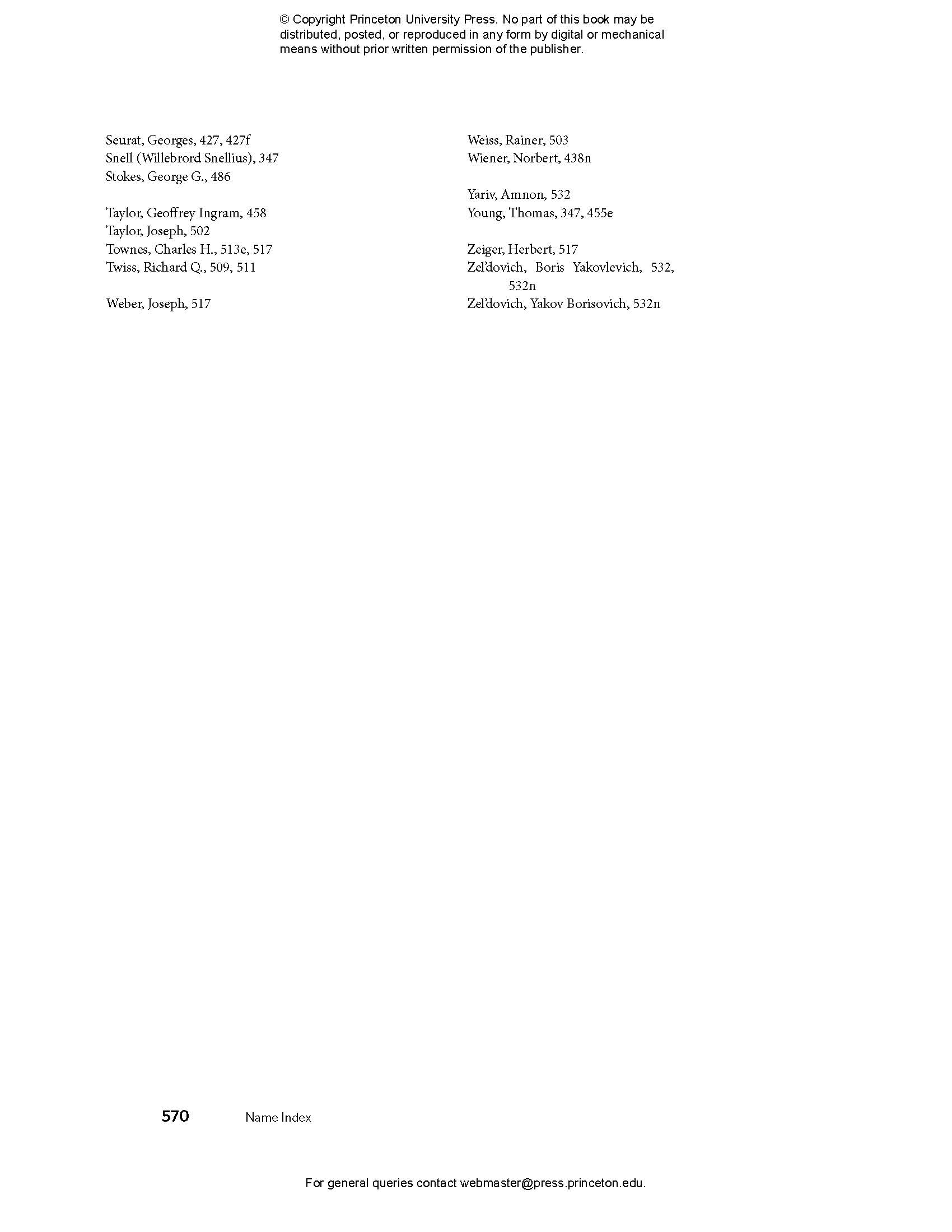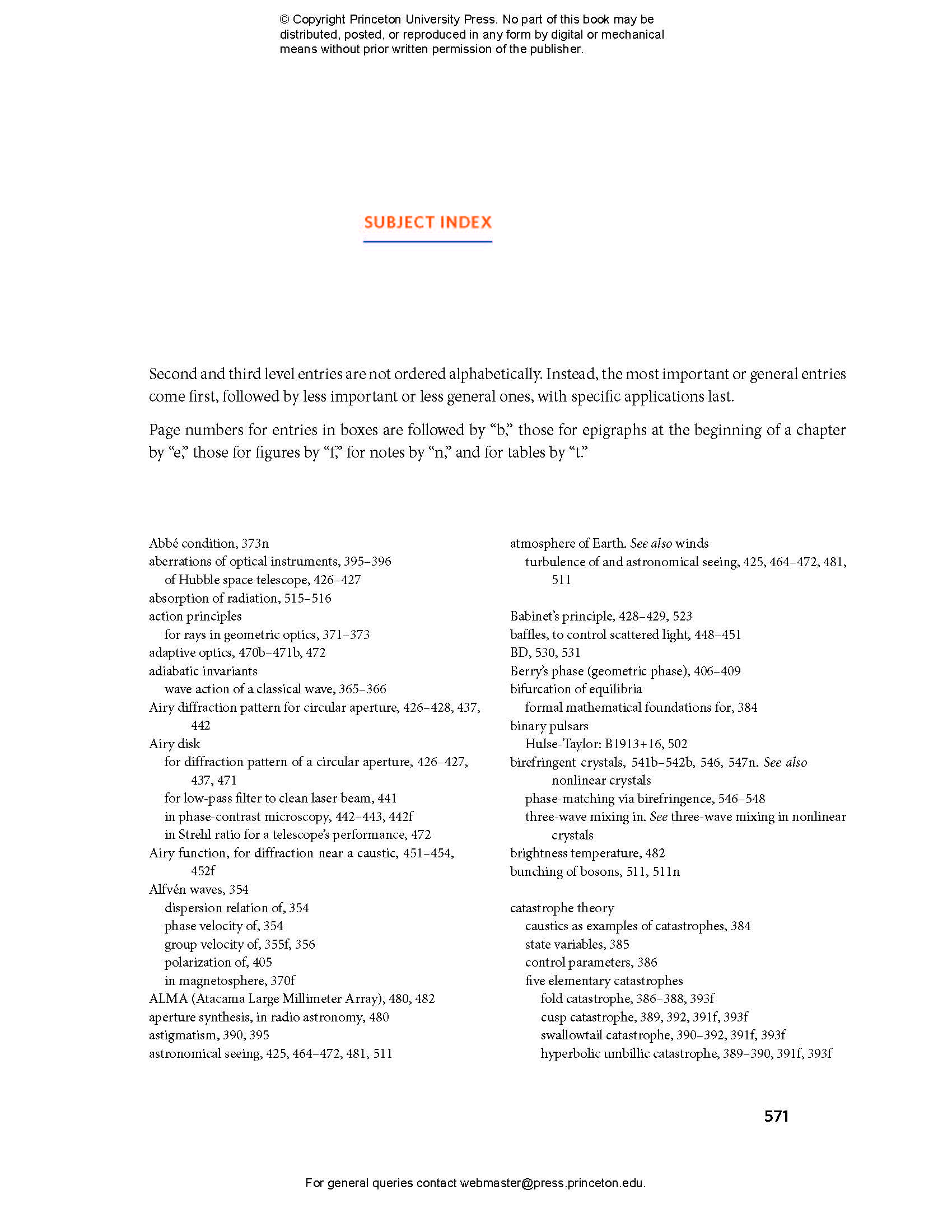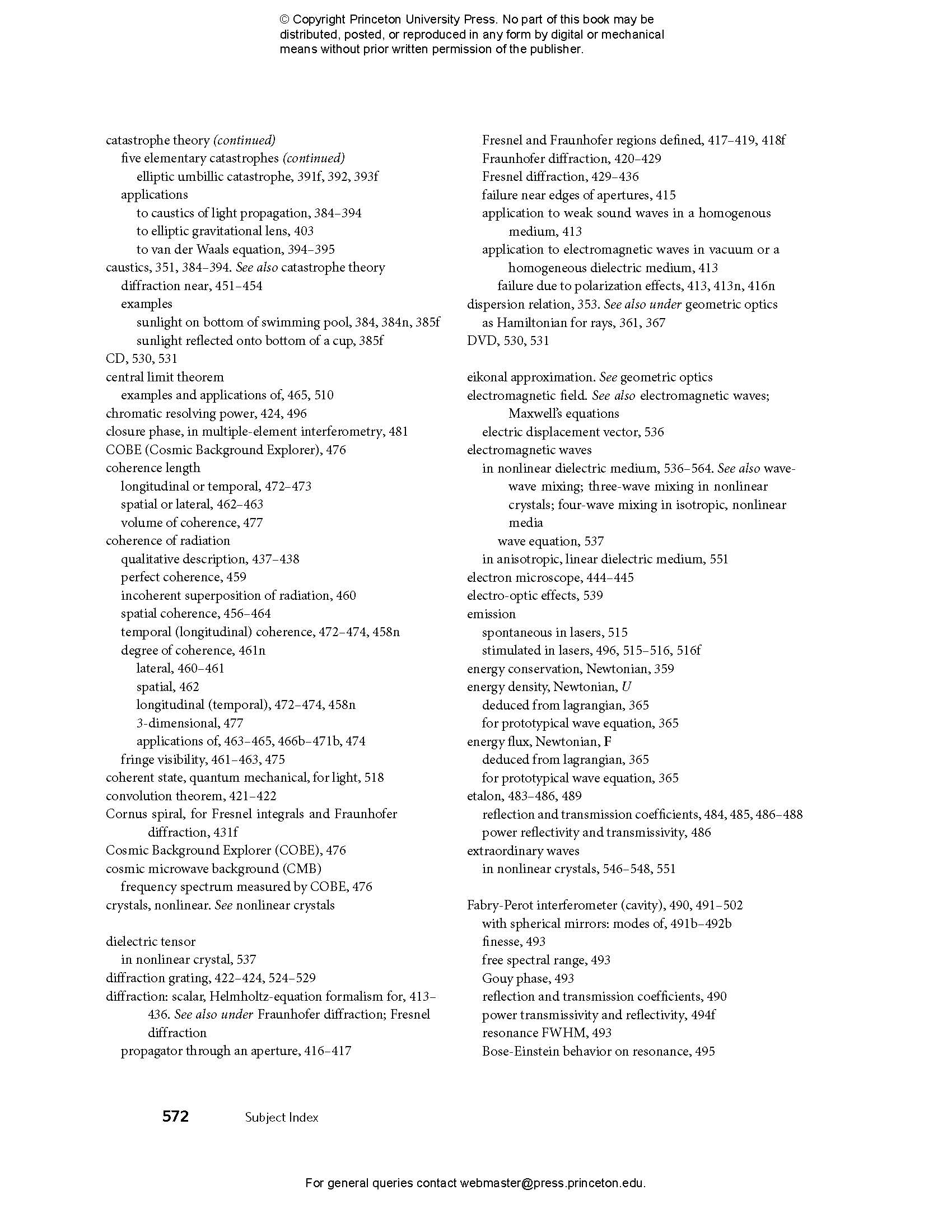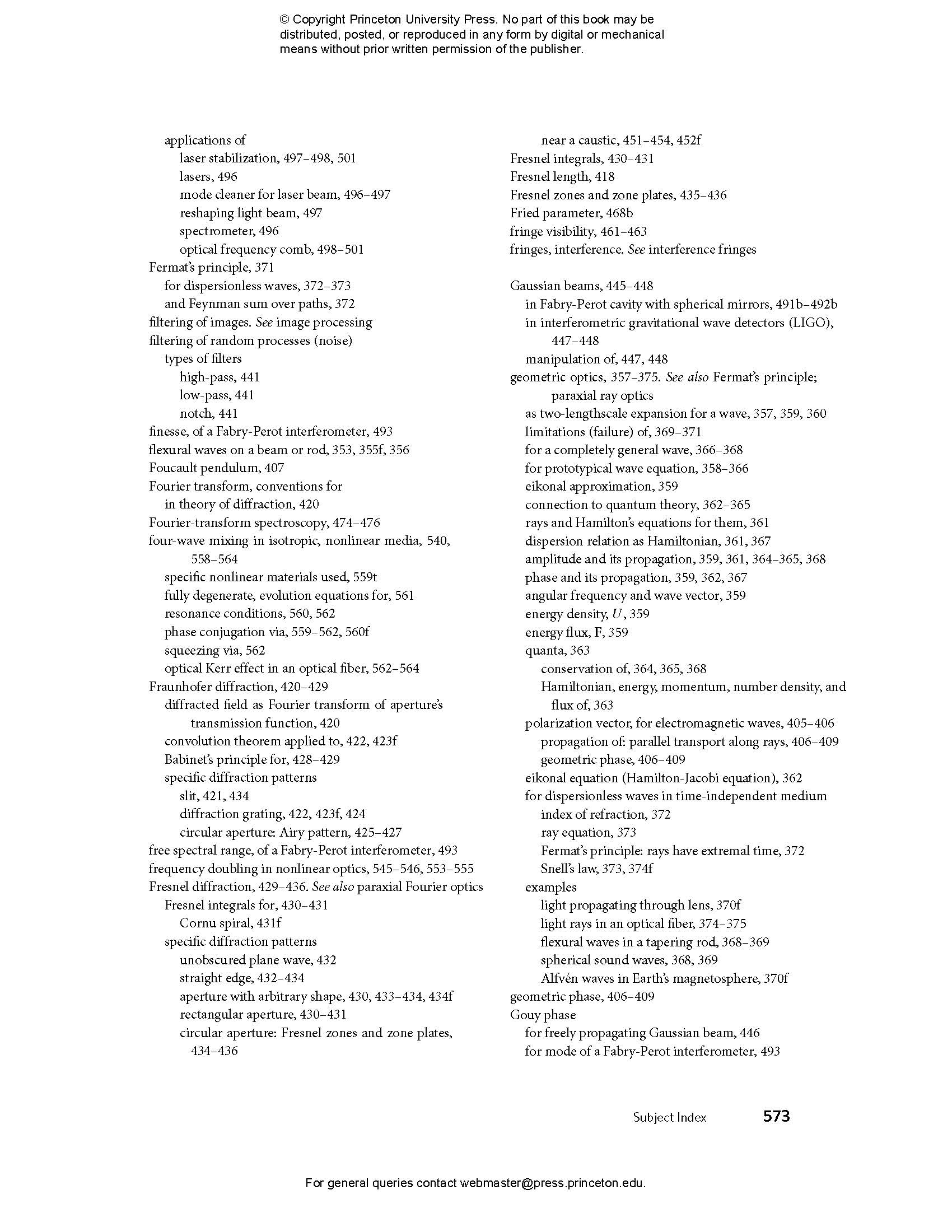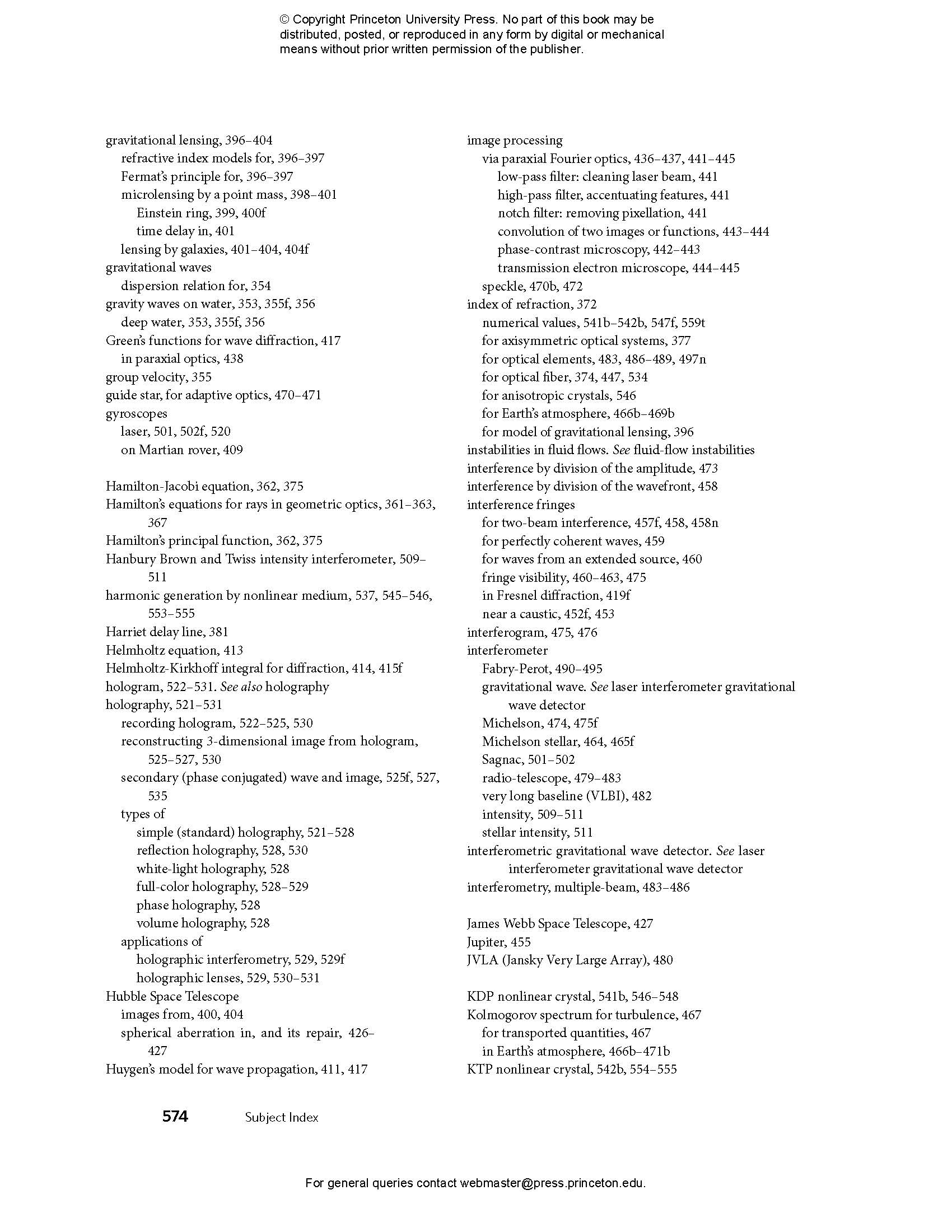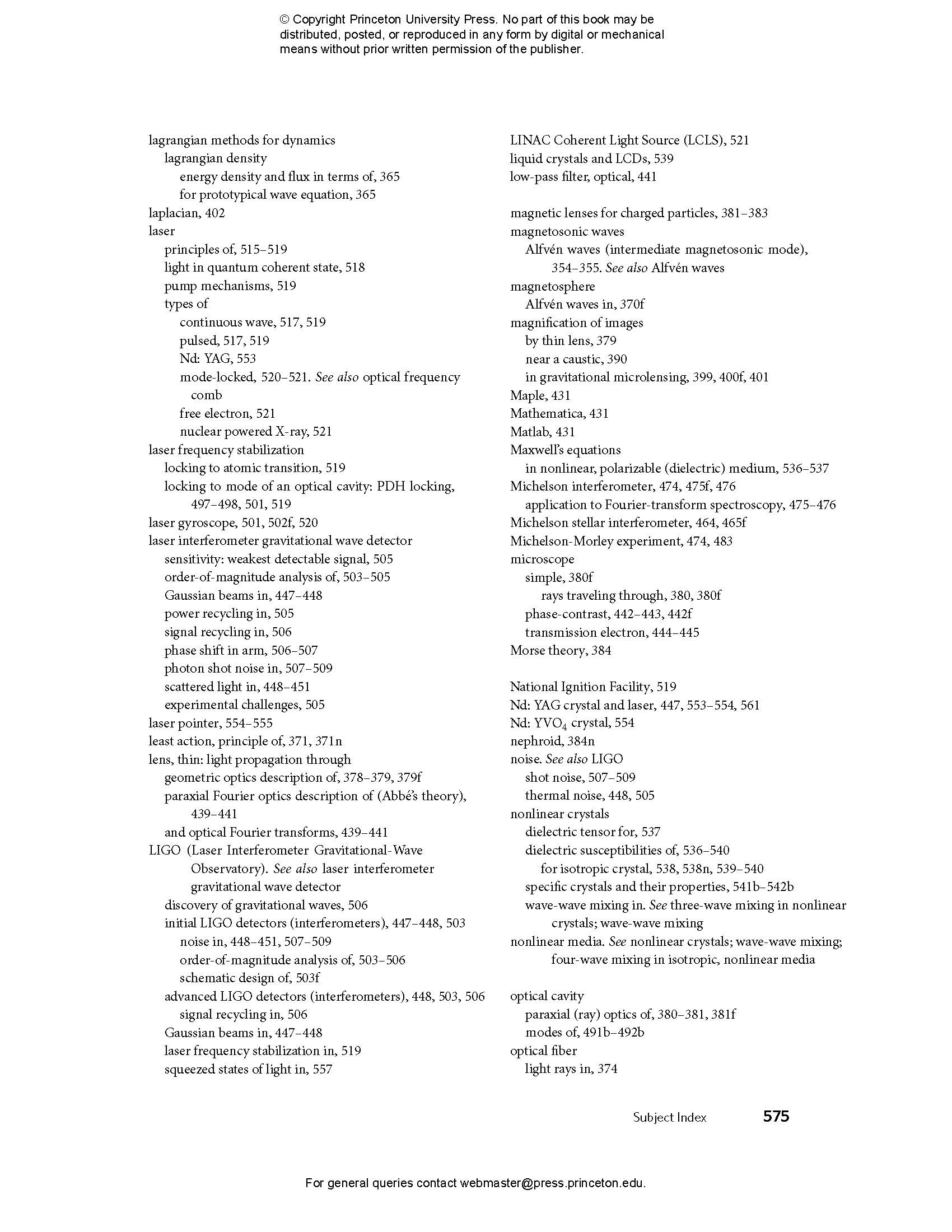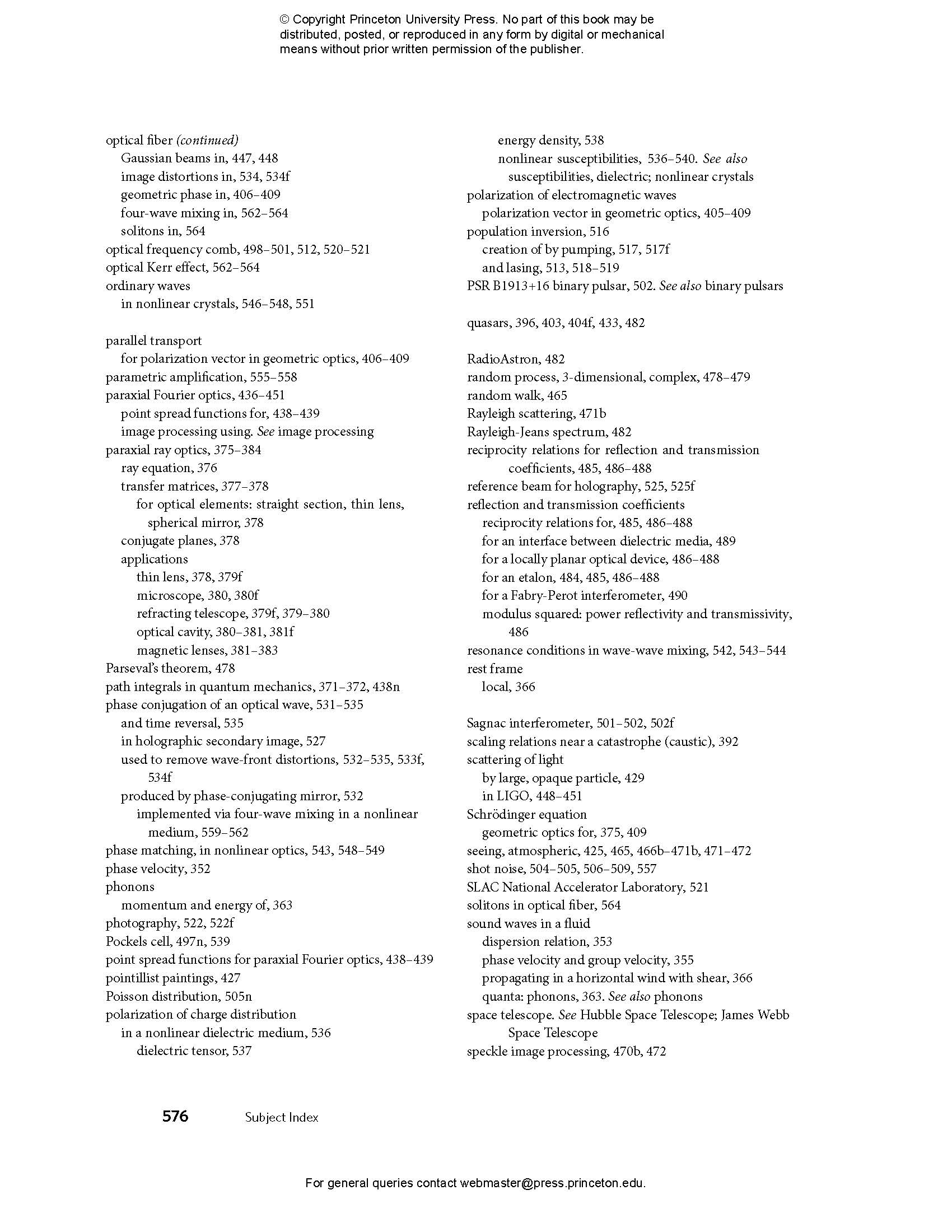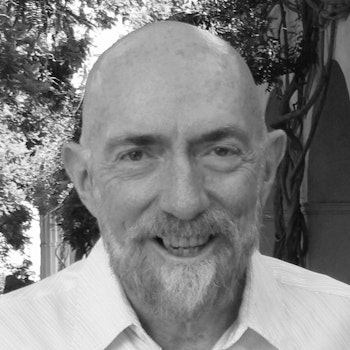Kip Thorne and Roger Blandford’s monumental Modern Classical Physics is now available in five stand-alone volumes that make ideal textbooks for individual graduate or advanced undergraduate courses on statistical physics; optics; elasticity and fluid dynamics; plasma physics; and relativity and cosmology. Each volume teaches the fundamental concepts, emphasizes modern, real-world applications, and gives students a physical and intuitive understanding of the subject.
Optics is an essential introduction to a resurgent subject. “Optics” originally referred to the study of light, but today the field encompasses all types of waves, including electromagnetic waves, from gamma rays to radio waves; gravitational waves; waves in solids, fluids, and plasmas; and quantum waves. The past few decades have seen revolutions in optics—amazing advances in nonlinear optics technology, a growing understanding of optical phenomena throughout the natural world, and an increasing appreciation of the wide-ranging applicability of optics’ central principles. Optics shows how and why this subject—which was once a standard part of physics curricula—should again be routinely taught to physics students, as well as to students in engineering, computer science, and the natural sciences.
- Includes many exercise problems
- Features color figures, suggestions for further reading, extensive cross-references, and a detailed index
- Optional “Track 2” sections make this an ideal book for a one-quarter, half-semester, or full-semester course
- An online illustration package is available to professors
The five volumes, which are available individually as paperbacks and ebooks, are Statistical Physics; Optics; Elasticity and Fluid Dynamics; Plasma Physics; and Relativity and Cosmology.
Awards and Recognition
- Kip S. Thorne, Co-Winner of the 2017 Nobel Prize in Physics
- Roger D. Blandford, Co-Winner of the 2016 Crafoord Prize in Astronomy and Winner of the 2020 Shaw Prize in Astronomy
Kip S. Thorne, winner of the Nobel Prize in physics, is the Feynman Professor Emeritus of Theoretical Physics at Caltech. His books include Gravitation (Princeton) and Black Holes and Time Warps: Einstein’s Outrageous Legacy. Roger D. Blandford, winner of the Crafoord and Shaw prizes in astronomy, is the Luke Blossom Professor in the School of Humanities and Sciences and founding director of the Kavli Institute for Particle Astrophysics and Cosmology at Stanford University.
- List of Boxes
- Preface
- Contents of Modern Classical Physics, volumes 1–5
- PART III OPTICS
- 7 Geometric Optics
- 7.1 Overview
- 7.2 Waves in a Homogeneous Medium
- 7.2.1 Monochromatic Plane Waves; Dispersion Relation
- 7.2.2 Wave Packets
- 7.3 Waves in an Inhomogeneous, Time-Varying Medium: The Eikonal Approximation and Geometric Optics
- 7.3.1 Geometric Optics for a Prototypical Wave Equation
- 7.3.2 Connection of Geometric Optics to Quantum Theory
- 7.3.3 Geometric Optics for a General Wave
- 7.3.4 Examples of Geometric-Optics Wave Propagation
- 7.3.5 Relation to Wave Packets; Limitations of the Eikonal Approximation and Geometric Optics
- 7.3.6 Fermat’s Principle
- 7.4 Paraxial Optics
- 7.4.1 Axisymmetric, Paraxial Systems: Lenses, Mirrors, Telescopes, Microscopes, and Optical Cavities
- 7.4.2 Converging Magnetic Lens for Charged Particle Beam
- 7.5 Catastrophe Optics
- 7.5.1 Image Formation
- 7.5.2 Aberrations of Optical Instruments
- 7.6 Gravitational Lenses
- 7.6.1 Gravitational Deflection of Ligh
- 7.6.2 Optical Configuration
- 7.6.3 Microlensing
- 7.6.4 Lensing by Galaxies
- 7.7 Polarization
- 7.7.1 Polarization Vector and Its Geometric-Optics Propagation Law
- 7.7.2 Geometric Phase
- Bibliographic Note
- 8 Diffraction
- 8.1 Overview
- 8.2 Helmholtz-Kirchhoff Integral
- 8.2.1 Diffraction by an Aperture
- 8.2.2 Spreading of theWavefront: Fresnel and Fraunhofer Regions
- 8.3 Fraunhofer Diffraction
- 8.3.1 Diffraction Grating
- 8.3.2 Airy Pattern of a Circular Aperture: Hubble Space Telescope
- 8.3.3 Babinet’s Principle
- 8.4 Fresnel Diffraction
- 8.4.1 Rectangular Aperture, Fresnel Integrals, and the Cornu Spiral
- 8.4.2 Unobscured PlaneWave
- 8.4.3 Fresnel Diffraction by a Straight Edge: Lunar Occultation of a Radio Source
- 8.4.4 Circular Apertures: Fresnel Zones and Zone Plates
- 8.5 Paraxial Fourier Optics
- 8.5.1 Coherent Illumination
- 8.5.2 Point-Spread Functions
- 8.5.3 Abbé’s Description of Image Formation by a Thin Lens
- 8.5.4 Image Processing by a Spatial Filter in the Focal Plane of a Lens: High-Pass, Low-Pass, and Notch Filters; Phase-Contrast Microscopy
- 8.5.5 Gaussian Beams: Optical Cavities and Interferometric Gravitational-Wave Detectors
- 8.6 Diffraction at a Caustic
- Bibliographic Note
- 9 Interference and Coherence
- 9.1 Overview
- 9.2 Coherence
- 9.2.1 Young’s Slits
- 9.2.2 Interference with an Extended Source: Van Cittert-Zernike Theorem
- 9.2.3 More General Formulation of Spatial Coherence; Lateral Coherence Length
- 9.2.4 Generalization to 2 Dimensions
- 9.2.5 Michelson Stellar Interferometer; Astronomical Seeing
- 9.2.6 Temporal Coherence
- 9.2.7 Michelson Interferometer and Fourier-Transform Spectroscopy
- 9.2.8 Degree of Coherence; Relation to Theory of Random Processes
- 9.3 Radio Telescopes
- 9.3.1 Two-Element Radio Interferometer
- 9.3.2 Multiple-Element Radio Interferometers
- 9.3.3 Closure Phase
- 9.3.4 Angular Resolution
- 9.4 Etalons and Fabry-Perot Interferometers
- 9.4.1 Multiple-Beam Interferometry; Etalons
- 9.4.2 Fabry-Perot Interferometer and Modes of a Fabry-Perot Cavity with Spherical Mirrors
- 9.4.3 Fabry-Perot Applications: Spectrometer, Laser, Mode-Cleaning Cavity, Beam-Shaping Cavity, PDH Laser Stabilization, Optical Frequency Comb
- 9.5 Laser Interferometer Gravitational-Wave Detectors
- 9.6 Power Correlations and Photon Statistics: Hanbury Brown and Twiss Intensity Interferometer
- Bibliographic Note
- 10 Nonlinear Optics
- 10.1 Overview
- 10.2 Lasers
- 10.2.1 Basic Principles of the Laser
- 10.2.2 Types of Lasers and Their Performances and Applications
- 10.2.3 Ti:Sapphire Mode-Locked Laser
- 10.2.4 Free Electron Laser
- 10.3 Holography
- 10.3.1 Recording a Hologram
- 10.3.2 Reconstructing the 3-Dimensional Image from a Hologram
- 10.3.3 Other Types of Holography; Applications
- 10.4 Phase-Conjugate Optics
- 10.5 Maxwell’s Equations in a Nonlinear Medium; Nonlinear Dielectric Susceptibilities; Electro-Optic Effects
- 10.6 Three-Wave Mixing in Nonlinear Crystals
- 10.6.1 Resonance Conditions for Three-Wave Mixing
- 10.6.2 Three-Wave-Mixing Evolution Equations in a Medium That Is Dispersion-Free and Isotropic at Linear Order
- 10.6.3 Three-Wave Mixing in a Birefringent Crystal: Phase Matching and Evolution Equations
- 10.7 Applications of Three-Wave Mixing: Frequency Doubling, Optical Parametric Amplification, and Squeezed Light
- 10.7.1 Frequency Doubling
- 10.7.2 Optical Parametric Amplification
- 10.7.3 Degenerate Optical Parametric Amplification: Squeezed Light
- 10.8 Four-Wave Mixing in Isotropic Media
- 10.8.1 Third-Order Susceptibilities and Field Strengths
- 10.8.2 Phase Conjugation via Four-Wave Mixing in CS2 Fluid
- 10.8.3 Optical Kerr Effect and Four-Wave Mixing in an Optical Fiber
- Bibliographic Note
- References
- Name Index
- Subject Index
- Contents of the Unified Work, Modern Classical Physics
- Preface to Modern Classical Physics
- Acknowledgments for Modern Classical Physics
“Extraordinarily impressive.”—Malcolm Longair, Nature
“A magnificent achievement.”—Edward Witten, Physics Today
